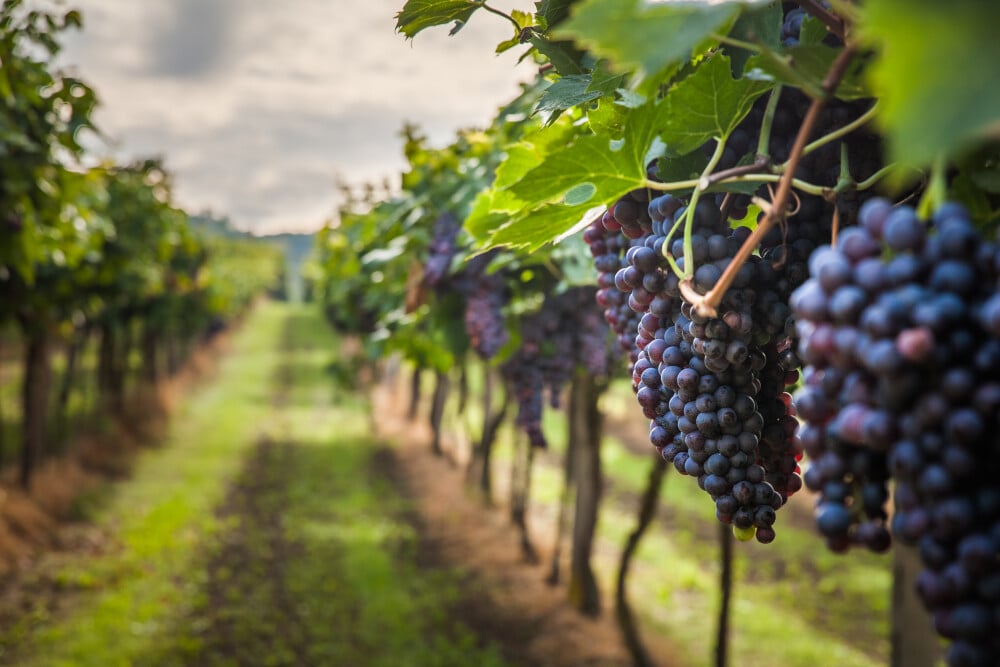
Grapes
There are hundreds of grape varieties that are used for making wine. These grape varieties can be divided into two types: blue grapes and white grapes.
Most commercially known wines are made from a few dozen different grape varieties. On this page you can find an overview of the most famous grape varieties.
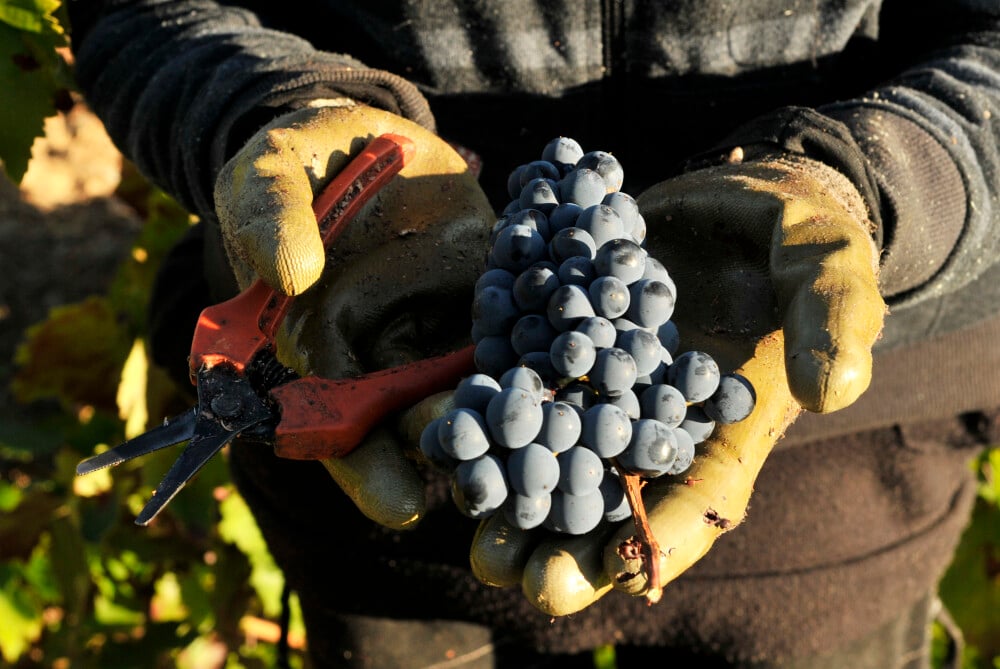
Blue Grapes or Blue Grape Varieties
Red wines are made from blue grape varieties. It sounds a bit confusing, but the color of the grapes from which red wine is made is blue.
The best known blue grape varieties are Cabernet Sauvignon, Merlot, Pinot Noir and Shiraz. These typical French grape varieties are now grown all over the world and, depending on the climate, yield wonderful results.
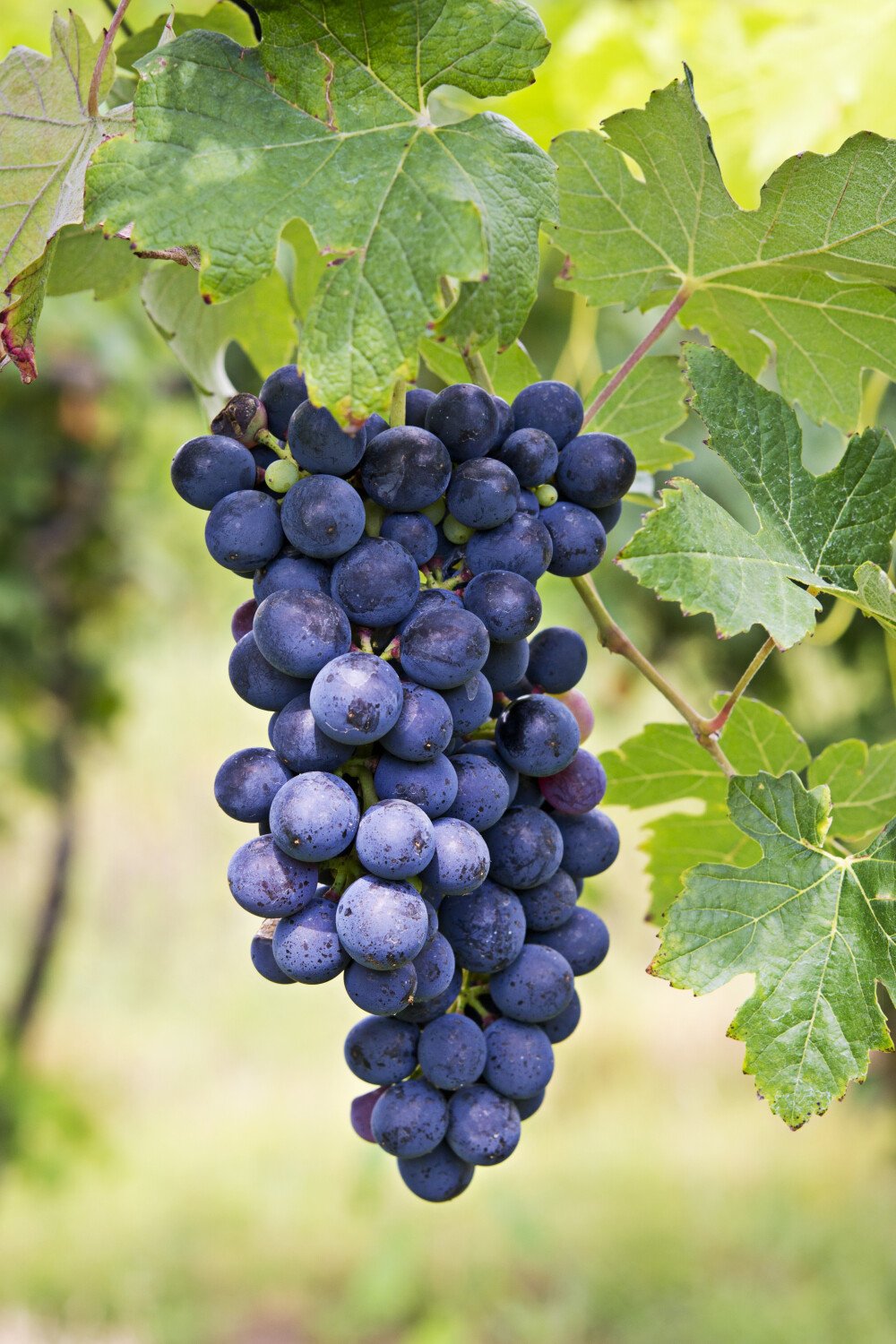
Barbera
Barbera is synonymous with Piedmont alongside Nebbiolo and Dolcetto. Known for ease of cultivation, it appears in both blended and varietal wines, but its high acidity often makes it a preferred choice for blends.
Over the past two centuries, Barbera has ventured beyond Italy, finding a home in South Africa, Australia, Argentina, and California—likely tracing the paths of Italian migration.
Taste
Barbera wines exhibit a notably deeper colour compared to those crafted from the Nebbiolo grape.
Young Barbera varies from Nebbiolo as they exhibit softer tannins, characterized by a red cherry, when they are matured and aged for few years, it turns to a sour-cherry note.
Younger Barbera tends towards more red fruit, and the riper once tent towards black fruit. Barbera can also have spices such as anise and black pepper as well as floral aromas like violets.
Other
The grape's elevated acidity proves well-suited for warm climates, ensuring the wines maintain their freshness even in high temperatures.
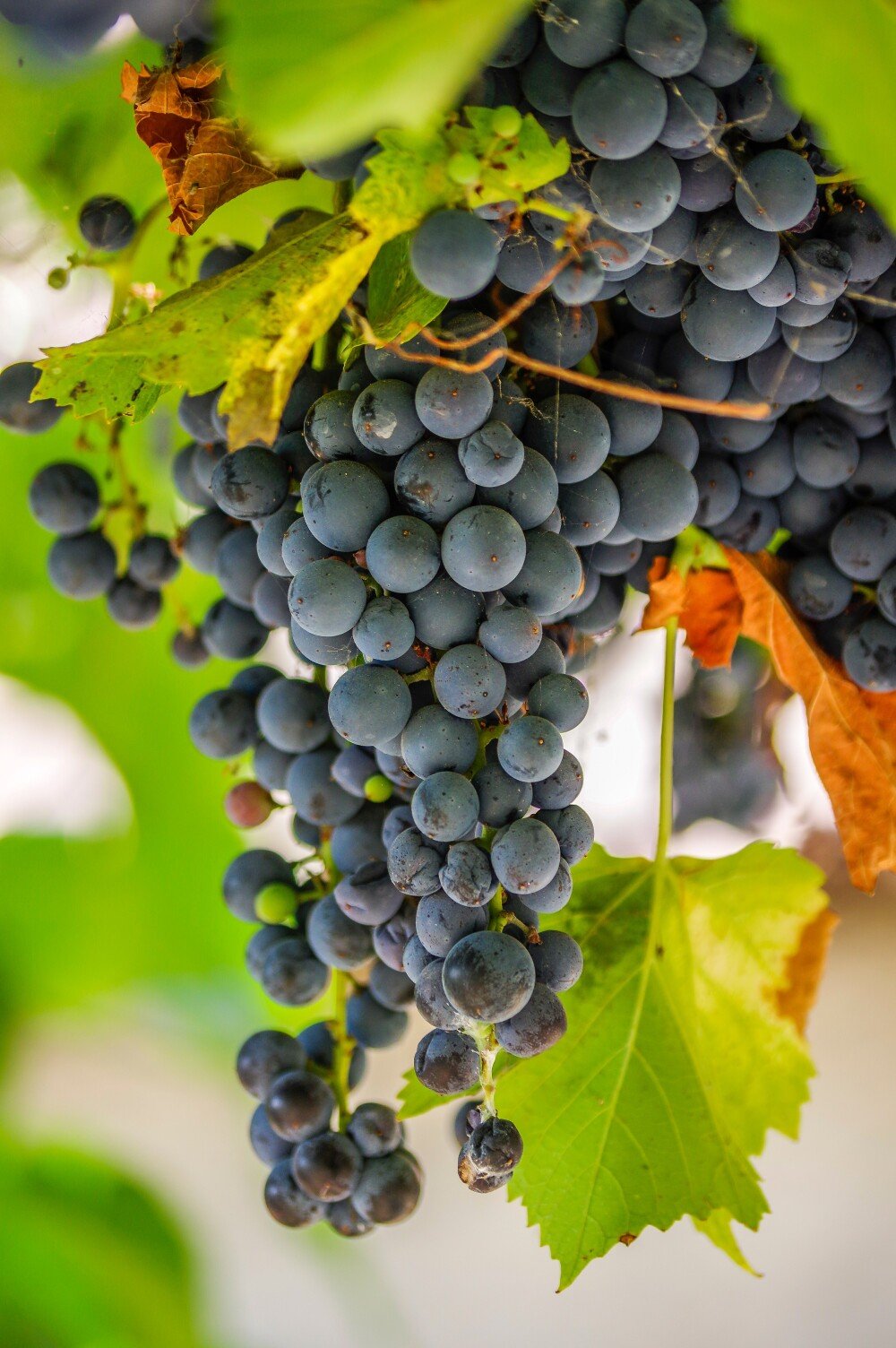
Blaufränkisch
Blaufränkisch, a key Central European grape variety, is prominent in Südburgenland (Eisenberg), Mittelburgenland (Blaufränkischland), and Leithaberg. In Austria, it is the second most popular red wine variety after Zweigelt. Additionally known as Limburger or Lemberger, especially in Germany and the United States, but it is cultivated in limited quantities in the United States. Classic Austrian Blaufrankisch wines are characterized by intense colour, medium-bodied.
Taste
Predominantly characterized by dark fruit, including forest berries, blackberries, and spices, with underlying, red-fruited notes, accompanied by a robust acidity inherent to this grape variety.
Other
In the vineyard, Blaufrankisch exhibits early bud break, late ripening, and generous yields. Its full maturation requires a warm environment, elucidating its prevalence in wine regions proximate to the heat of the Pannonian Plain in Central Europe.

Cabernet Franc
The distant ancestor of Cabernet Sauvignon that is particularly popular in the Bordeaux, the Loire and since a couple of years also on the rise in Italy. In the Bordeaux it is often used in blends to make wines smooth and round. On the right bank of the Bordeaux, especially in the colder clay soils, it often forms the basis of the final taste of the wine. Chateau Cheval Blanc is a very good example of this. Also several 100% Cabernet Franc are made, the most famous examples are the Clos Rougeard from the Loire, and the Paleo Rosso from Le Macchiole.
Taste
Cabernet Franc is mainly characterized by hints of forest fruits (strawberry and blackcurrant), pepper and pencil shavings. Also, wines from Cabernet Franc can be very perfumed.
Other
Because of the smaller sized fruit, in comparisson with the Cabernet Sauvignon or Merlot, the Cabernet Franc taks longer to reach full ripeness. This is one of the main reasons for its growing success in Italy, espcially in the Tuscan hills. The temperatures can get relatively high in this area, and the slower riping Cabernet Franc can easily withstand these hot weather and reach perfect ripeness when other grapes might be too ripe.
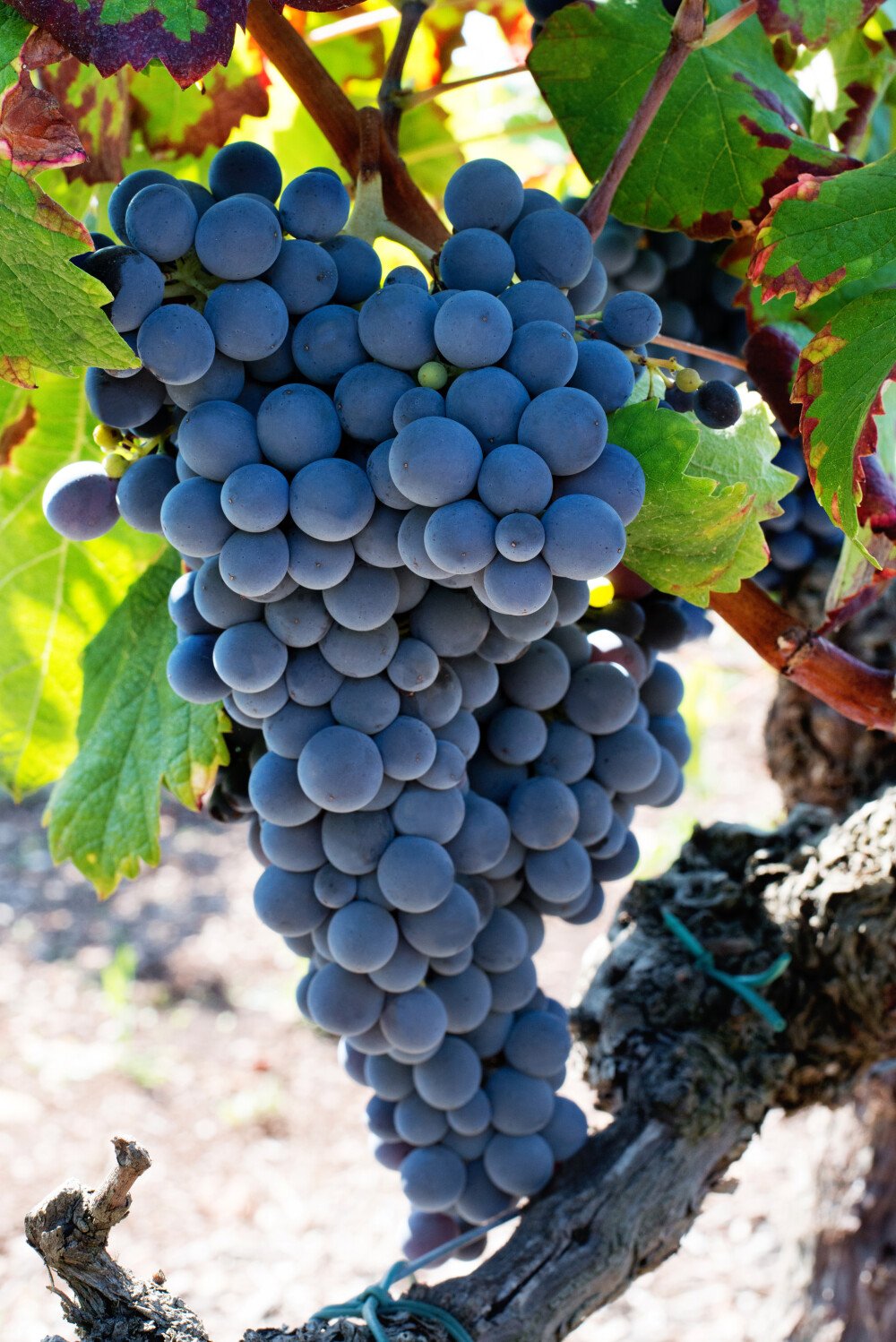
Cabernet Sauvignon
This is the best known and most accepted grape variety, both in taste and for cultivation. Cabernet Sauvignon gives its typical aromas, power and colour. The wines made from the Cabernet Sauvignon can have strong tannins and good maturation possibilities.
Taste
Cabernet Sauvignon typically covers a wide range of flavors but a clear characteristic is the black fruit (blackseed, cassis). In addition wines from the Cabernet Sauvignon also offer the typical dark (toasted) tones (tobacco and chocolate) and spices. If cabernet sauvignon is not fully matured, it can have some vegetable elements, such as green peppers.
Other
The wines are extremely suitable for mturation on wooden barrels, usually offering a hint of vanilla from the oak wood. In addition the Cabernet Sauvignon is a grape that blends very well with other grapes, oftenly creating beautiful combinations. This is also one of the key components in many of the classic blends. For example this is a key component for the left bank Bordeaux Blend. The typical elements of Cabernet Sauvignon (stiffness, strength) are supplemented by the specific flavour elements (often softness, roundness) of other grape varieties (e.g. Merlot and Syrah). In Bordeaux, Cabernet Sauvignon is almost always mixed with Merlot, in the southern hemisphere often with Syrah (also called Shiraz).
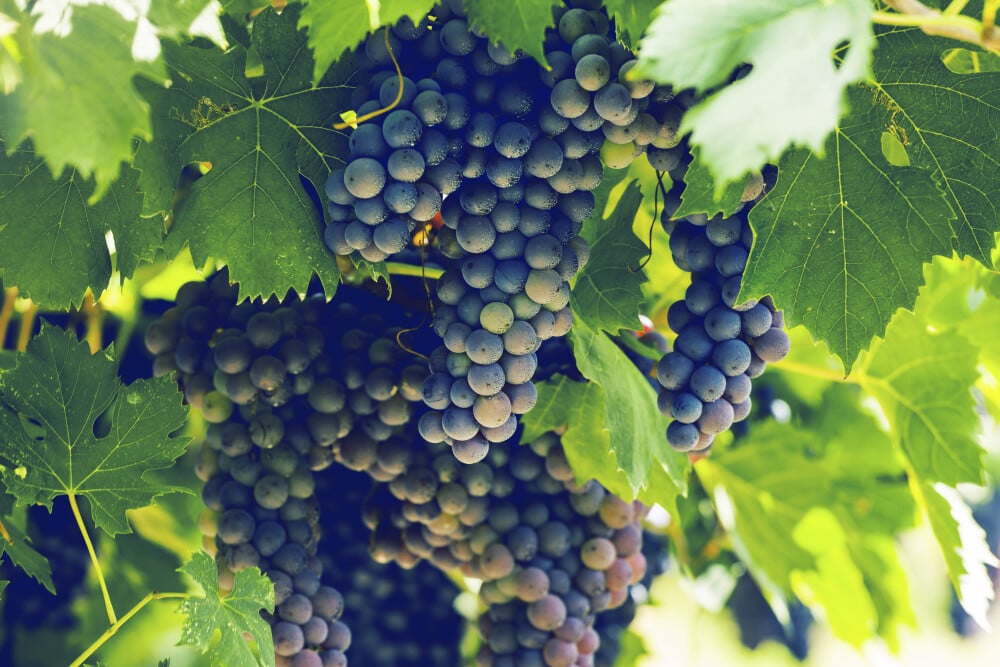
Canaiolo
Canaiolo, also known as Canaiolo Nero or Uva Canina, is a red grape native to Central Italy, notably in Tuscany. Thriving in warm climates and hilly areas, it ripens moderately, yielding a ruby-red wine with prominent alcohol and low acidity. Primarily used in blends, it enhances wines across central Italy, particularly in Chianti, where it adds flavour and aroma when blended with Sangiovese. Canaiolo Nero improves the smoothness of Chianti, harmonizing with Sangiovese to create balanced blends.
Taste
Canaiolo often exhibits notes of red fruit (cherry and raspberry), hints of spices and tabacco. Generally, it has a medium body and a moderate tannic profile, making it well-suited for Chianti.
Other
Canaiolo possesses a notable attribute: it can undergo drying without succumbing to rot. Local winemakers discovered that a fermentation process halted by cold temperatures could be revived by introducing semi-dried Canaiolo grapes into the tank.

Carmenere
Predominantly grown in Chile's Colchagua Valley, Carmenere originated in Bordeaux, France. Its name, derived from "carmin," reflects its crimson leaves before autumn. Historically known as "Biturica" in Bordeaux and "Predicato di Biturica" in Tuscany, it's also called "Vidure," indicating a Cabernet Sauvignon clone.
Carmenere wines flourish in Chile's ideal climate, and are also produced in Italy, Argentina, New Zealand, the United States, and France, with limited cultivation in Bordeaux, Napa Valley, Sonoma, and Virginia.
Taste
Flavour elements in Carmenere wines include green bell pepper, tobacco, leather, and a hint of dark chocolate, resulting in a bold, fruity wine with a deep violet colour, best enjoyed in its youth.
Fully ripened wines may exhibit spice, herbal elements, and black and red fruit notes, with the focus shifting between red and black fruit depending on ripeness.
Other
Slow-ripening and demanding ample sunlight, it struggles in the cooler, wetter springs of France, facing vulnerabilities to coulure and mildew.
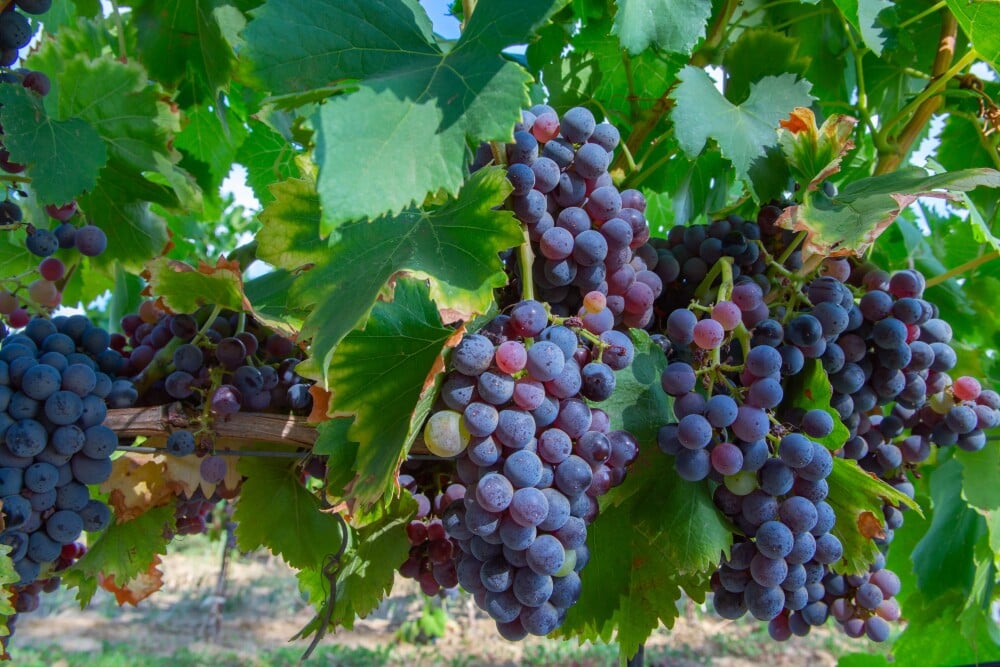
Carignan
Carignan, a black-skinned grape likely native to Aragon, plays a crucial role in Mediterranean winemaking. Thriving in warm climates, it contributes high tannins, acidity, and colour to blends, enhancing aroma and flavour. Historically significant in France's Languedoc, it now excels in warmer Mediterranean regions like Spain, Italy, and California, adapting to diverse terroirs.
This versatile wine grape goes by many names: Carignan in France, Mazuelo or Cariñena in Spain, Carignane in the USA, and Carignano in Italy.
Taste
Carignan wines typically exhibit bright acidity, gritty tannins, and notes of bitter spice and dry herbs, complementing red and black fruit flavors. In Spain, warm climates and shale/limestone soils impart refined minerality to Carignan varietal wines and blends.
Other
Carignan vines yield large quantities but are vulnerable to mildew and rot. It requires warmer climates for proper maturation, often budding and ripening late. Old vine Carignan is preferred for its superior taste. g to diverse terroirs.
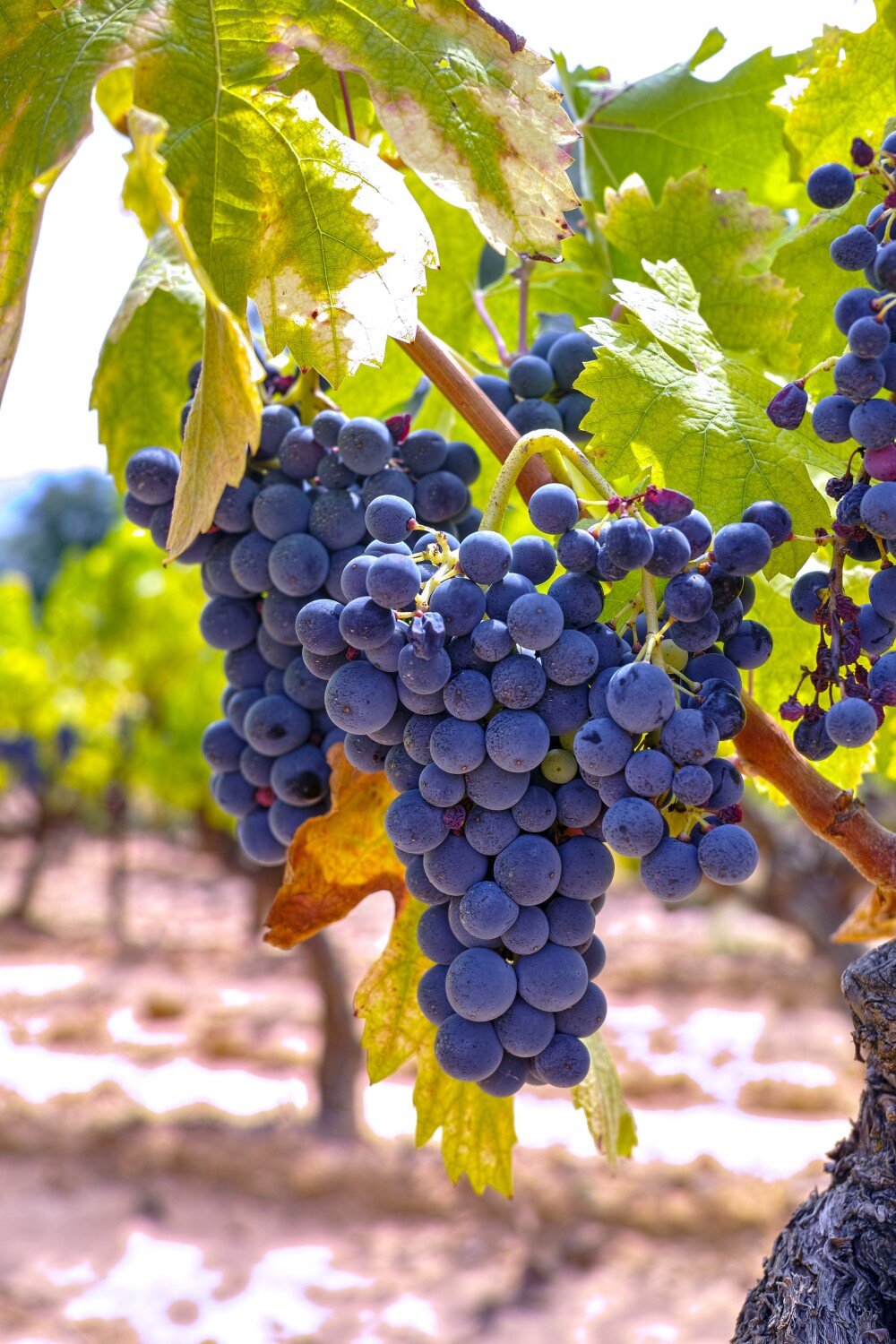
Cinsault
Cinsault plays an important role in Châteauneuf-du-Pape blends and is widely utilized for crafting Provence's renowned rosé wines. In Southern Rhône, it traditionally partners with Grenache, Syrah, and Mourvèdre. Cinsault thrives in North Africa's arid climates, dominating production in Morocco and playing a significant role in Algeria and Tunisia. Australia, notably McLaren Vale, provides ideal growing conditions, where it is often referred to as Blue Imperial due to its grape skin colour.
In its varietal expression, Cinsault yields a gentle wine characterized by a low tannin content and it has a lighter, brick red a pale, brick-red tone. Typically, Cinsault is encountered in blends rather than as a standalone varietal.
Taste
Cinsault combines qualities of Grenache and Pinot Noir, presenting a light colour with vibrant aromas of red berry fruits (like, strawberry, red cherry, and plum). While not heavily structured, it can develop complexity over time, revealing savoury and smoky notes like tobacco and tar.
Other
Cinsault played a pivotal role in the creation of South Africa’s signature wine, Pinotage. In 1925, chemist Abraham Izak Perold crossed Cinsault with Pinot Noir.
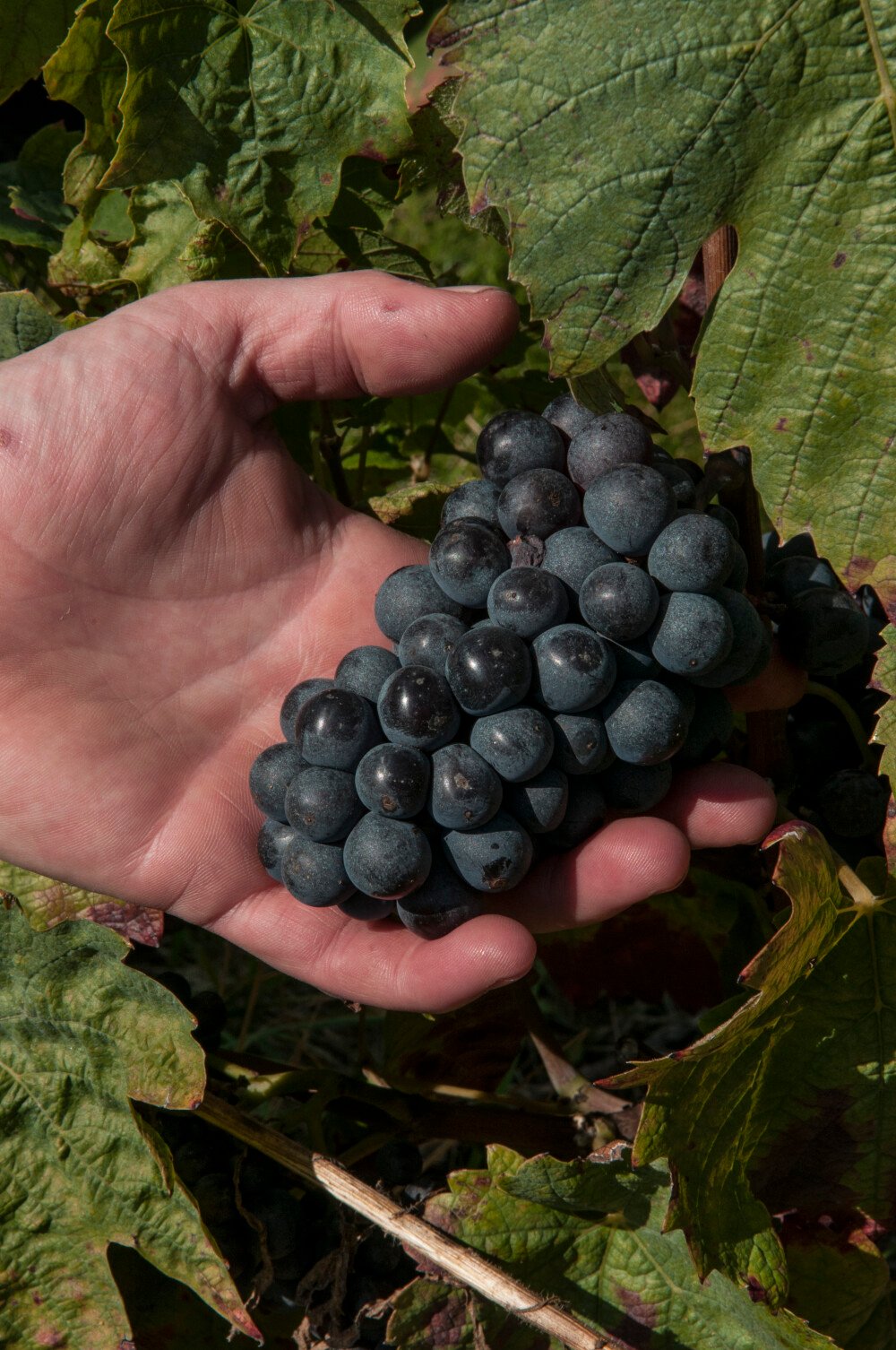
Gamay
The Gamay grape stands for the Beaujolais. From simple Beaujolais primeur wines to beautiful cru-wines. The best Beaujolais Cru wines can ripen for a long time. In the rest of the world, the Gamay grape is used rarely.
Taste
In Gamay wines, red fruit (strawberry, raspberry) with some floral tones are dominant. Especially the freshness and fruitiness is characteristic of Gamay wines.
Other
The more simple Gamay wines are often slightly chilled (14 to 16 degrees Celsius).
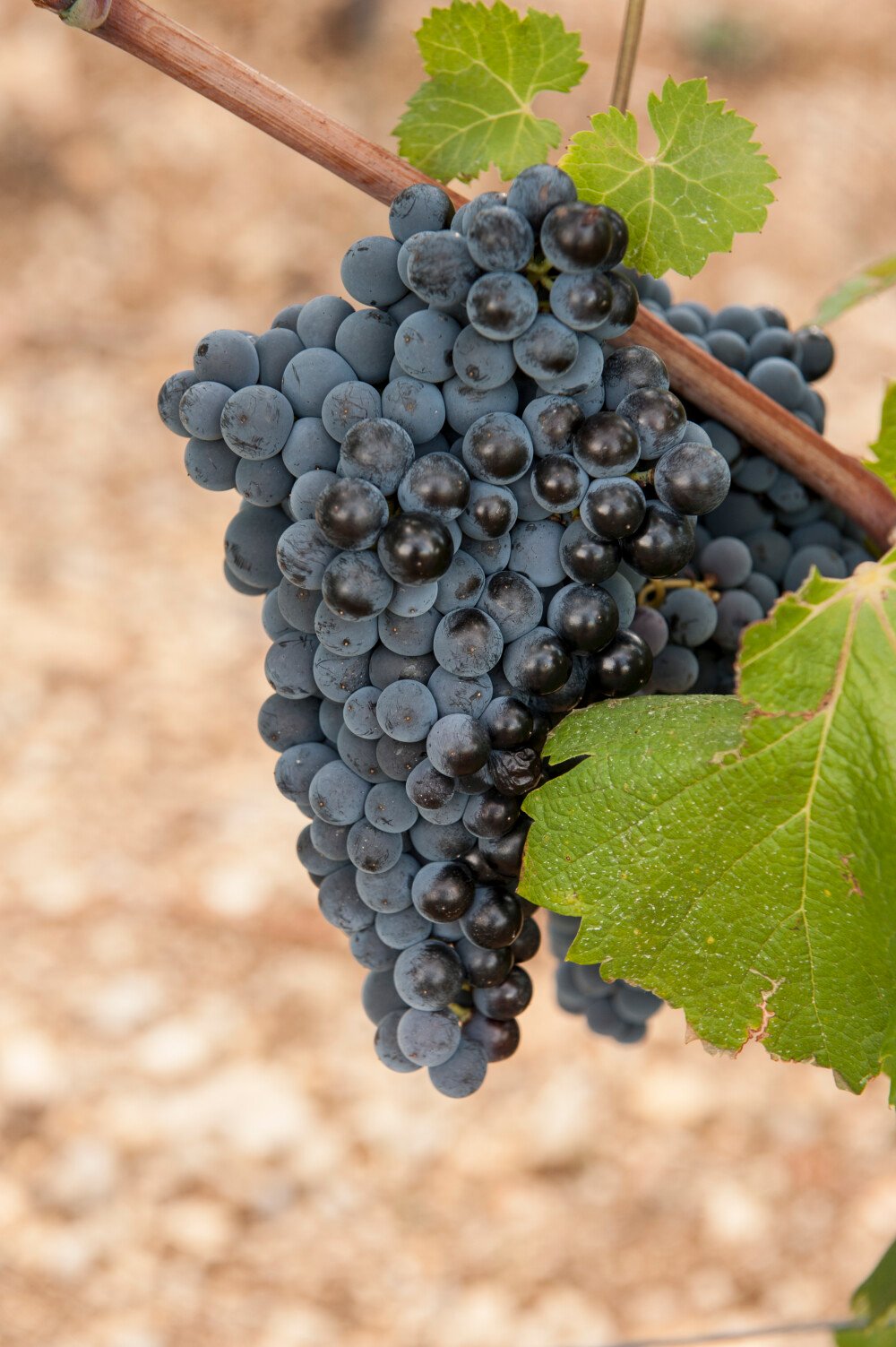
Grenache
Grenache or Garnacha in Spain, is thriving in warm, dry Mediterranean climates, it's prevalent in southern France, Spain, Australia, South America, and California, including Rioja wines.
Grenache excels in blends and contributes to traditional Rioja wines. Its appeal lies in full body and perceived sweetness, attributed to elevated alcohol and glycerol levels. Thriving in hot, dry vineyards, it ages well, playing a crucial role in Rhône Villages, Châteauneuf-du-Pape, and Garnacha wines in northern Spain.
Taste
Crafted as a varietal wine, showcases rich, spicy berry flavors, notably raspberry. Wines from hot regions may display warmth and cooked fruit characteristics. In Grenache, Syrah, Mourverdre (GSM) blends, the pepper notes from Syrah can occasionally take prominence.
Other
Greanche, with medium-early ripening, thrives in diverse soils and extreme temperatures, resulting in varied expressions. Red Grenache is globally popular, yielding red, sweet, and rosé wines but sensitive to pests and intolerant to wet, cold soils, yet resilient to wind and drought. White Grenache, a mutation, shares traits but is sensitive to humidity. Grey Grenache, rare and found in Aragon and Roussillon, produces pale pink wines with citrus notes.
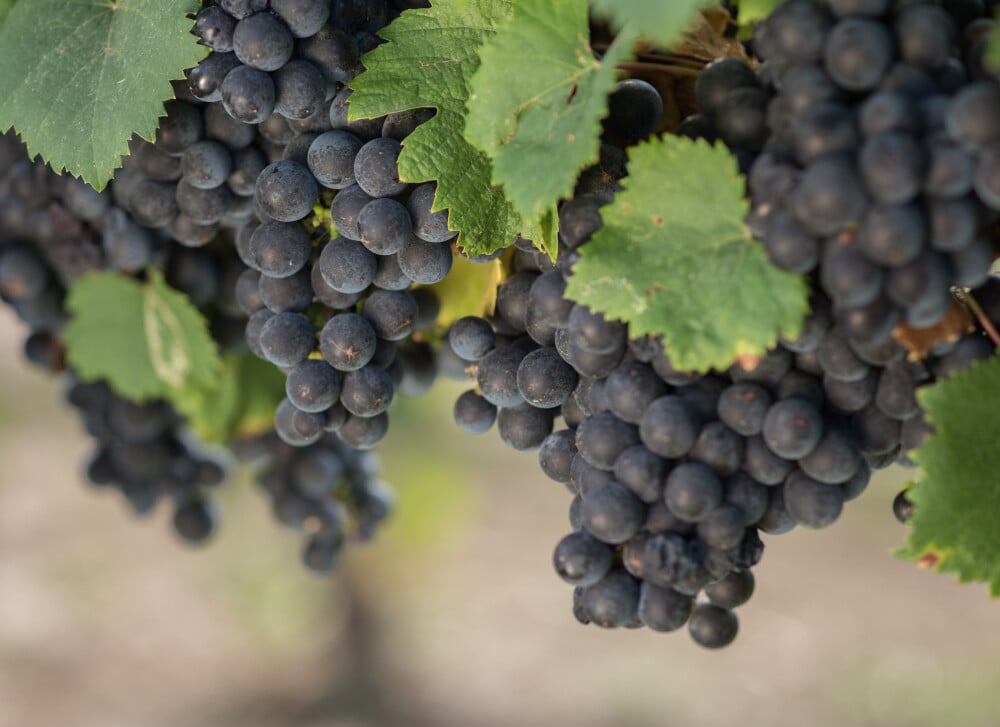
Malbec
The Malbec grape is deep purple, dark colored and tannin rich. It is a very fruit forward grape. Malbec from France (Europe) is more robust and tannin rich than the variety grown in, for example, South America.
Taste
The wines made from Malbec can be very fruity and juicy, especially the South American Malbec variety. The European variety is more tannin rich and meaty. Typical flavours are black berry, red plum, black currant, chocolate, vanilla, tabacco.
Other
The malbec grape is a variety that is permitted to be blended in a Bordeaux wine. It is a grape that is particularly appreciated by wines coming from Argentina.
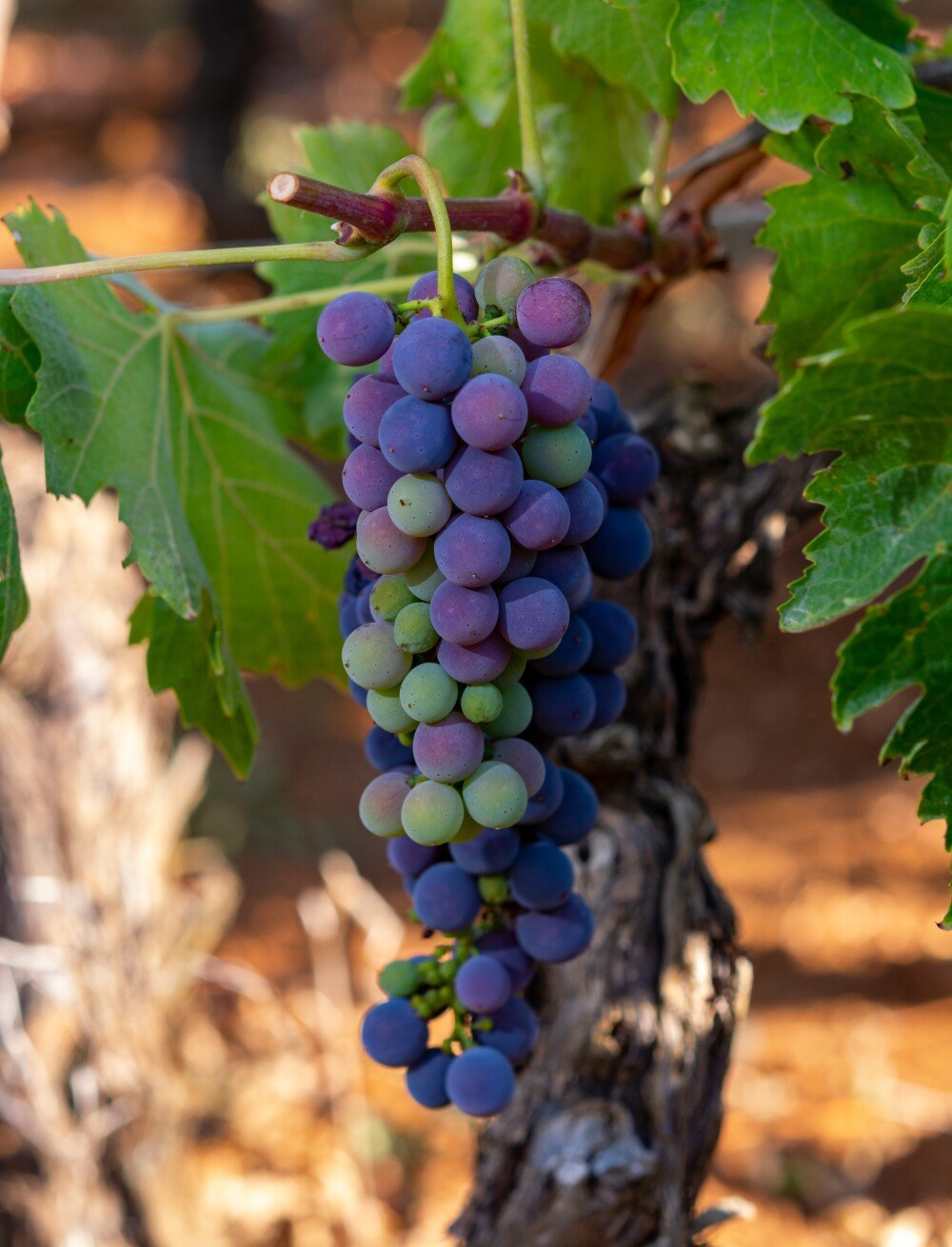
Merlot
The grape varieties Merlot and Cabernet Sauvignon form a close couple where Merlot is the more approachable of the two. When Cabernet Sauvignon and Merlot are in one wine (a Cabernet Sauvignon-Merlot blend), the Merlot grape often makes the wine more complex and softer. The Merlot grape can also produce beautiful wines in itself, some of the most famous wines are made from primarily Merlot, such as the Petrus and the Italian wine Masseto.
Taste
Flavour elements that dominate Merlot wines are black fruit (black-haired) and dried fruit (plum, fig). Furthermore, you can generally find hints of licorice, chocolate and earthy (forest smell) elements.
Other
The Merlot grape gives both soft and powerful wines, which can also ripen very well. Where Cabernet Sauvignon stands for peasantness and strength, Merlot stands for softness, elegance and complexity.
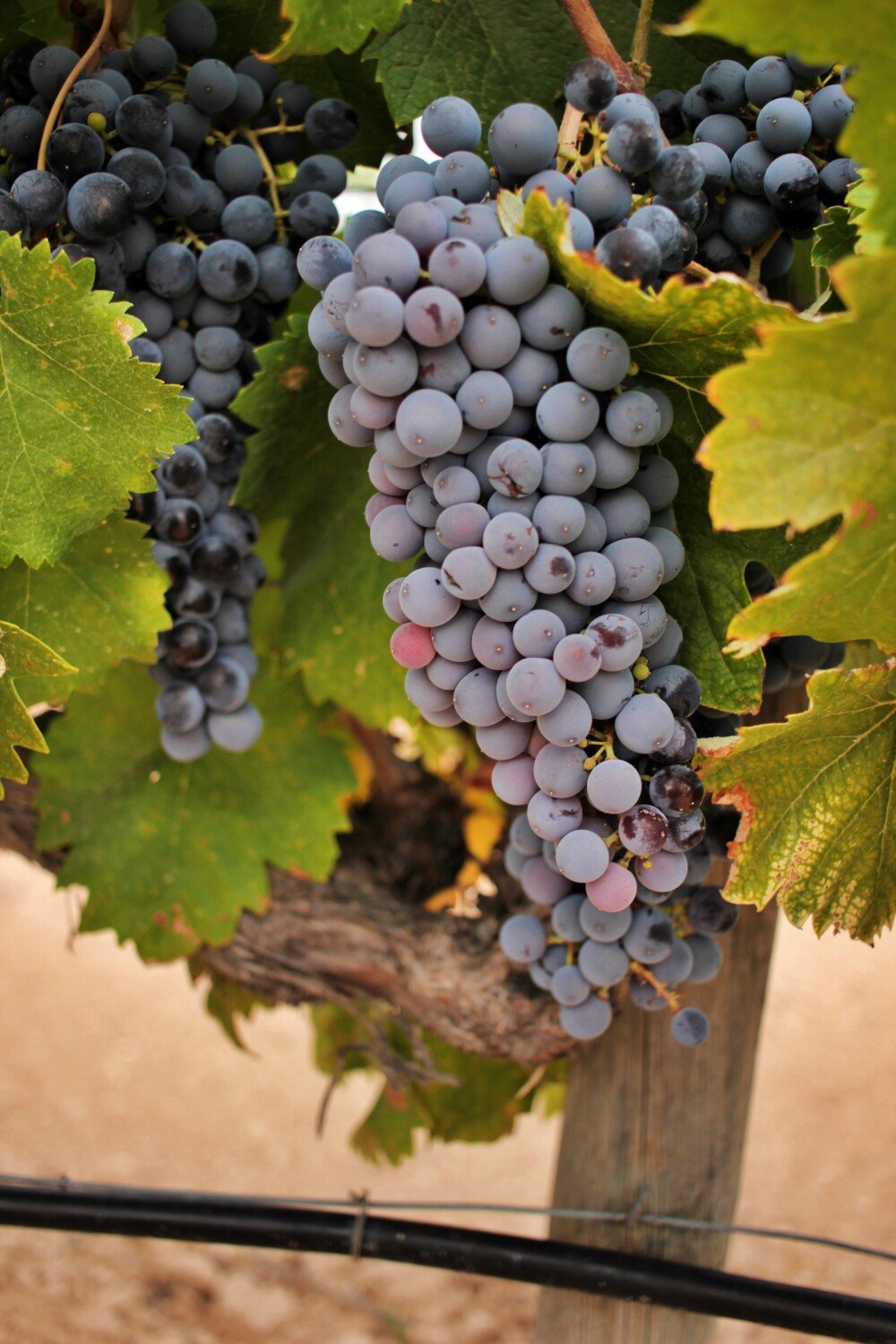
Mourverdre
Mourvedre is known as Monastrell in Spain and Mataro in California. Mourvèdre is recognized for its distinctive meaty and herby aromas, accompanied by robust tannins, rendering it an impactful blending component. Commonly paired with the Grenache and Syrah, as well as classic southern French varieties like Carignan and Cinsault.
Mourvèdre is often utilized as a blending grape in prestigious wines, including renowned blends like Châteauneuf du Pape. Recognized for its integral role, especially in the Rhône Valley and Australia's GSM blends. Mourvèdre also demonstrates excellence as a stand-alone varietal.
Taste
Mourvèdre serves to enhance colour and structure in blends, yet it often presents a dry, grippy sensation on the palate due to its high tannin content. Beyond dark fruit notes, it exhibits intricate earthy flavors such as pepper and herbs, which may evolve into leathery nuances with aging.
Other
Mourvèdre thrives in warm, arid climates, boasting small, thick-skinned berries. As a late ripener, it is among the final grapes harvested.
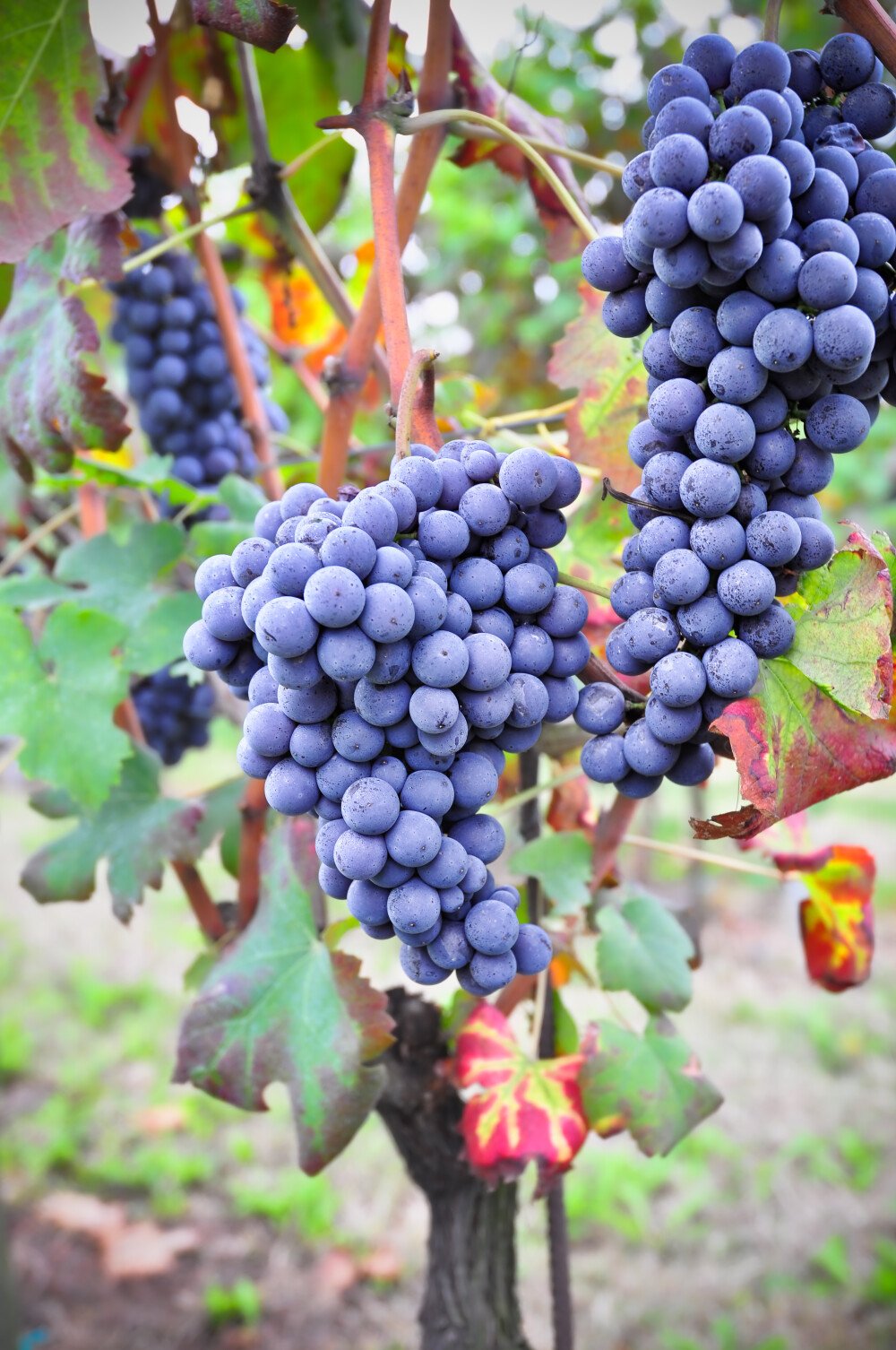
Nebbiolo
The grape of the Piemonte, Northern Italy. Piemonte is characterized by the morning mist in the valleys, the 'Nebbia'. Possibly this is where the name Nebbiolo comes from. World famous are the Barolo and Barbaresco wines made from this grape. The color of the wine made from the Nebbiolo grape is lighter, just like the Pinot Noir. The harvest is late because the grape needs time to ripen properly. Nebbiolo wines are often very powerful and aged in wooden barrels.
Taste
Red fruit (raspberry, strawberry), floral notes, earthy notes, dark notes (leather, tar).
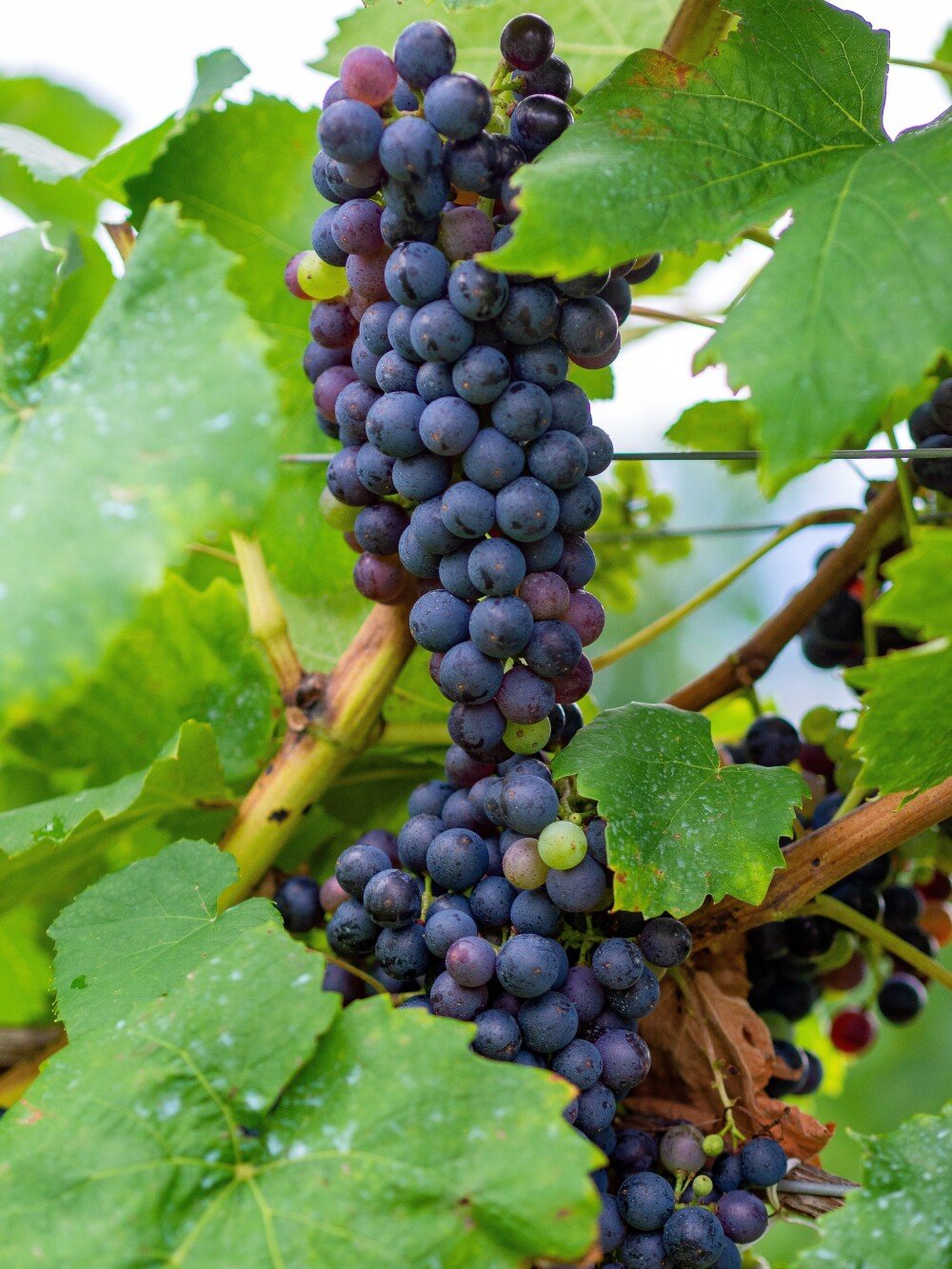
Petit Verdot
Petit Verdot, known for its small but thick-skinned berries, plays a crucial role in blending wines. Typically, it's added in proportions of less than 10% due to its bold nature. However, crafting standalone Petit Verdot wines is challenging because of its pronounced tannins. Petit Verdot, characterized by its rich colour and robust tannic structure, bears greater resemblance to Petite Sirah than Pinot Noir, its also similar to Mourvedre (Monsastrell).
As a blending grape, Petit Verdot adds spice and colour to blends with Merlot, Cabernet Sauvignon, and Cabernet Franc in typical Bordeaux wines. Its importance in Bordeaux and Tuscany’s Maremma is due to its late harvest and prolonged ripening, enhancing Médoc's reds with dark colour and spiciness, and adding depth to Maremma's wines with intense blackberry and plum flavors.
Taste
Wines crafted from Petit Verdot typically exhibit a dense, inky, violet-black hue, attributable to elevated levels of anthocyanin. Petite Verdot is primarily characterized by black fruit flavors and when aged on oak to soften the wine, it can add vanilla, mocha, and hazelnut flavors.
Other
Petit Verdot, "little green one" in French, ripens late, with thick skins and natural acidity, offering structure and aging potential. Thrives in warmer climates like Australia (Barossa, McLaren Vale), and also cultivated in the USA, Australia, California's Napa Valley, South Africa's Stellenbosch
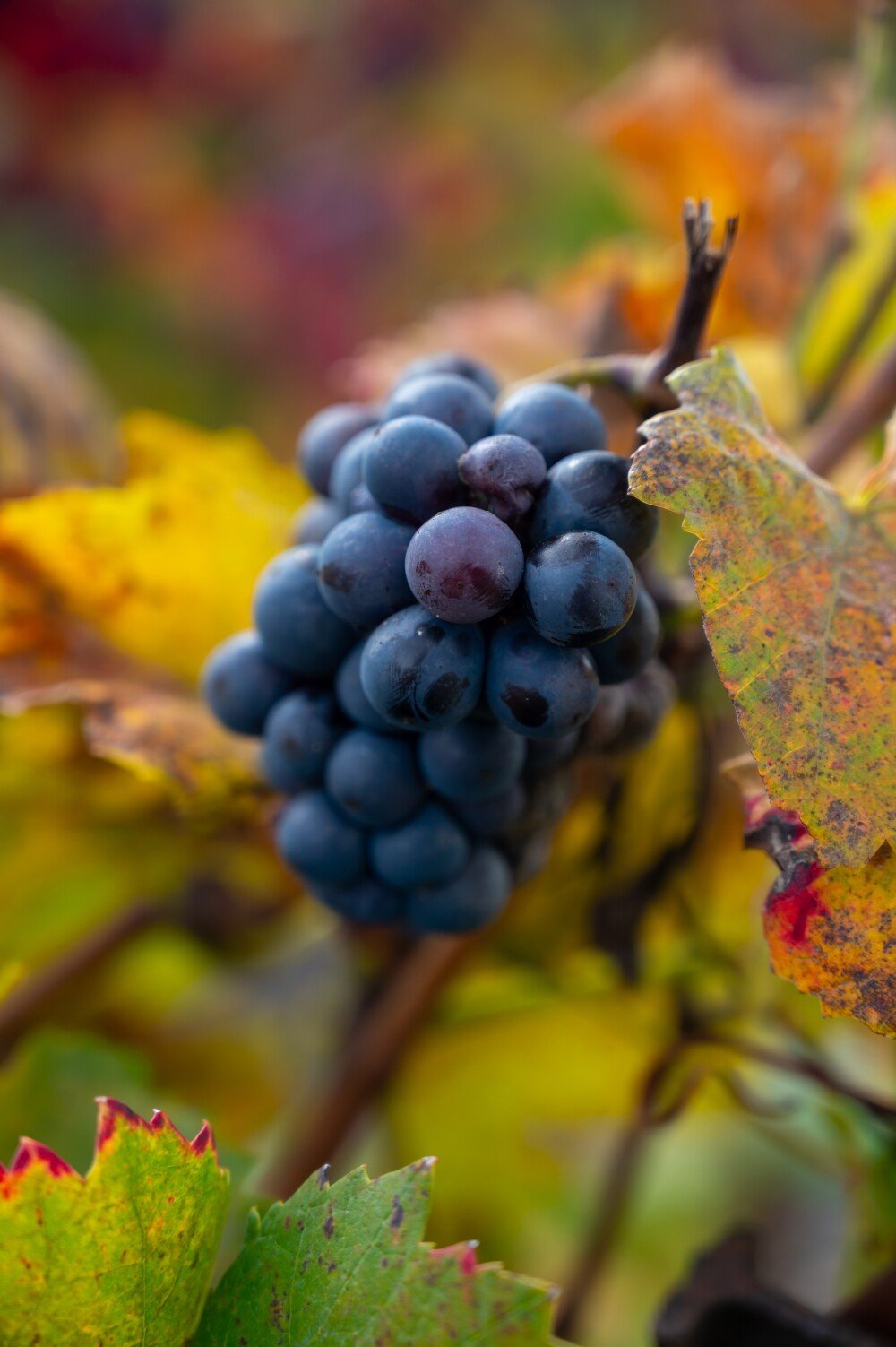
Pinot Meunier
Pinot Meunier stands less renowned compared to Pinot Noir and Chardonnay. It contributes bright fruit, good structure, and texture to Champagne blends. The term "Meunier," meaning "miller" in French, alludes to the floury appearance of the vine leaves' underside.
Despite its higher acidity, lower tannin, and minimal alcohol content, Pinot Meunier lacks longevity and relies on support from its Champagne counterparts. Described as a clonal mutation within the Pinot group, it shares genetic material with Pinot Noir, Pinot Gris, and related derivatives.
Taste
This grape variety exhibits floral and perfumed qualities, along with red-fruited and juicy characteristics. Common taste and aroma profiles encompass cherry, pomegranate, raspberry, spice, rose, and earth. Depending on origin and winemaking techniques, additional notes of strawberry, chocolate, and citrus may be discerned.
Other
Planted in colder regions as a safeguard against challenging vintages, Pinot Meunier matures more swiftly than Pinot Noir, proving suitable for softening non-vintage Champagne wines. This light and aromatic red variety, akin to Pinot Noir but ripening earlier, exhibits confected fruit and occasional smoky flavors.
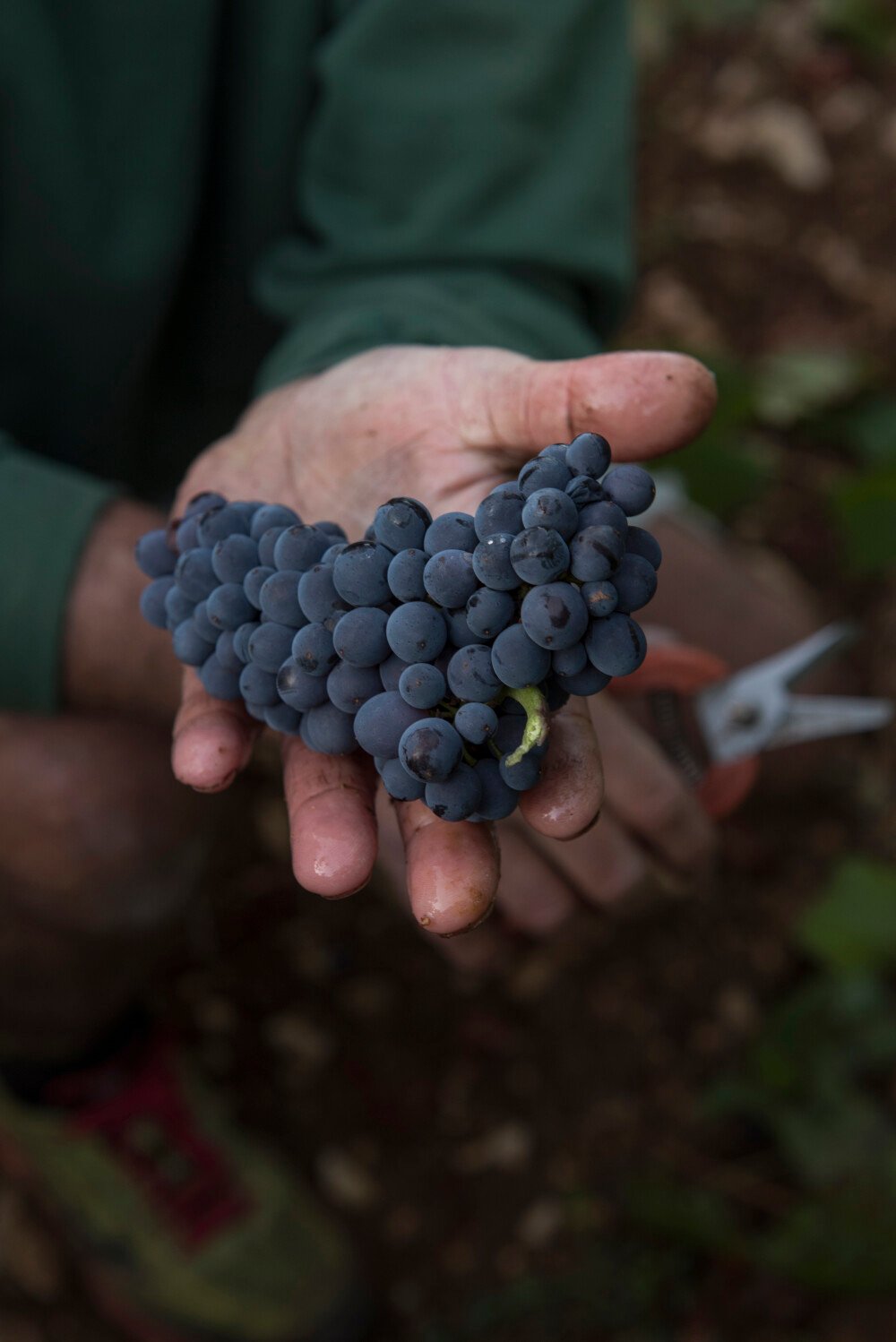
Pinot Noir
This is one of the most difficult grapes to cultivate, because of its demands for a certain (cool) climate, soil composition and growing conditions. But if all the conditions are met, the best red wines in the world can be made. The Pinot Noir grape, also known as Spätburgunder in wines from Germany, with its softness, subtlety and fruitiness, is nerly opposite to the rigidity and power of the Cabernet Sauvignon grape. The colour of pinot noir wines is much lighter than that of wines made from most other blue grapes.
Taste
Typical of pinot noir wines is the sheer fruitiness, in which red fruit (raspberry, strawberry) predominates. In addition, floral elements (violet, rose) and in the older (matured) wines earthy and animal tones like leather and truffle can become present.
Other
The best Pinot Noir wines are from Burgundy, and the better wines are matured in wood. In Burgundy, the climatic conditions and the soil (terroir) are optimal. But also from New Zealand and the United States (among others Oregon) Pinot Noir wines can be excellent. These areas have a climate similar to that of Burgundy. Wines of the Pinot Noir grape can ripen for a very long time, provided that the wines are made for longer maturation.
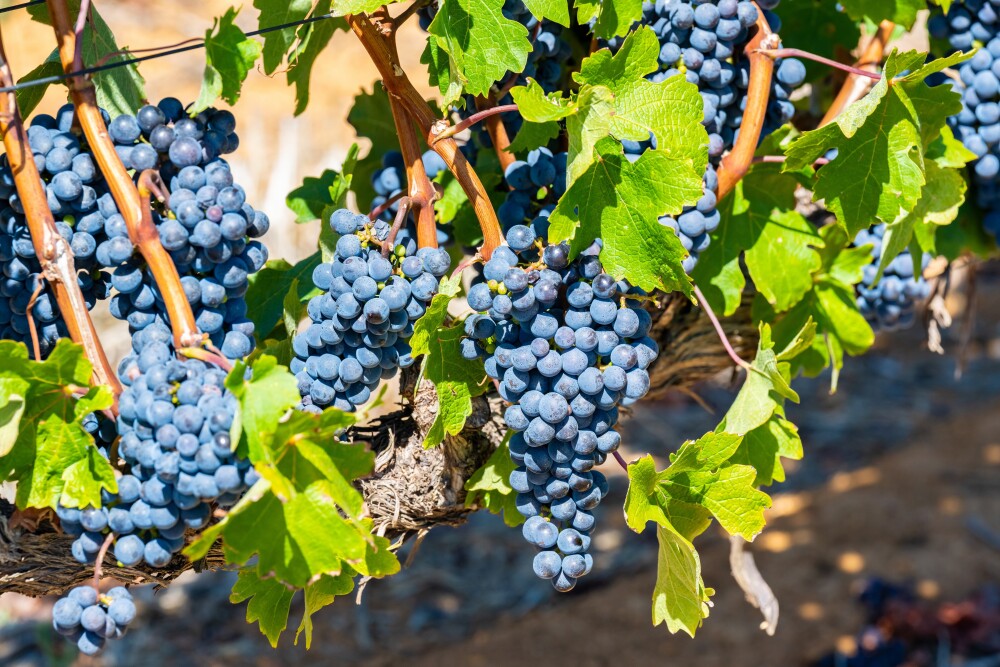
Pinotage
Pinotage is a distinct grape variety, created in 1925 at Stellenbosch University in South Africa by crossbreeding seeds from Pinot Noir and Cinsault. This man-made hybrid aimed to combine Pinot Noir's elegance with Cinsaut's spiciness.
Pinotage is predominantly cultivated in South Africa, tailored to its hot climate and arid terrain. Remarkably significant, it stands as the second most planted grape in the country.
Taste
Pinotage boasts abundant black fruit flavors, with younger wines presenting a red berry hint. Older vines yield exceptionally rich, spicy, and savoury wines, exhibiting complex notes of tobacco, smoke, and leather.

Poulsard
Poulsard, an ancient French red grape variety, is a distinctive specialty of Arbois in northern Jura. The grape is frequently blended for the purpose of enriching colour or infusing aroma, usually with Gamay, Pinot Noir, and Trousseau, contributing to various wine styles. Additionally, it is occasionally utilized in the production of grey wine, as its low extraction of colouring components and the oxidation of the must expedite clarity.
Taste
Poulsard is distinguished by its aromatic profile, featuring notes of red fruits such as strawberry and cranberry, accompanied by earthy and animal undertones.
Other
Poulsard, characterized by its thin, dark skin low in phenols, is vulnerable to spring frost and temperature shifts due to its early bud break and minimal skin protection. Rigorous vineyard management, including pruning and trellising, is essential. It thrives in diverse soils but excels in clay, limestone, or marl. This versatile grape yields white, rosé, red, and sparkling wines. While typically red-skinned, mutations produce white, pink, and black musqué variations. Poulsard's red wines can be so pale they resemble rosé, and minimal skin contact can produce white wine (Blanc de Noir).
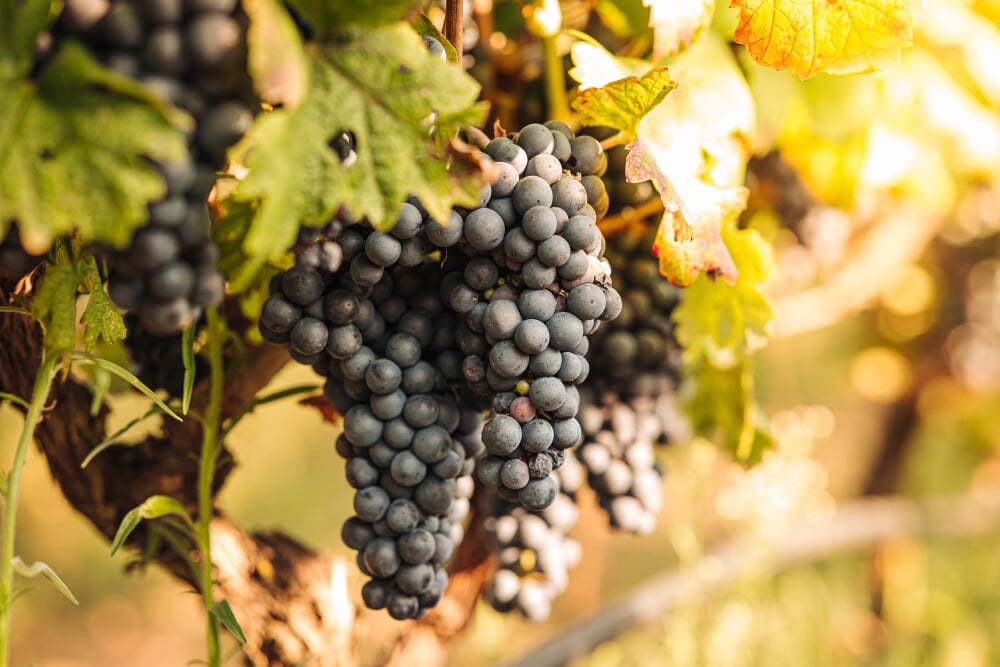
Primitivo
Originally from Croatia, Primitivo thrives in Puglia's limestone soils. Known as Zinfandel in the New World, especially California, it's aged in American oak, echoing flavors of Lodi's renowned red Zinfandels. This grape produces bold, tannic wines like Primitivo di Manduria, including its naturally sweet Dolce Naturale variant. Primitivo is not only crafted into single-varietal wines but also enhances red blends, elegant rosato’ss with summer fruits, and fortified Primitivo di Manduria Dolce Naturale.
Taste
Primitivo's pronounced flavors often evoke the essence of very ripe dark berries, accompanied by notes of liquorice and black pepper.
Other
The name Primitivo, roughly translating to "early one" (similar to the Spanish Tempranillo), refers to its early-ripening nature. Contrary to the implication, the term doesn't imply primitiveness but rather an early harvest. Primitivo wines' robust character, known as Mirr Test ('hard wine') in Puglia, might lead to misconceptions about its refinement compared to other grape varieties.
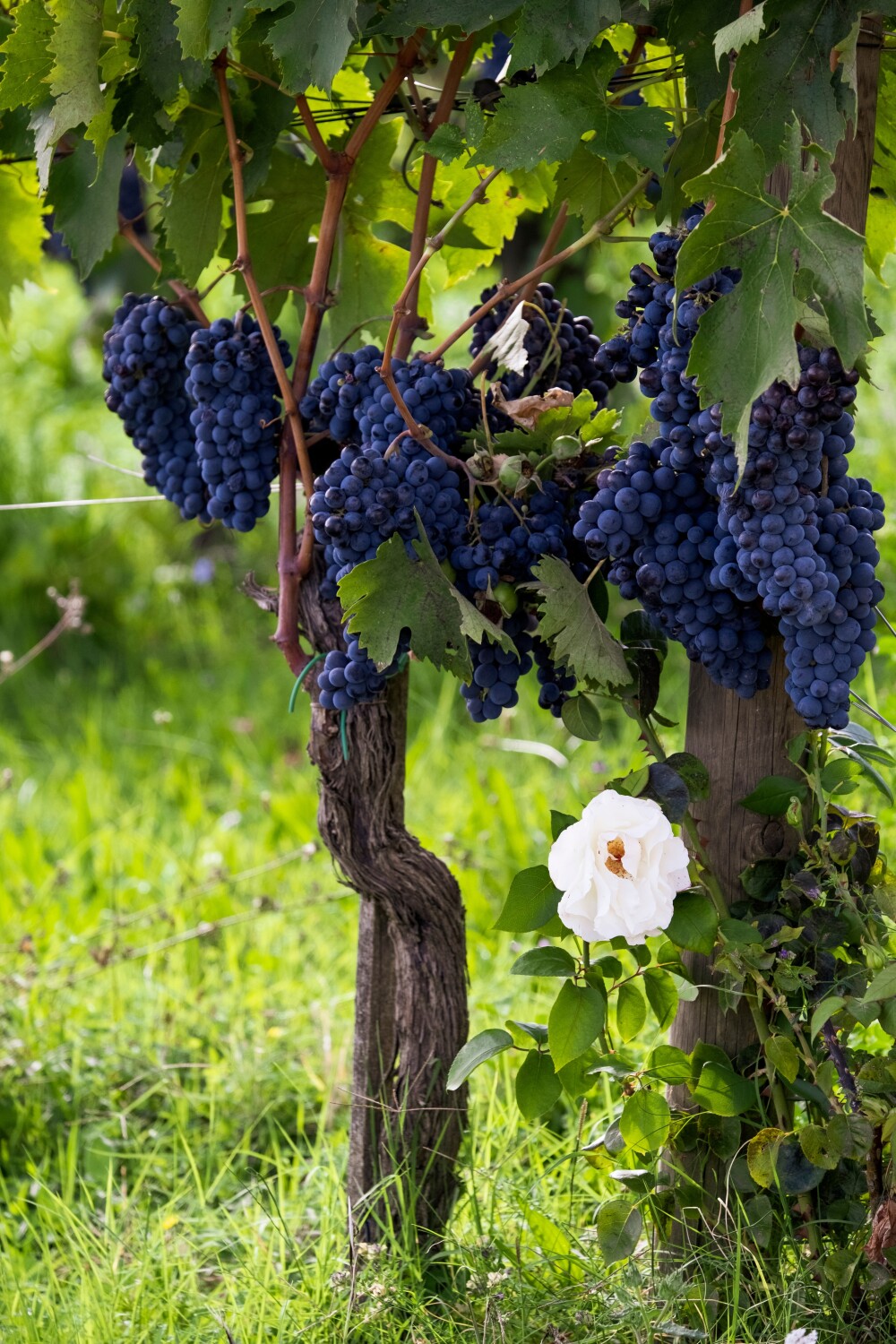
Sangiovese
The Sangiovese grape is a typical Tuscan grape. Brunello and Chianti are world famous wines made from the Sangiovese grape. There are several strains of the Sangiovese, of which the Sangiovese Grosso is most commonly used for the production of the highest quality wines. Due to the large size of these grapes, the wines are relatively light, and when aged can be subtle and elegant like a Pinot Noir. Brunellos can ripe very well and are often only ready to drink after decades of ageing. Examples of legendary Brunello wines are Monfortino and the Riservas of Biondi Santi.
Taste
Black cherries, floral notes, spices, dark notes (tea, tobacco, liquorice). The taste differs with the use of the different strains of Sangiovese, when drinking the Sangiovese Grosso, you should not be surprised to find lighter hints of red fruit, and if drunk young it can have some vegetal hints of green pepper.
Other
Though Sangiovese is planted throughout the world, it is only planted in very small - and often experimental plots. This grape is almost exclusively bound to Italy, and more precise to Tuscany.
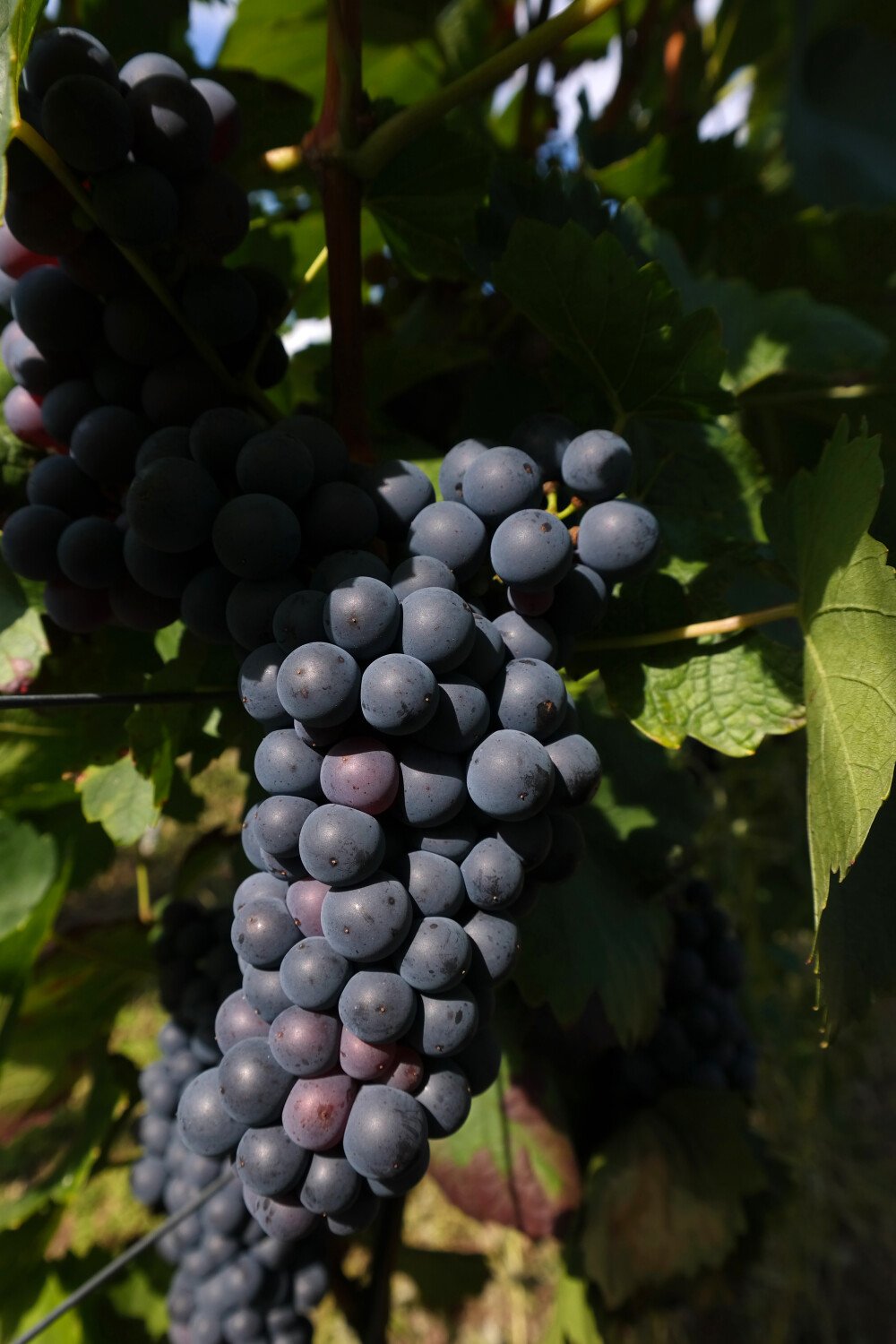
Spätburgunder
This is one of the most difficult grapes to cultivate, because of its demands for a certain (cool) climate, soil composition and growing conditions. But if all the conditions are met, the best red wines in the world can be made. The Pinot Noir grape, also known as Spätburgunder in wines from Germany, with its softness, subtlety and fruitiness, is nerly opposite to the rigidity and power of the Cabernet Sauvignon grape. The colour of pinot noir wines is much lighter than that of wines made from most other blue grapes.
Taste
Typical of pinot noir wines is the sheer fruitiness, in which red fruit (raspberry, strawberry) predominates. In addition, floral elements (violet, rose) and in the older (matured) wines earthy and animal tones like leather and truffle can become present.
Other
The best Pinot Noir wines are from Burgundy, and the better wines are matured in wood. In Burgundy, the climatic conditions and the soil (terroir) are optimal. But also from New Zealand and the United States (among others Oregon) Pinot Noir wines can be excellent. These areas have a climate similar to that of Burgundy. Wines of the Pinot Noir grape can ripen for a very long time, provided that the wines are made for longer maturation.
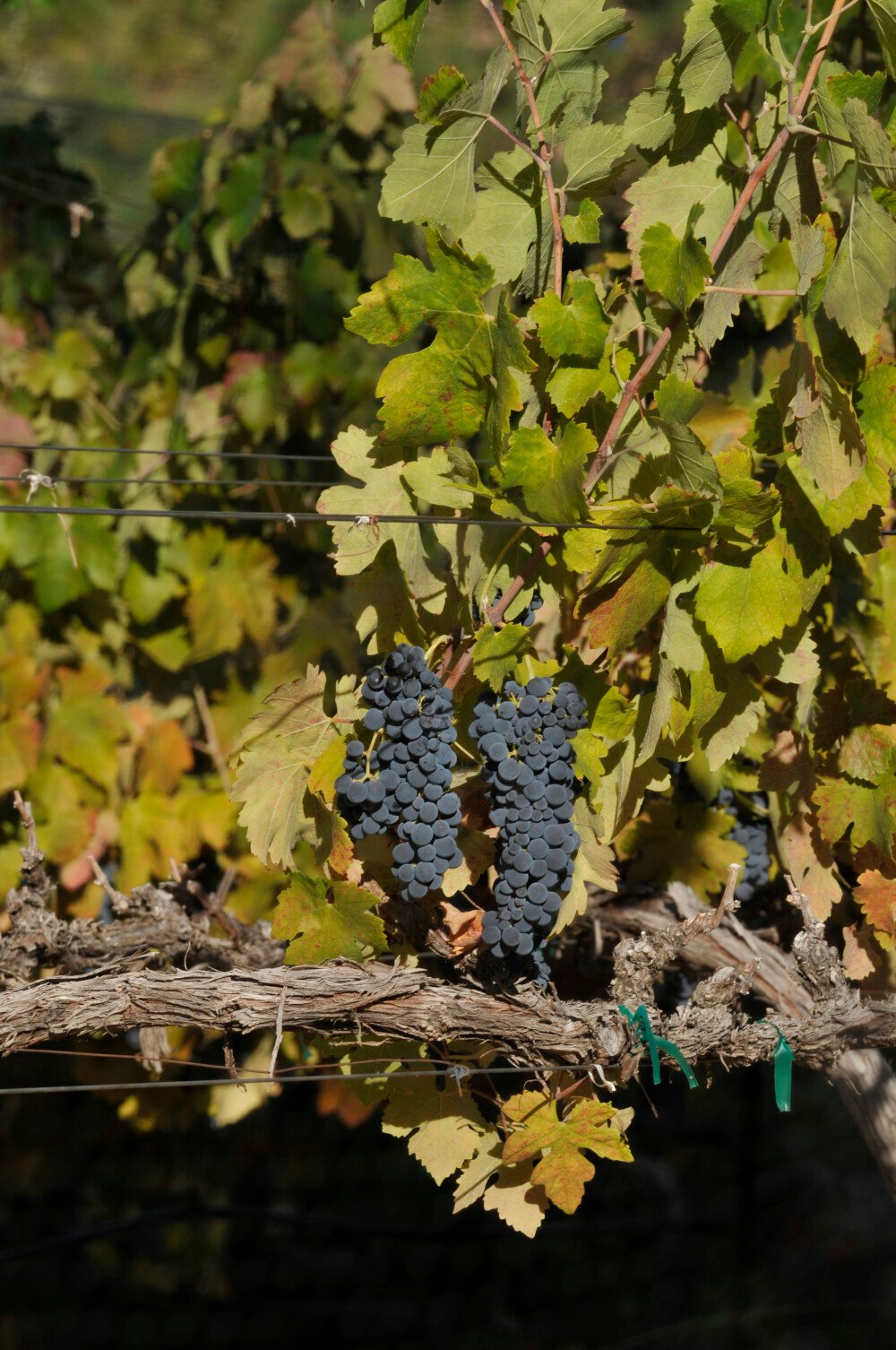
Syrah / Shiraz
The Syrah grape is also called Shiraz in Australia. This grape mainly is grown in warm and sunny regions. The Syrah grape gives very powerful, concentrated and fruity wines and is effortless to combine with most dishes. Partly because of its ability to easily combine with many dishes, this grape has become a quite popular grape throughout the world.
Taste
The wines are fruity. Depending on the ripeness of the wine and the grapes, you will either get a focus on red fruit (raspberry) or black fruit (blackberry, cherries). Characteristic is the spiciness (e.g. pepper and cloves) and dark chocolate, smoke, animal (leather) and even some chemical (rubber) elements. The Syrah grape can give wines a lot of complexity.
Other
The grapes are used in many ways. In the Rhône this grape produces very famous and expensive wines (Côte Roti for examle). Syrah is also used in Chateauneuf du Pape, mixed with numerous other grape varieties. On the southern hemisphere, the wine is sometimes mixed with cabernet sauvignon, which results in some very impressive and complex wines.
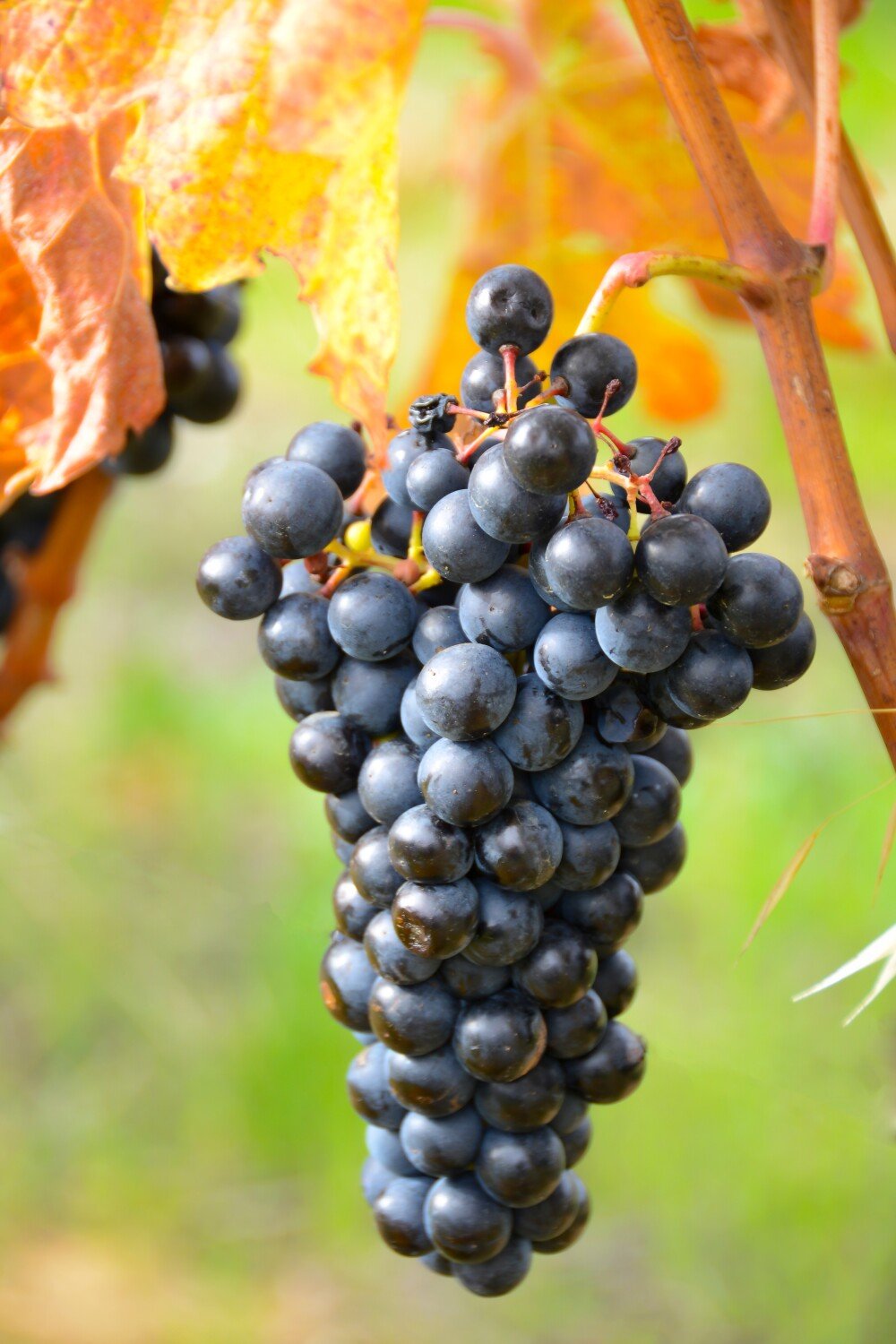
Tempranillo
Tempranillo is a common grape in Spain, in that way common, that Spain and Tempranillo are nearly unseperable. It forms the basis of almost all Rioja's and Ribero del Duero wines, the two areas in Spain where some of the best wines are produced. These wines are often matured on wood and can deliver very long shelf life and beautiful full bodied wines.
Taste
Wines from Tempranillo have a lot of fruit, both black, and red fruit (strawberries, cherries) and dried fruit (plums). The wines have low acidity, also contributing to the longivity. Characteristic are tabacco, wood (cedar) and spicy elements.
Other
The Tempranillo grape is often mixed with a local grape variety, but combined with Cabernet Sauvignon or as a cepage is also a common way of using this variety. The vines of Tempranillo usually are planted all over the field rather than in straight lines. Also to get the best grapes the vines are thoroughly pruned, meaning the yield of Tempranillo is usually relatively low.
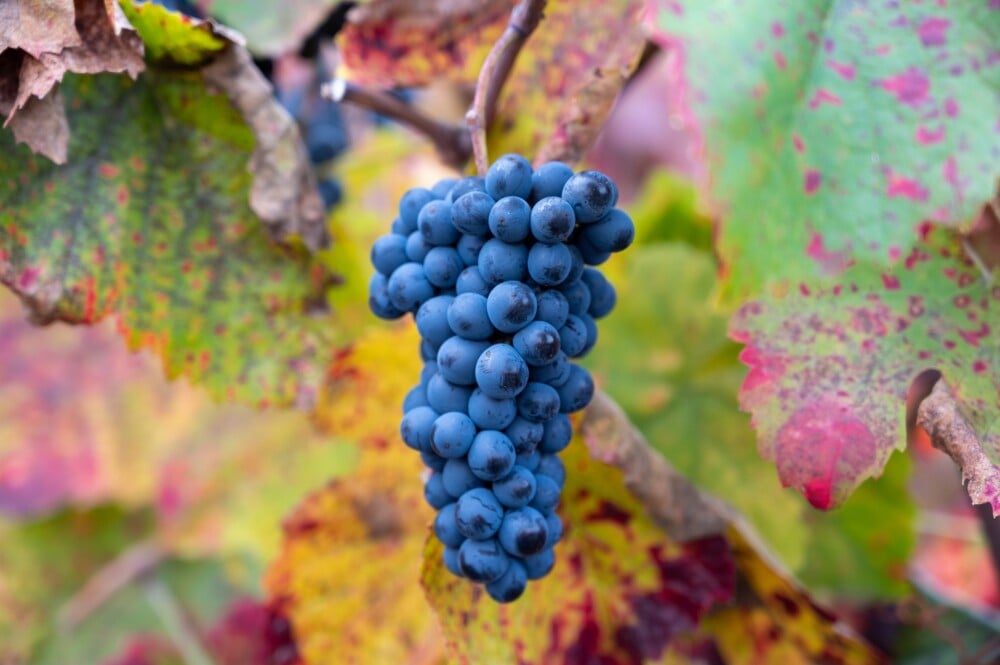
Touriga Nacional
The foundation of numerous Ports, and increasingly acknowledged for the excellence of its red wines as well.
Taste
Renowned for mouth-coating intensity and floral aromas of violets, this champion grape delivers bold fruitiness with high tannins. Small grapes have a high concentration of color, extract, sweetness, and aroma, making it perfect for long-term aging.
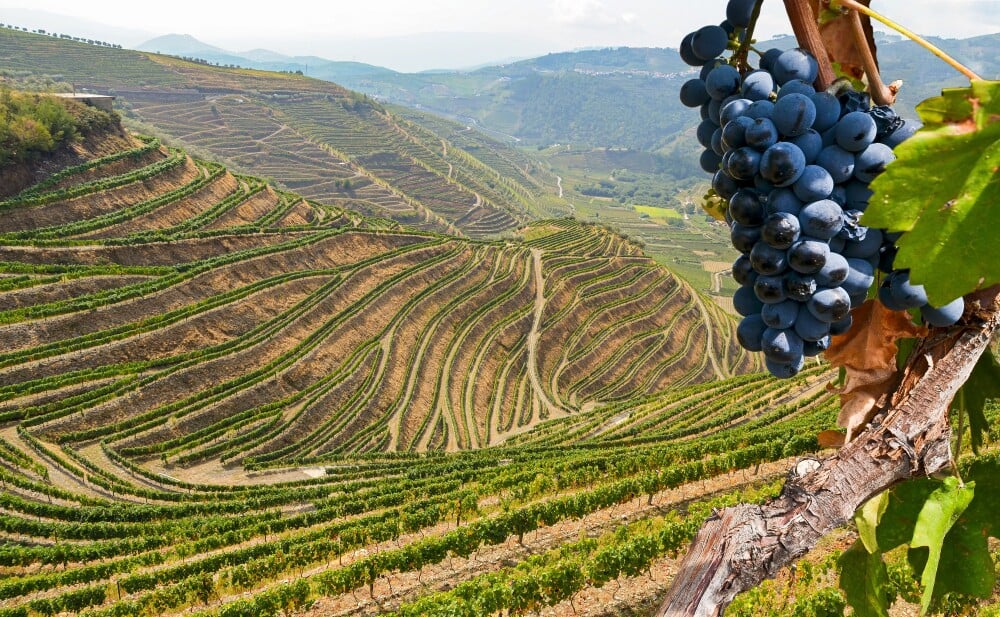
Touriga Franca
Touriga Franca is a dark-skinned grape variety that is used to make Port and dry red wines in Portugal's Douro wine region. Touriga Franca is the least prestigious of the two grapes, although being far more extensively grown than Touriga Nacional.
Taste
Touriga Franca is more aromatic and lighter in body than Touriga Nacional, but it lacks the strength and concentration to be a standout varietal. With its elevated fruit and floral flavors, Touriga Franca balances the combination.
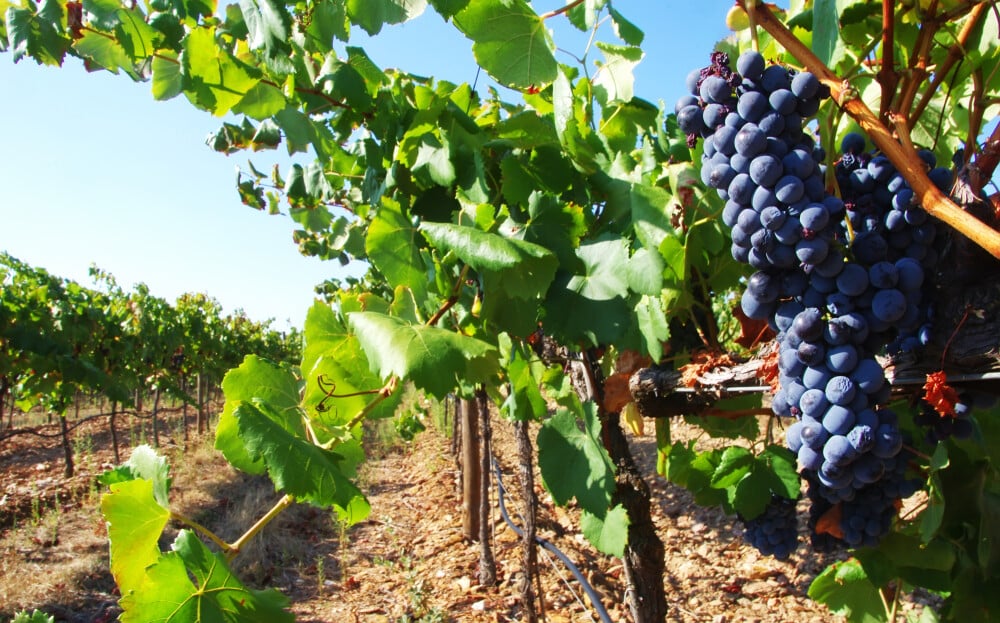
Trincadeira
Tinta Amarela (Trincadeira) is a purple-skinned grape that is used to make Port and other Portuguese red wines. It is also a widely planted variety in Italy.
Taste
Tinta Amarela wines have floral aromas in their youth, which are sometimes accented by darker notes reminiscent of black tea. Tangy blackberry flavors emerge with age. The tannins in this type are abundant, and they enhance with age.

Trousseau
Trousseau, also known as Trousseau Noir, originates from France's Jura region and is cultivated globally, named Bastardo in Portugal and Merenzao in Spain's Galicia. It's gaining popularity in California and Oregon.
Trousseau, vigorous and demanding sun exposure for maturity, requires climate-adaptive pruning. Susceptible to rot and pests, it yields full-bodied wines with high sugar potential despite small bunches. More resilient to climate change than Poulsard, it presents cultivation challenges but maintains consistent yields. Accounting for 5% of Jura vineyards, it's used to bolster blends due to its sun-ripening needs. Trousseau Gris, a white mutation, was once common in California as "Gray Riesling."
Taste
Trousseau, regardless of its origin or nomenclature, presents an enigmatic flavour profile. It exhibits a pale, light-bodied nature with intense, rich alcohol levels, firm tannins offering both depth and weightlessness. Characterized by a deep cherry-red colour and flavors reminiscent of dark red berries and forest fruits.
Other
Trousseau thrives in well-drained Jurassic soils abundant in limestone, schist, sand, granite, and slate.
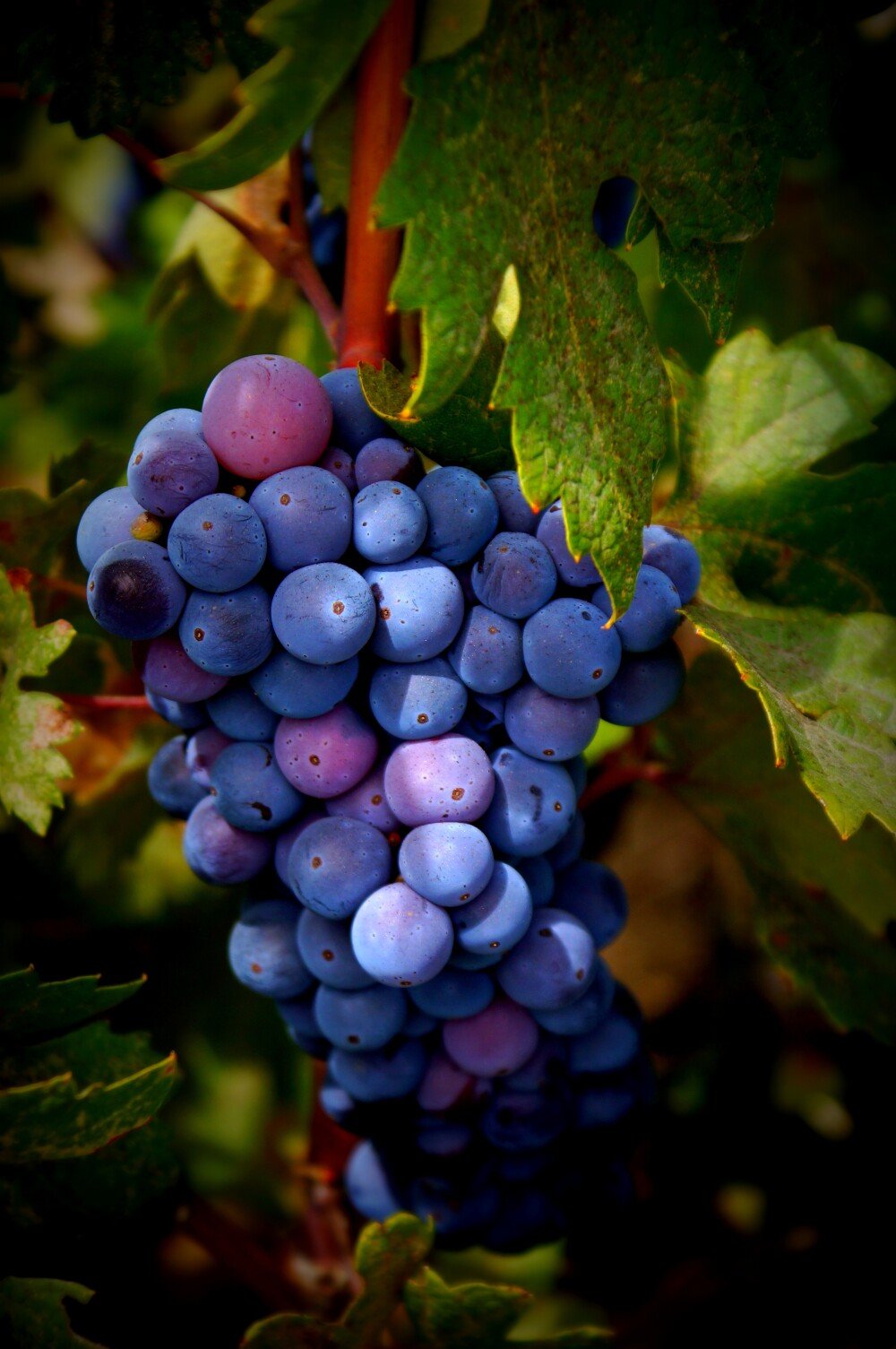
Zinfandel
Zinfandel, known as Primitivo in Italy, is a versatile grape, producing rosé, light reds, robust reds, dessert wines, and fortified Ports. Widely planted in California, it symbolizes American viticulture, noted for rich, bold flavors and complexities. Beyond the U.S., it's grown in South Africa and Australia, often under Zinfandel or Primitivo labels. Its prominence extends to California red blends, where it enhances depth and character.
Taste
Zinfandel's flavour profile varies, influenced by climate; warmer regions yield anise, blackberry, and pepper, while cooler areas showcase fruitier, berry flavors.
Other
Despite its powerful flavour, Zinfandel is lighter in colour than its counterparts such as cabernet sauvignon and merlot.
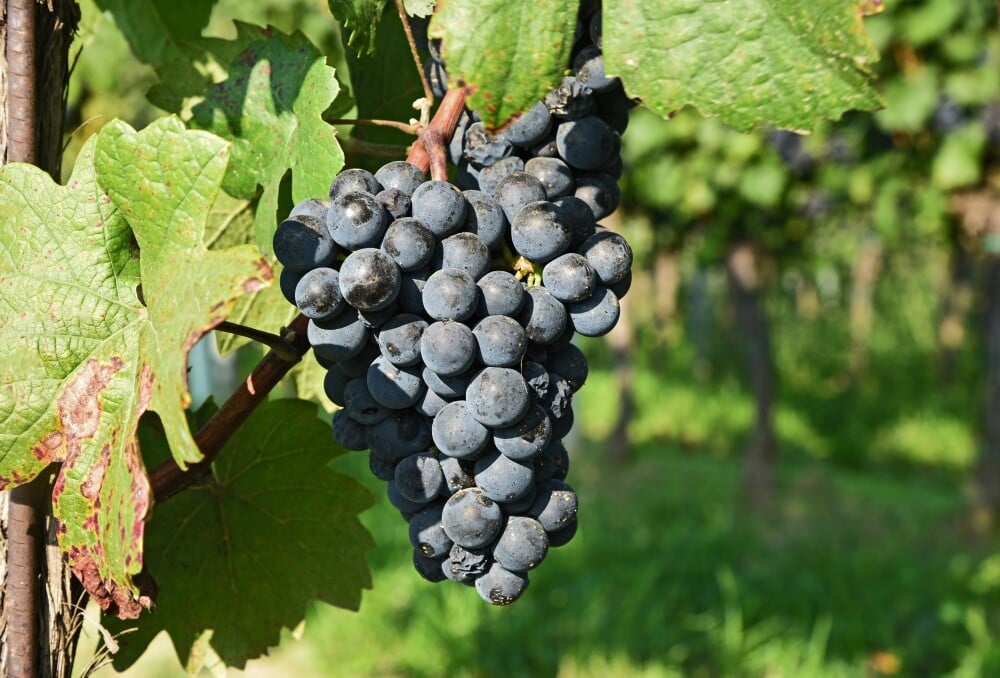
Zweigelt
The Zweigelt grape variety, developed in the 1920s by Professor Fritz Zweigelt through crossing Blaufränkisch and St. Laurent, attained significant recognition post-Second World War. Presently, Zweigelt stands as Austria's most prevalent red wine grape variety.
Taste
Purple red colored with strong tannins delivers full bodied wines with aroma’s of cherry and good longevity.
When matured in barriques it can deliver high quality wines.

White Grapes
The most famous white grape varieties are Chardonnay and Sauvignon Blanc. These typical French grape varieties are now being cultivated worldwide and deliver wonderful results depending on the climate.
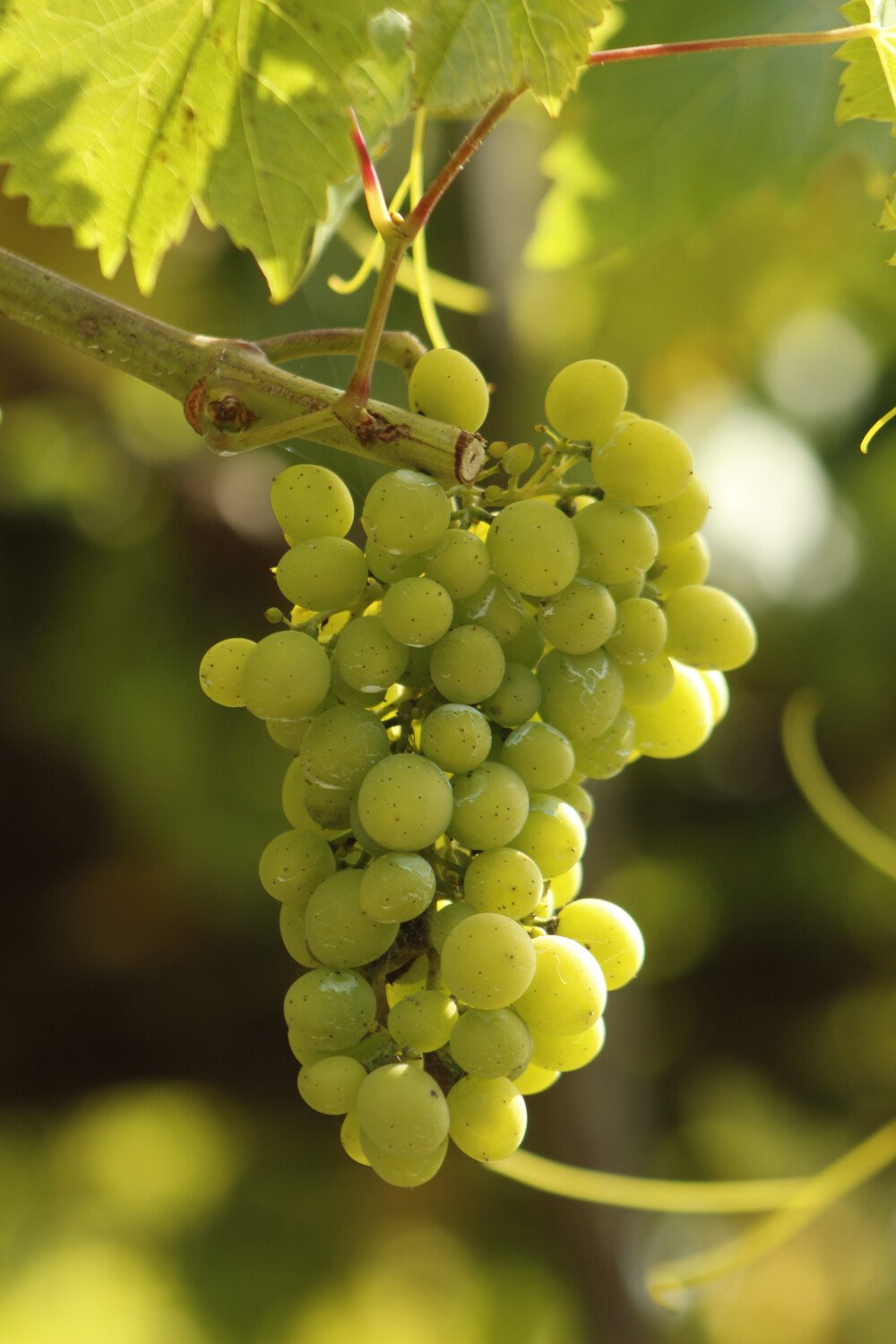
Albarino
Albariño, a green-skinned grape indigenous to Galicia, thrives in the cool climate of the Rías Baixas wine region in Spain, almost synonymous with pagoda-trained vineyards. It's also used in Portugal for crafting sparkling Vinho Verde, known as Alvarinho.
Globally, growers note varied morphology within Albariño vineyards, where berries may exhibit two seeds or, akin to Savagnin, a single seed in the same location.
Taste
Albariño wines, primarily dry with elevated acidity, feature prominent flavors of lemon, grapefruit, peach, and subtle beeswax notes. The thick skins of Albariño make production challenging but result in almond or citrus-pith bitterness from the skin's phenol content.
Other
The grape's adaptability to maritime microclimates contributes to the exceptional quality of Albariño wines. Increased interest in Spanish grape varieties has prompted cultivation in California's cooler regions, aligning with the shift from hybrids (that were weather resistant) to noble grape varieties in England due to climate changes.
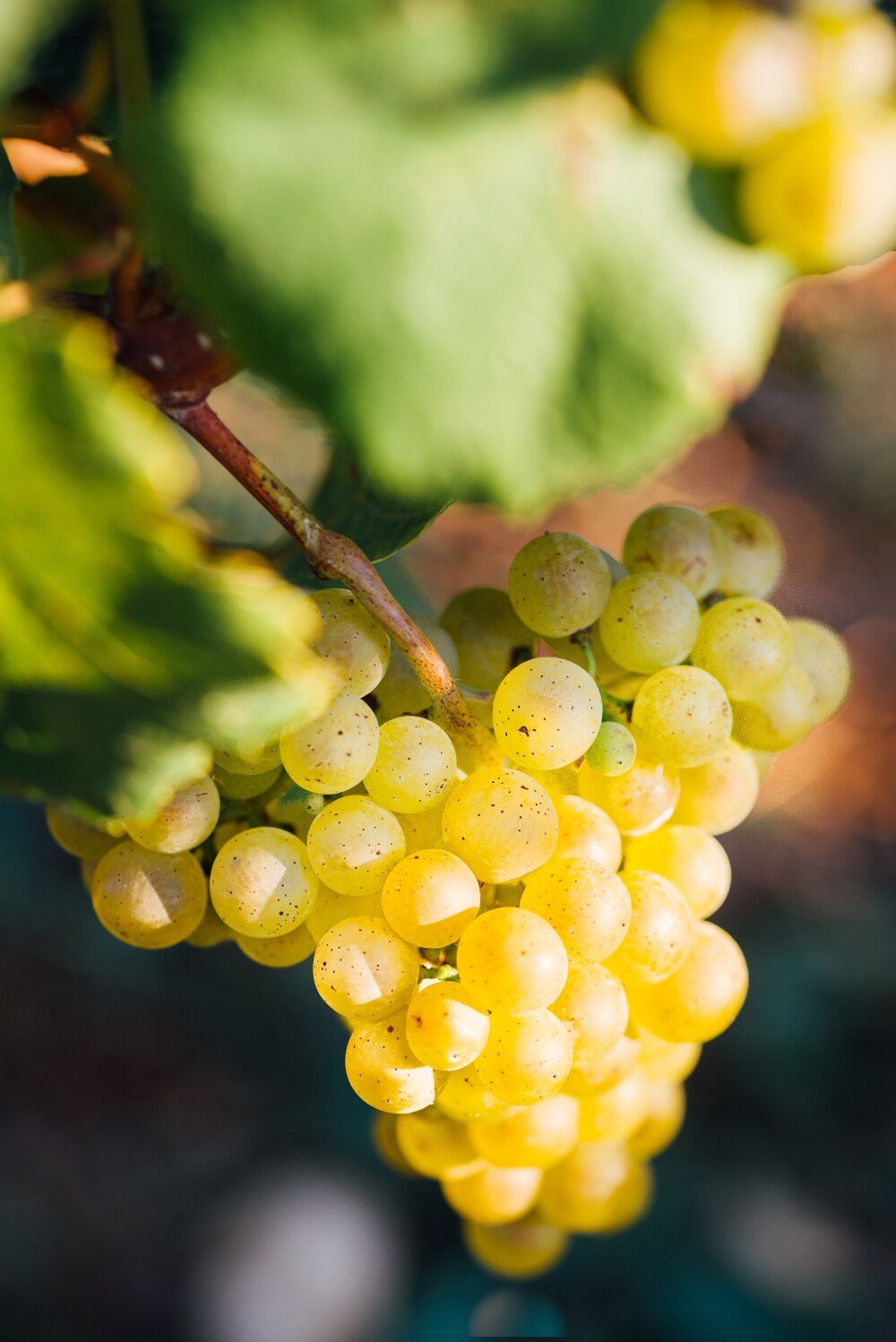
Aligote
Aligoté, Burgundy's lesser-known white grape, is overshadowed by Chardonnay but gains prominence in Bulgaria and Romania. Despite its traditional French roots, it's now thriving in Eastern Europe.
Early ripening and frost-resistance make it adaptable to cooler climates, flourishing in both Burgundy's chalky soils and the sandy soils of the Rhone region. DNA profiling links it to the Pinot family, sharing lineage with Chardonnay.
With inherent high natural acidity, Aligoté wines are commonly enjoyed in their youth. However, those crafted by esteemed producers exhibit longevity, with the ability to age gracefully for several years when stored in a cellar.
Taste
Typically, the expressions predominantly feature notes of light stone fruit, apple, and citrus fruit.
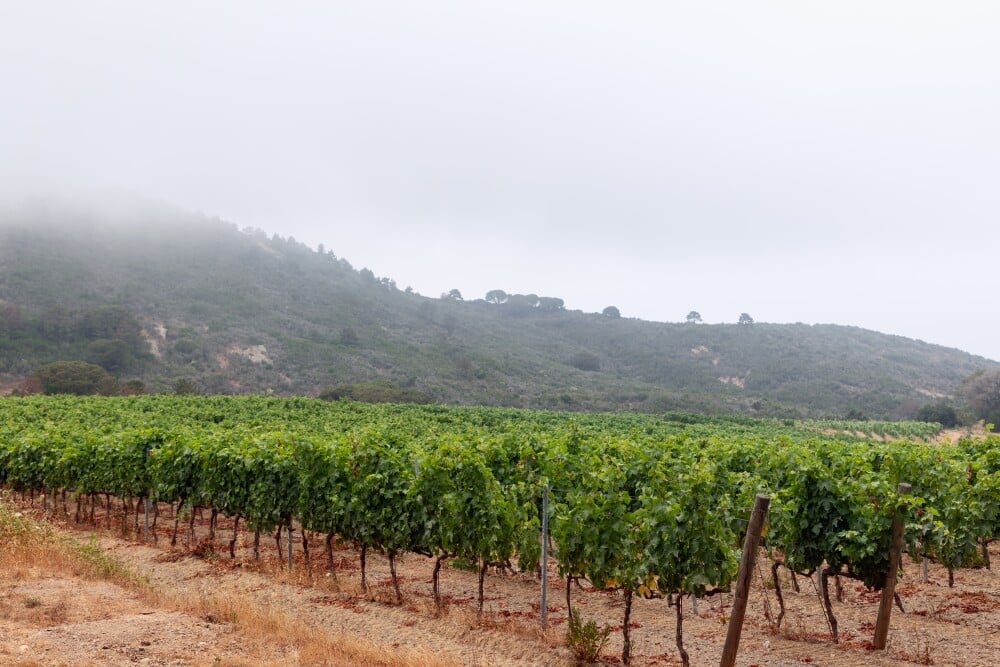
Ansonica
Ansonica, also known as Inzolia, is an Italian grape cultivated in both Sicily and Tuscany. Traditionally prominent in fortified Marsala wines, it has evolved into a sought-after varietal for crisp, dry white wines, both as a standalone and in blends.
In Tuscany, it thrives in the coastal Maremma and the offshore Giglio island, rivalling Vermentino in popularity. It is often combined in blends, it contributes to crafting straightforward, characterful dry white wines
Taste
Inzolia wines exhibit moderate aromatic qualities, featuring nutty and citrusy characteristics accompanied by herbal notes.
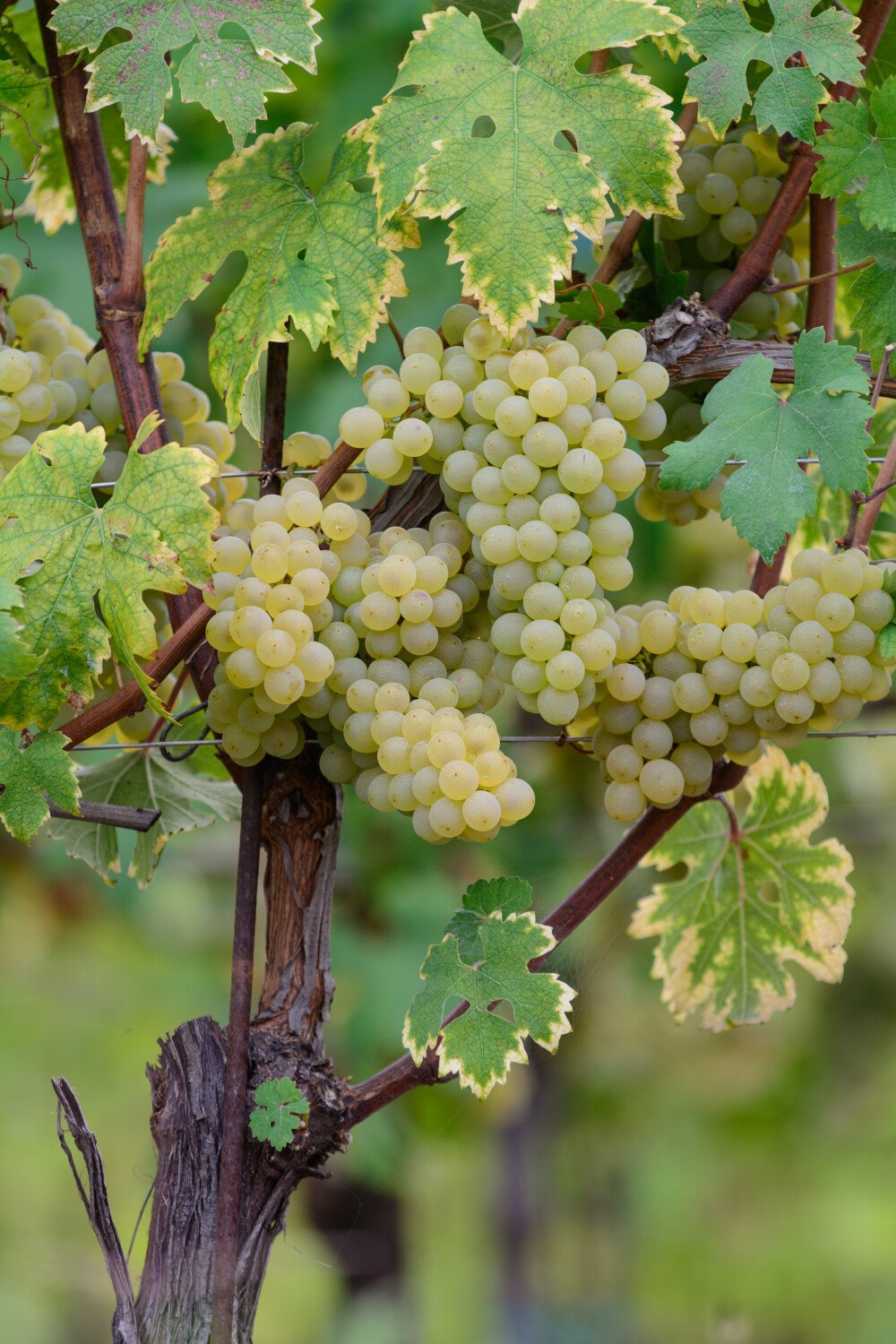
Arneis
Arneis, native to Piedmont's Roero hills in Northwestern Italy, earned the nickname "White Barolo" and faced near-extinction in the 1970s before a remarkable revival. While primarily grown in Italy, experimental plantings are emerging in New Zealand and Australia.
Predominantly found in Piemonte's Roero, Arneis historically complemented Nebbiolo but now shines as a standalone varietal. Despite challenges like low yields and susceptibility to powdery mildew, Arneis persists, showcasing resilience and enriching the region's viticulture.
Taste
Arneis, commonly fashioned into a dry wine, stands out with a medium body and moderate acidity, distinguishing it from various other Italian white grape varieties. In Piemonte, its flavour profile varies from crisp pear and apple in cooler microclimates to richer notes of apricot, almond, and white flowers in warmer regions. Oak aging may impart subtle vanilla nuances.
Other
The moniker 'Arneis,' translating to 'little rascal' in the local Piemonte’s dialect, reflects the challenges associated with cultivating this specific grape variety.
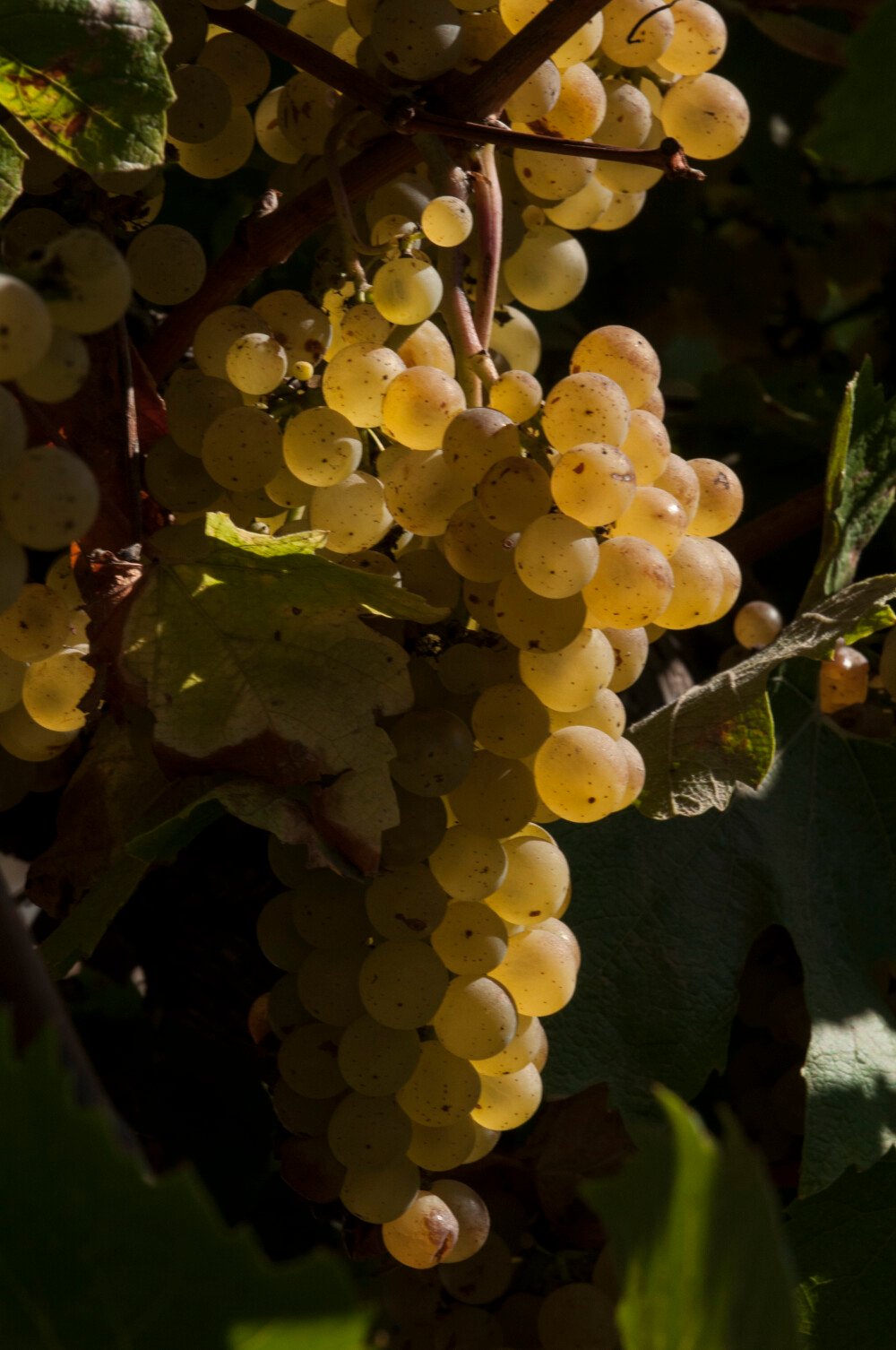
Chardonnay
This grape is the most popular and internationally the most widely used grape for white wine. This is because the grape grows easily anywhere in the world and produces very attractive results. The chardonnay grape is also called a noble grape. Many of the finest white wines are made from chardonnay. It is not the most planted grape variety.
Taste
The chardonnay grape gives wines with many fruit elements, where tropical fruit prevails (mango, passion fruit, pineapple). Butter and honey tones can also emerge. The wines can appear as very concentrated and full, which gives a feeling of quality.
Other
Great chardonnay wines can be stored perfectly, making it also a wine that is often ripened in cellars. When matured on wood, it often develops butter and honey elements and will keep its quality for a long time (more than fifteen years). The wines can be quite alcoholic (over 14%).
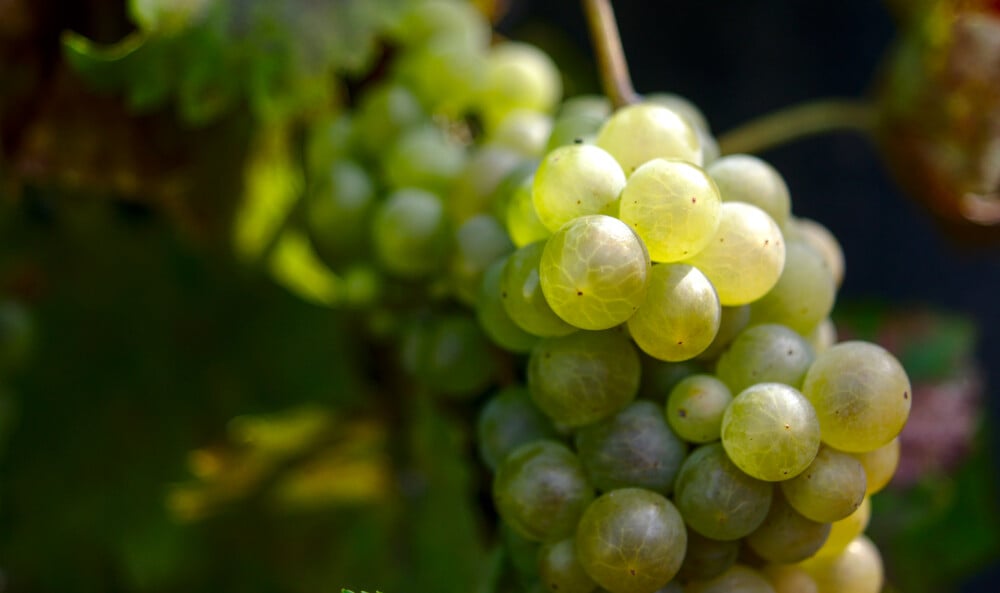
Chasselas
Chasselas, Switzerland's most cultivated native variety, excels in French-speaking regions, ripening early and suited to cool alpine slopes. Vigilant management is crucial to prevent excessive vigour. The wines are revered for its finesse, and therefore, its neutral character highlights terroir influence in Swiss wines. While Chasselas is commonly grown as a table grape worldwide, in French-speaking Switzerland, it is esteemed as an aperitif wine, valued for its refreshing, fruity, and delicate qualities.
Taste
Chasselas, characterized by its subtlety, exhibits low acidity and alcohol content, and lacks pronounced aromatics. It possesses a distinct freshness and elegance, defining its unique charm and delicate nature.
Chasselas has the capacity for graceful aging in cellars, and as it matures, it develops more pronounced honeyed and nutty notes, acquiring a deep golden hue.
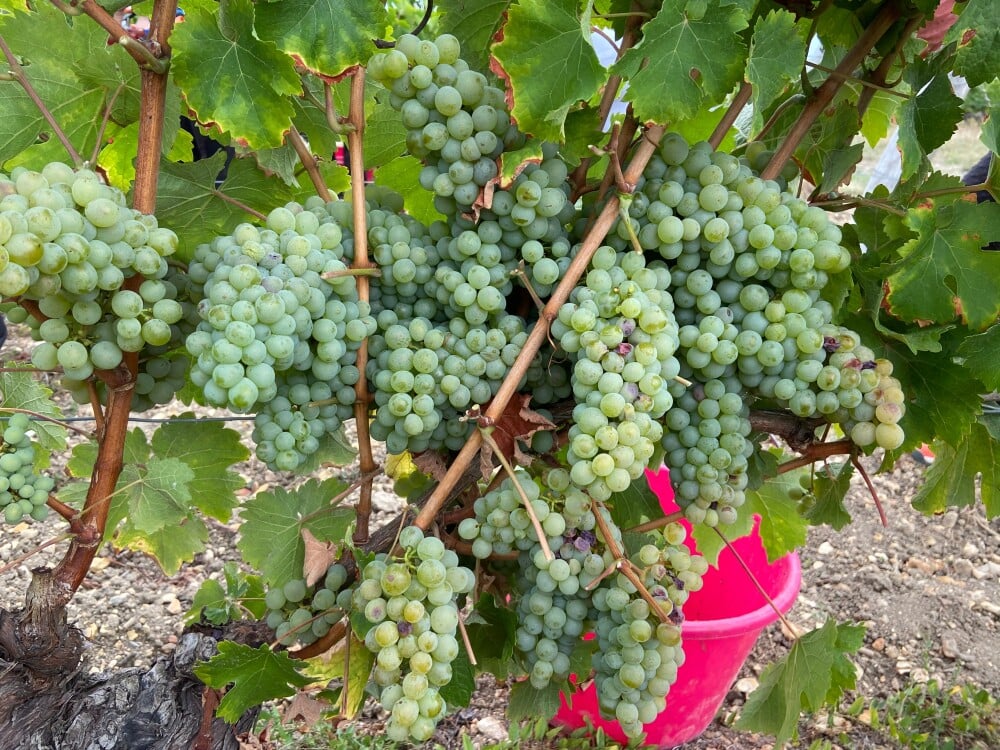
Chenin Blanc
Just like the riesling, the chenin blanc is also a versatile grape which can produce dry to very sweet wines. The grape variety quickly gains popularity and is also often used in blends with other grape varieties.
Taste
When the grape is grown in cool climates it produces fresh wines with high acidity. The flavour elements that predominate are citrus fruit and floral notes. Sweet chenin blanc wines will have aromas of peach, honey and roasted Bread.
Other
In South Africa, this grape is called "stone." The price-performance ratio of Chenin Blanc wines can be very good.
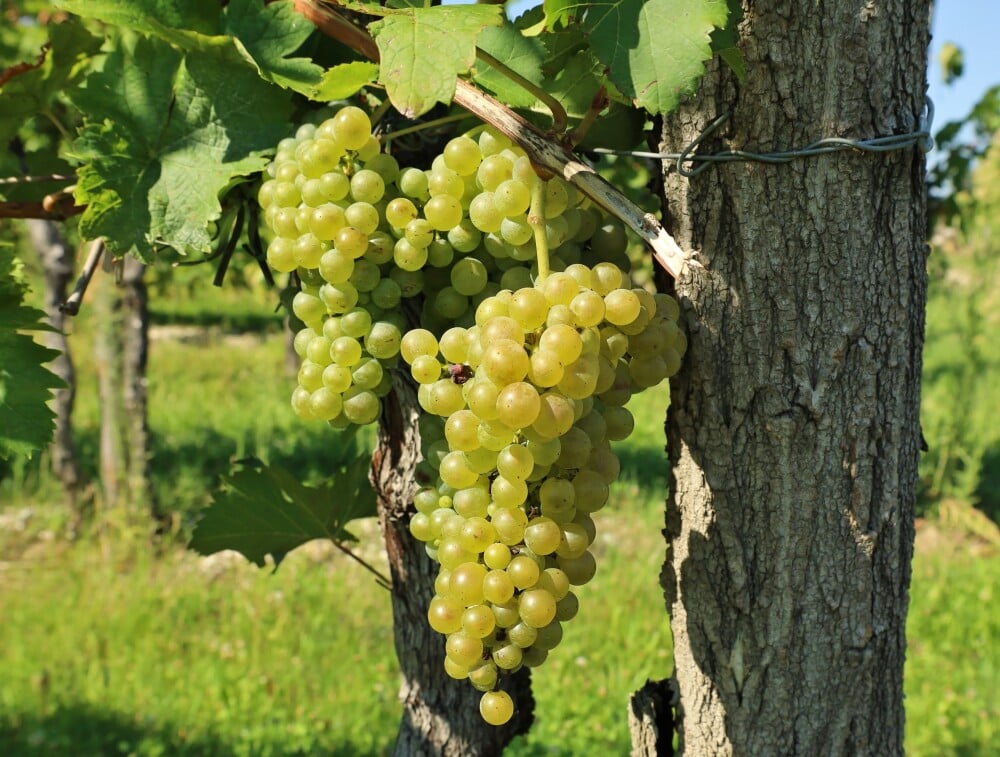
Friulano
Friulano, a white grape native to northeast Italy's Friuli region, was formerly named Tocai Friulano and is also known as Sauvignonasse or Sauvignon Vert. Thriving in dry vineyards, Friulano primarily grows in Friuli, followed by Veneto, and is also cultivated in Lombardy and other regions of Italy, as well as in Chile.
Despite confusion with Sauvignon Blanc, Friulano lacks the aromatic qualities associated with it. However, both share similar leaves and berry clusters, and are vulnerable to botrytis.
Taste
White wines made from Friulano grapes display varying flavour profiles with age. Usually lively and fruity, they boast citrus, floral, almond, and mineral notes. In youth, they're light-bodied with pale colour, floral-fruity aroma, subtle minerality, and high acidity. Barrel aging reduces minerality, enhancing body akin to Chardonnay.
Other
Friulano grapes demonstrate early ripening and late budding, resulting in significant productivity that necessitates careful yield control for quality assurance. Yet, their thin skins render them susceptible to rot and mildew.
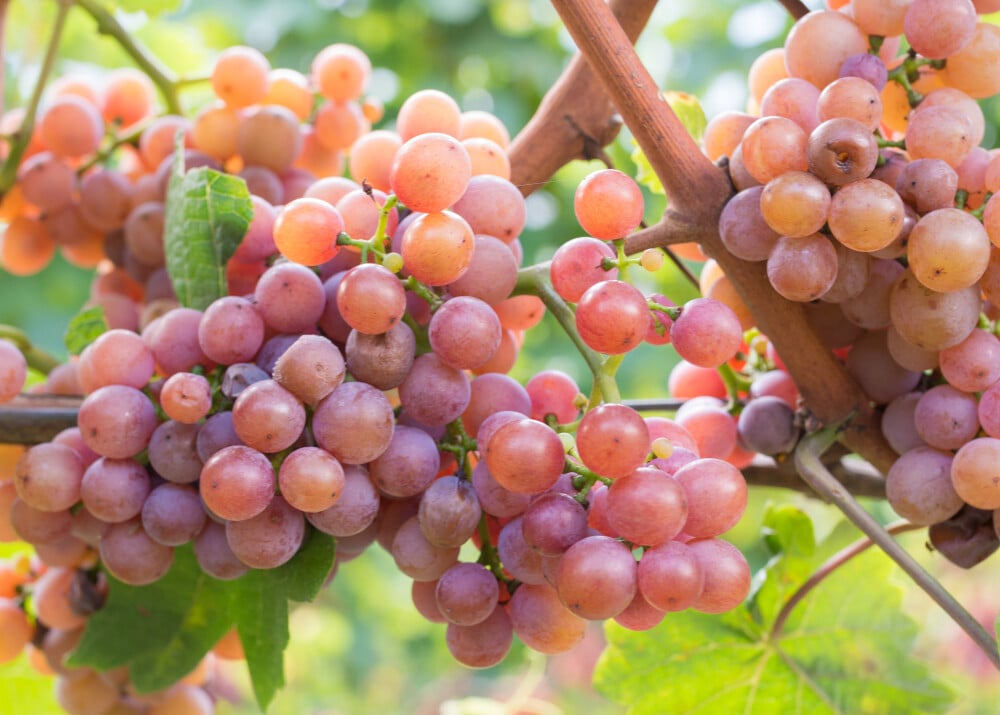
Gewürztraminer
Gewürztraminer, a pink-skinned mutation of the French grape Savagnin, is renowned for producing some of the world's most distinctive aromatic white wines. Globally its crafted in various styles, encompassing dry, off-dry, and sweet compositions, including late-harvest or botrytized variations.
Gewürztraminer, like Muscat (Moscato), Riesling, and Torrontés, inherently offers sweet flavors due to its aromatic nature, and due to its heightened aromatics, higher alcohol, and lower acidity can create the perception of increased sweetness. it sets itself apart from Moscato with its higher alcohol, stronger aromatics, and lower acidity. While Gewürztraminer is most notably associated with France's Alsace region, it also excels in Germany and Alto Adige, Italy. Despite favoring cool climates, it's found success in California, and Washington.
Taste
It features primary flavors of berries and citrus, accompanied by aromas of rose and honey, with possible hints of herbs, spices, and earthy undertones.
Other
Gewürztraminer's robustness, from its thick skins, requires careful management of phenolics, leading to a drying mouthfeel. It's a moderate cropper but prone to uneven berry sizes (millerandage).
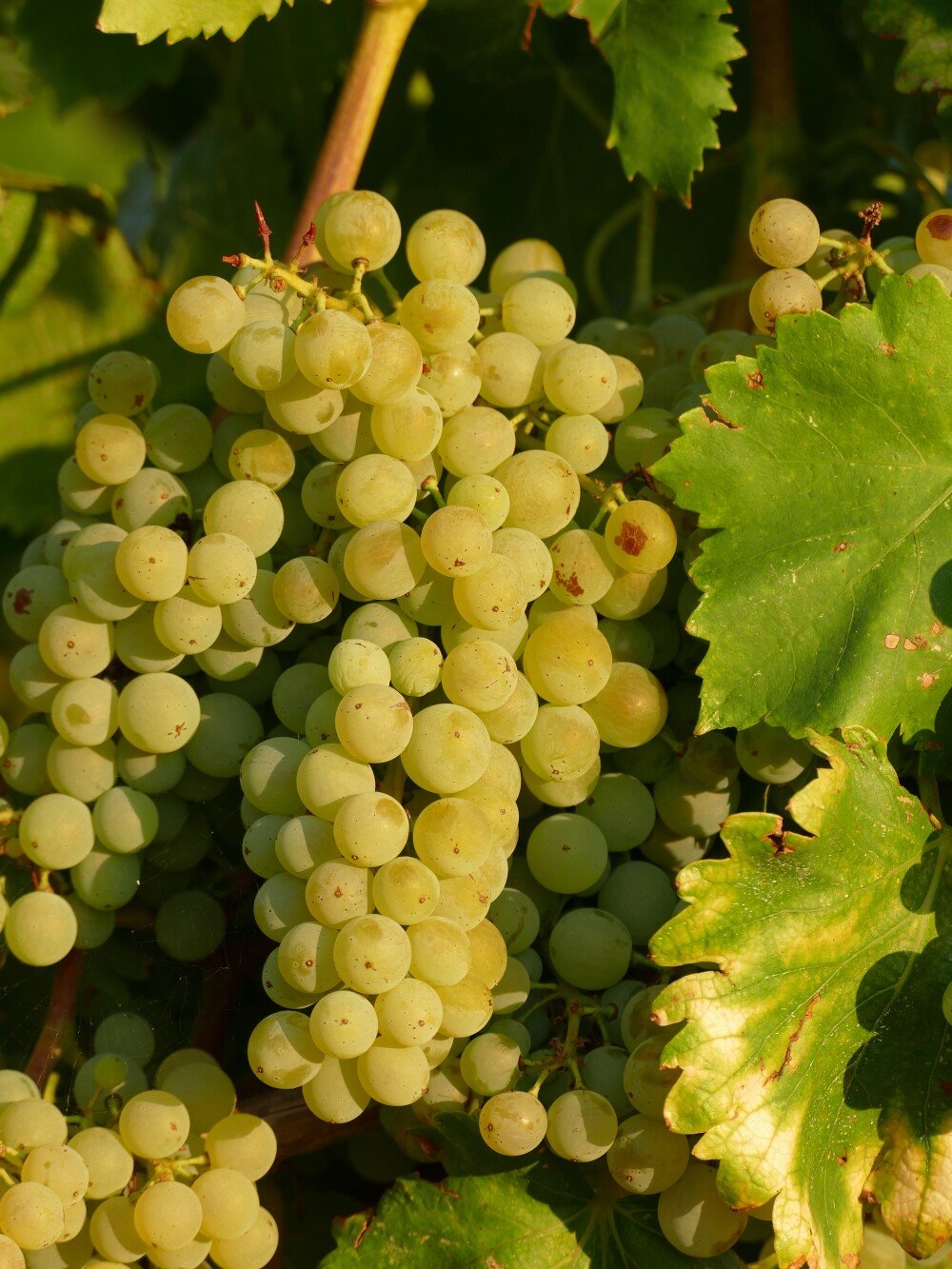
Grenache Blanc
Grenache Blanc, originating in Northern Spain as a light-skinned mutation of Grenache Noir, is often utilized to soften blends, resembling Viognier and Marsanne depending on cultivation region. Single-varietal Grenache Blanc wines gain popularity for their intense flavors and plush style, akin to oak-aged Chardonnay.
Taste
The prevailing theme in Grenache Blanc wines is "green richness," characterized by green fruit and citrus notes such as unripe mango, green apple, lime zest, and white peach. Oak aging can impart subtle sweet floral notes like honeysuckle, brioche, and lemon curd.
Other
Predominantly found in Catalonia and Aragón, known as Garnatxa Blanca, it plays a key role in Priorat and Terra Alta. In southern French white wines, it contributes to Châteauneuf-du-Pape blends and Southern Rhône wines. In California's Central Coast, particularly San Luis Obispo, Grenache Blanc has a growing presence, thriving in warm, arid conditions.
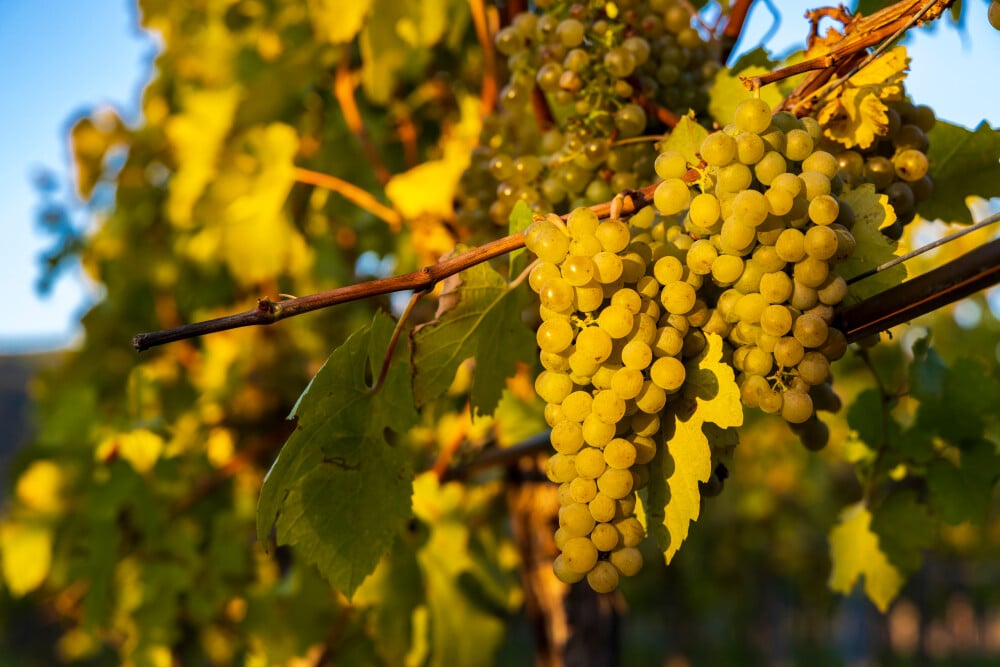
Gruner Veltliner
The grüner veltliner ripens slowly and, like the riesling harvested late. The areas where this grape variety are still limited, mainly in Austria, but its popularity is rapidly increasing. Grüner veltliner wines range from very dry wines (harvest in september) to sweet wines (harvest in December).
Taste
These wines have their own character; they can be very simple fresh and light spicy, but also very concentrated and full bodied. Aromas of pear, peach, citrus fruit and peppers are typical.
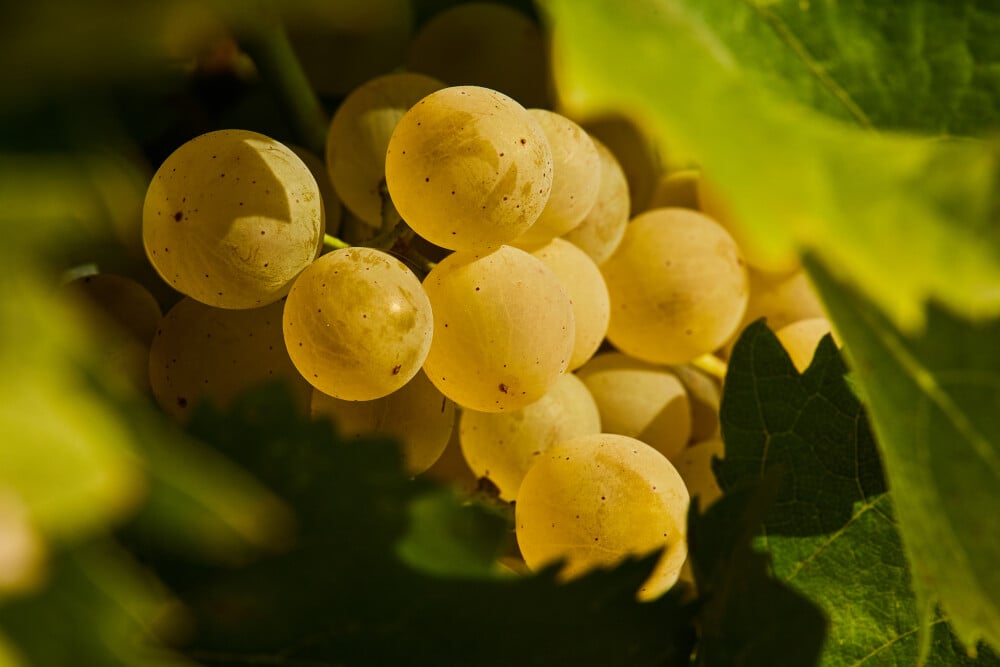
Malvasia
Malvasia, an ancient grape family, produces wines of varied styles—dry, sparkling, and sweet. Predominantly grown in Zamora, Valencia, and the Canary Islands (where it yields the sweet Canary sec), but also in Portugal, where it contributes to Madeira and white wines in regions like Colares and Douro.
Malvasia is commonly used in blends, where they contribute aromatics and freshness to the final wine composition. Due to its low acidity, Malvasia enhances body weight and texture in the white Rioja Blend through easy oxidation.
Taste
The majority of vinified Malvasia wines are white, and due to the numerous sub-varieties, a specific flavour profile is challenging to generalize.
The renowned Malvasia Bianca grape primarily yields white wines, while Malvasia Nera contributes to red blends. Dry and sweet Malvasia varieties often display floral, ripe stone fruit, tropical fruit, and citrus notes
Other
Notable wines produced from the Malvasia grape include Blandy's 5 Year Old Malmsey Madeira, Flora Springs "Soliloquy" from Napa Valley (California), and Fontana Candida Frascati from Lazio (Italy).
Marsanne
Marsanne is a prominent white wine grape in the Rhône Valley. Marsanne typically yields dry styles, though exceptional sweet versions are made from dried grapes, like Chapoutier's Hermitage Vin de Paille and Ermitage Flétris from the Swiss Valais.
The grape explains the long-standing Rhône Valley tradition of blending the variety with its more aromatic cousin Roussanne (to enhance aromatic dept), and the more international pairing with Viognier. and serves as an alternative to Chardonnay.
Taste
Marsanne yields full-bodied wines with a structured, waxy texture and suitable acidity for aging, albeit with limited flavor depth. With time, it develops almond and subtle honey notes. Its acidity, usually lower, increases as it matures, imparting a fuller sensation.
Other
Selecting the optimal harvest date for Marsanne is crucial due to its susceptibility to overripening and acidity loss in warmer climates. The grape thrices in poor, stony soild and produces complex wines in cooler regions.
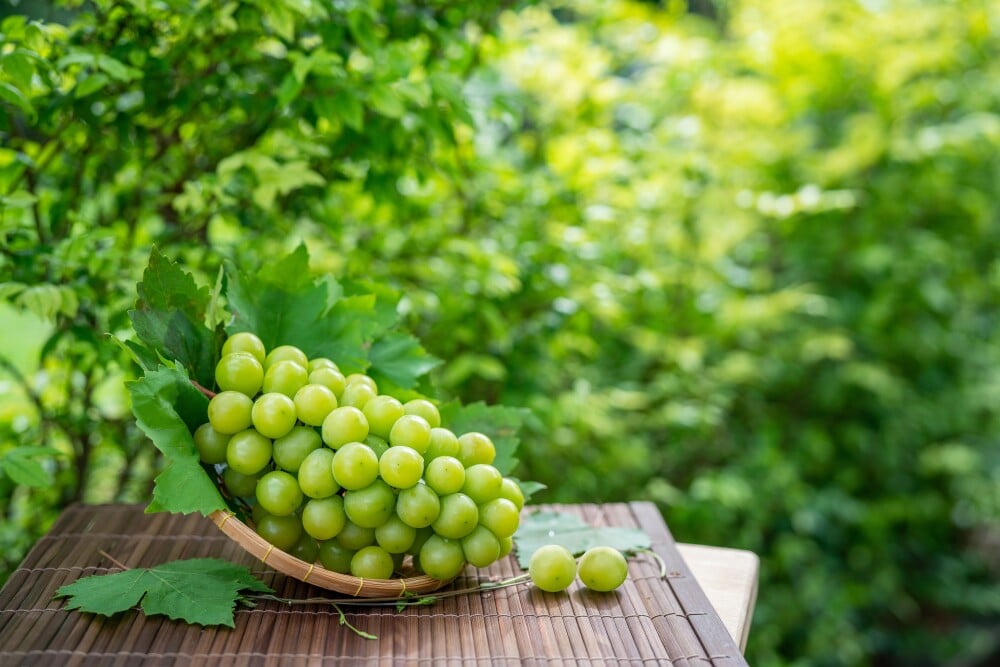
Muscat
Muscat, originating from Italy, also referred to as Muscatel, Moscato, and Moskatel, encompasses over 200 varieties and stands as one of the world's oldest and most widespread grape families. The grape features diverse styles globally ranging from dry white wines to fortified, sparkling, and sweet examples.
Wines crafted from these grapes are intended for youthful consumption, as their low acidity results in minimal aging potential.
Taste
Muscat wines, primarily associated with predominantly white wines, are characterized by a highly aromatic and exhibits a fruity (mandarin, apricot), honey flavour.
Moscato wine is renowned for its sweet notes of peaches and orange blossom.
Other
The widely cultivated Muscat Blanc à Petits Grains is popular in the south of France for fortified wine and is also utilized in Piedmont's renowned Moscato d’Asti and Australia’s Liqueur Muscat production.
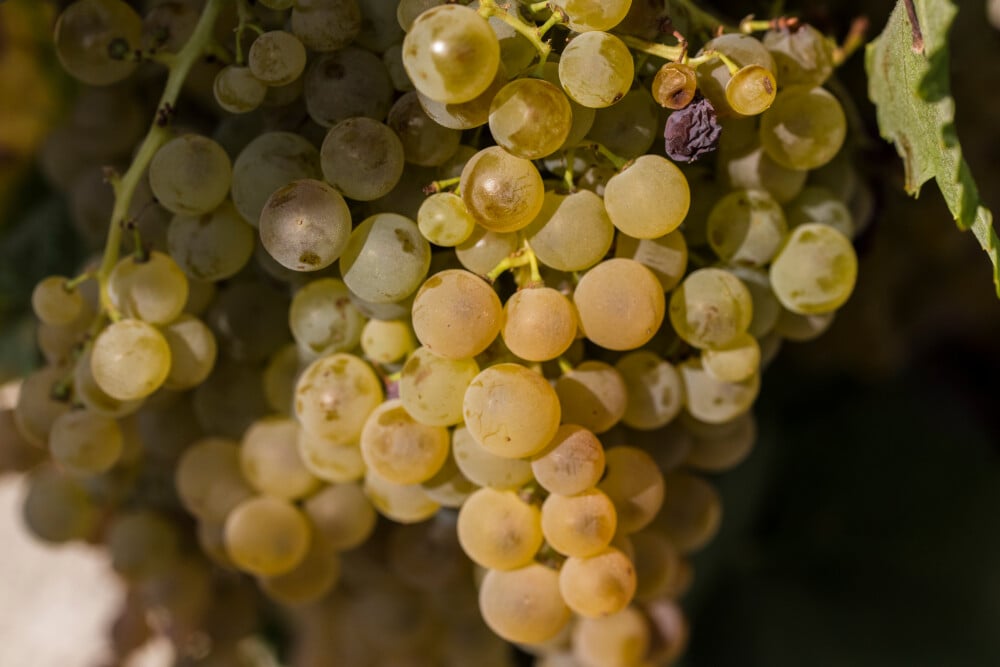
Palomino
Palomino, a late-ripening vine, resists grape rot but is prone to anthracnose and powdery mildew. It yields low-acid white wines with a neutral taste, conducive to oxidation, ideal for fortified wines. Integral to Sherry styles like fino, manzanilla, amontillado, dry oloroso, and palo cortado, it's often blended with Moscatel de Alejandria. Barros and Arenas soils primarily host Pedro Ximenez and Moscatel grapes, reserved for sweet Sherries.
Taste
Sherry's distinctive taste arises from intricate winemaking processes rather than the inherent flavour of a single grape variety. Palomino, the primary grape, exhibits a neutral taste. Still white Palomino wine features notes of apple, peach, and saline, while dry Sherries reveal aromas and flavors of almond and fresh herbs.
Other
This grape is essential for Sherry production in Andalucia and thrives in the unique "albariza" soils, dominating 90% of Jerez vineyards. Its adaptability to dry, warm climates, high-yield vines, and thin skins make it ideal for Sherry-style wines in California and brandy in South Africa.
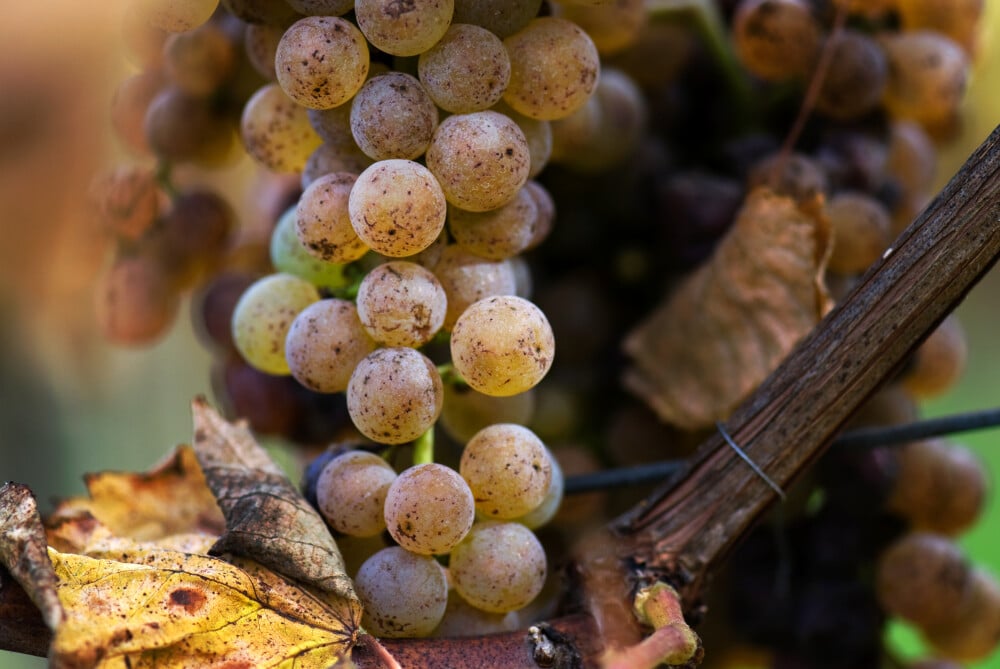
Petit Manseng
Petit Manseng, a prominent white grape in Southwest France, is exclusively used for crafting sweet, liqueur-style wines. Its thick skins yield limited juice but contribute to its distinctive tangy and verdant flavors, offering refreshing acidity and a well-structured body.
Predominantly grown in Jurançon and Pacherenc du Vic-Bilh, Petit Manseng's name stems from its smaller berries, prized for their quality despite being less abundant than Gros Manseng. The dry, sunny autumns of Southwestern France permit extended ripening, resulting in exceptionally sweet wines often harvested late. While primarily in Southwest France, it's also cultivated in Spain, Australia, and the US, notably Virginia.
Taste
Petite Manseng features rich aromas of candied fruit and spice, often complemented with the flavours of roasted almonds or walnuts, honey, and pineapple.
Other
Traditionally, grapes undergo "passerillage," drying on the vine to intensify sweetness, ideal for crafting high-quality liqueur-style wines despite modest yields. Often blended for balance with Gros Manseng or Petit Courbu, it thrives in Southwest France's warm climate, balancing acidity and sweetness.
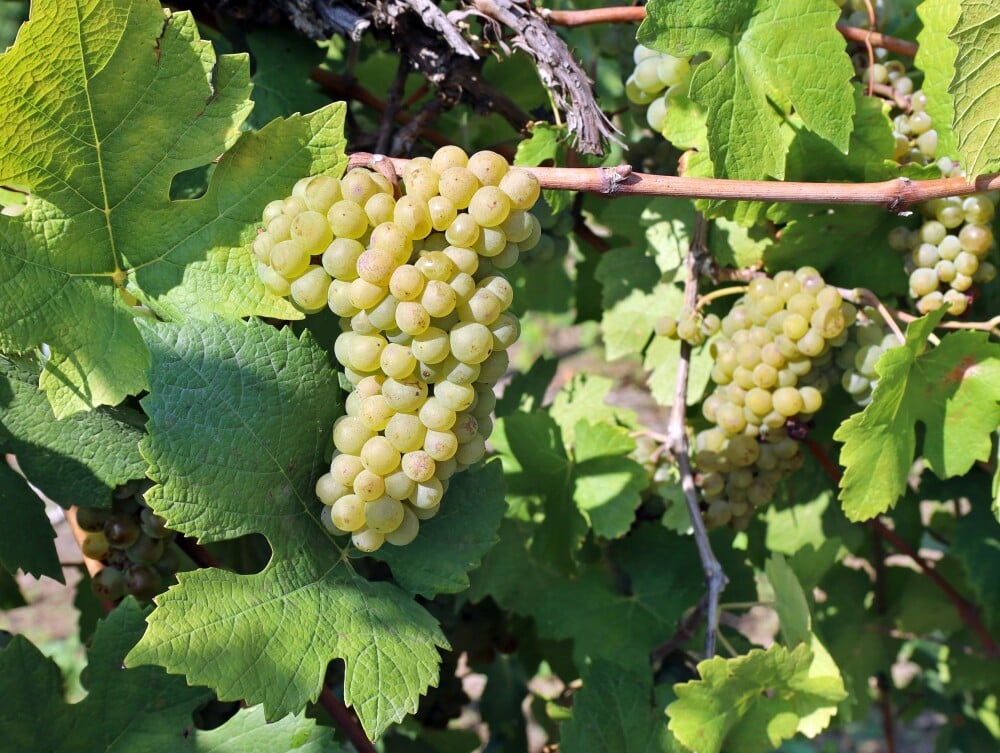
Pinot Blanc
Pinot Blanc, a white mutation of Pinot Noir, is primarily grown in Germany, northwest Italy (as Pinot Bianco), and in France (Alsace). Austria produces sweet wines like Trockenbeerenauslese as well as ice wine produced in Canada. Its elevated acidity renders it suitable for sparkling wine in California and ice wine in Canada.
Pinot Blanc is frequently seen as the counterpart to Chardonnay, sharing a medium to full-bodied wine style with commendable acidity and a favourable response to oak aging. Due to its nuanced character, Pinot Blanc is frequently employed in cuvée blends with other varieties. Notably, Pinot Blanc is more susceptible to botrytis compared to Chardonnay, attributed to the denser grape clusters. Therefore, it thrives in regions with deep, rocky soils.
Taste
Pinot Blanc typically presents aromas and flavors of stone fruit, with hints of pears, apples, and lemon in well-made versions. With aging, nutty undertones may develop.
Other
The grape is notably more fertile than other Pinot varieties and consistently delivers reliable yields each growing season.
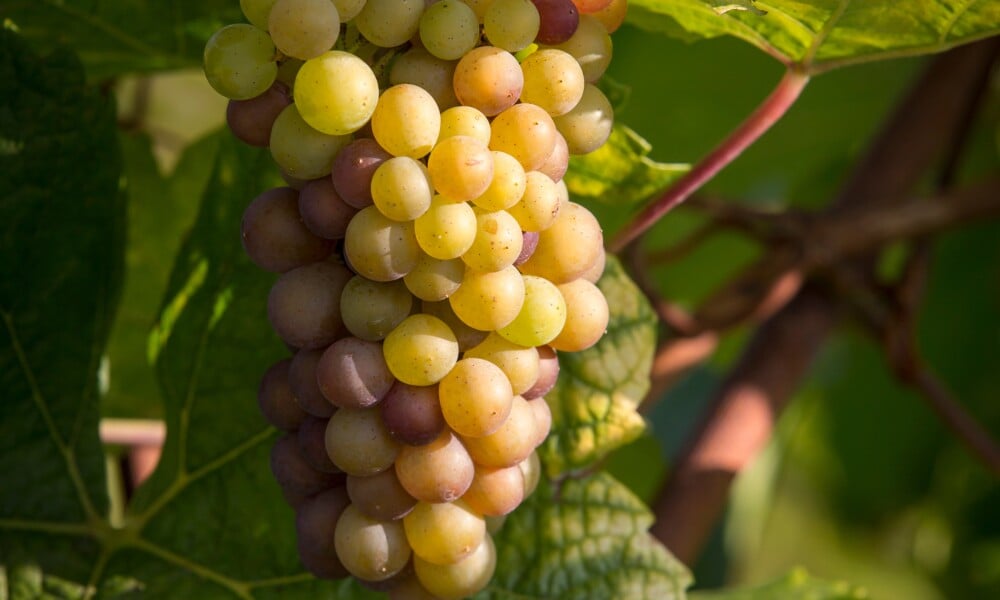
Pinot Gris
This grape is a mutation from the red pinot noir and family of the pinot blanc. It grows in relatively cool regions. Pinot Gris is the same grape as Pinot Grigio but usually grown in France.
Taste
The pinot gris wine has an average acidity. The most wines are quite modest in smell and taste. White fruit (peach, lemon), gravel/mineral accents and spiciness are characteristic flavor elements. Some producers make highly concentrated pinot gris wines (both dry and sweet), with more complex elements.
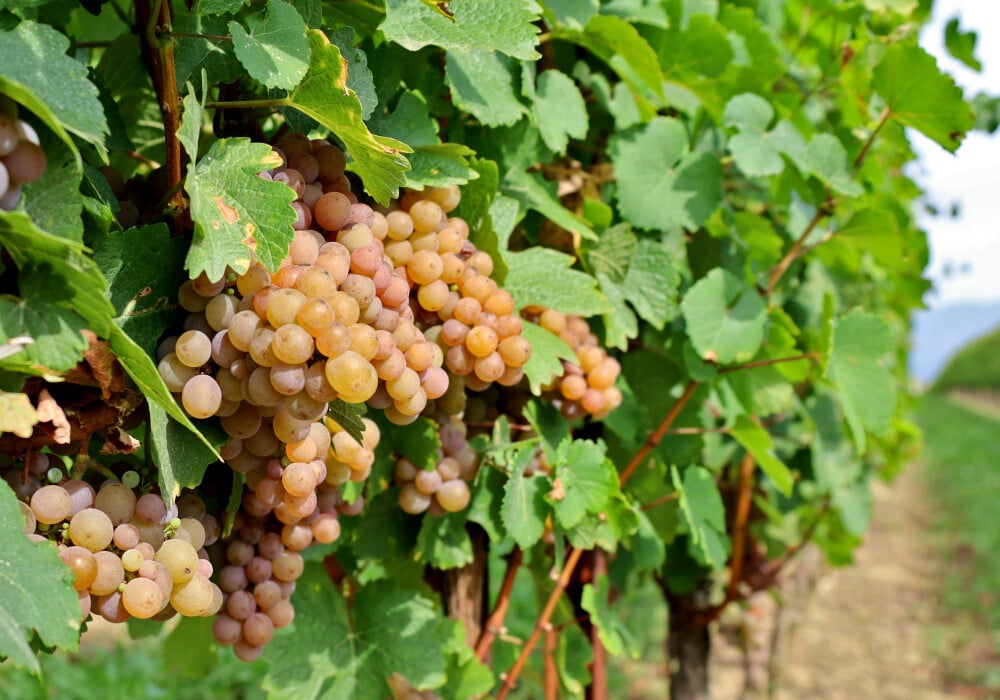
Pinot Grigio
This grape is a mutation from the red pinot noir and family of the pinot blanc. It grows in relatively cool regions. Pinot Grigio is the same grape as Pinot Gris but usually grown in Italy.
Taste
The pinot gris wine has an average acidity. The most wines are quite modest in smell and taste. White fruit (peach, lemon), gravel/mineral accents and spiciness are characteristic flavor elements. Some producers make highly concentrated pinot gris wines (both dry and sweet), with more complex elements.
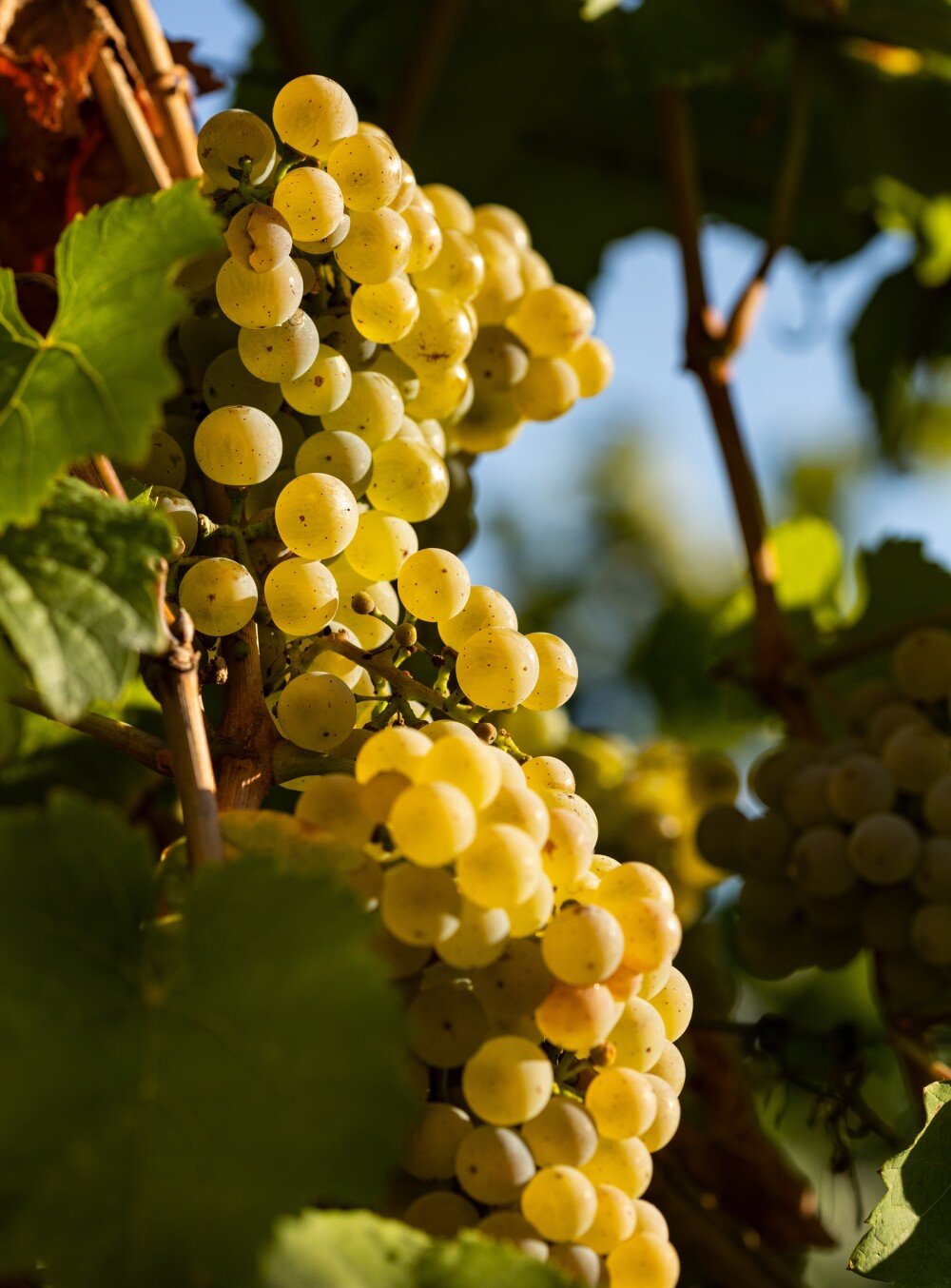
Riesling
The riesling likes a cool climate, is easy to cultivate and has a rich yield. The grape ripes slowly and relatively late. In addition to the chardonnay, the riesling is also called a noble grape: it can produce the very best and most expensive wines in the world. Riesling wines can be very simple fresh wines when harvested early. But also very concentrated and extremely complex when harvested later, resulting in sweet(er) wines with for example sweet eiswein harvest in winter.
Taste
Just like the sauvignon blanc wines, the riesling wines can be refreshing when having higher acidity: citrus flavours dominate. In the sweeter varieties, other fruit tones (pear, tropical fruit appear. The riper (older) riesling wines often develop a petroleum-like smell, which is very characteristic.
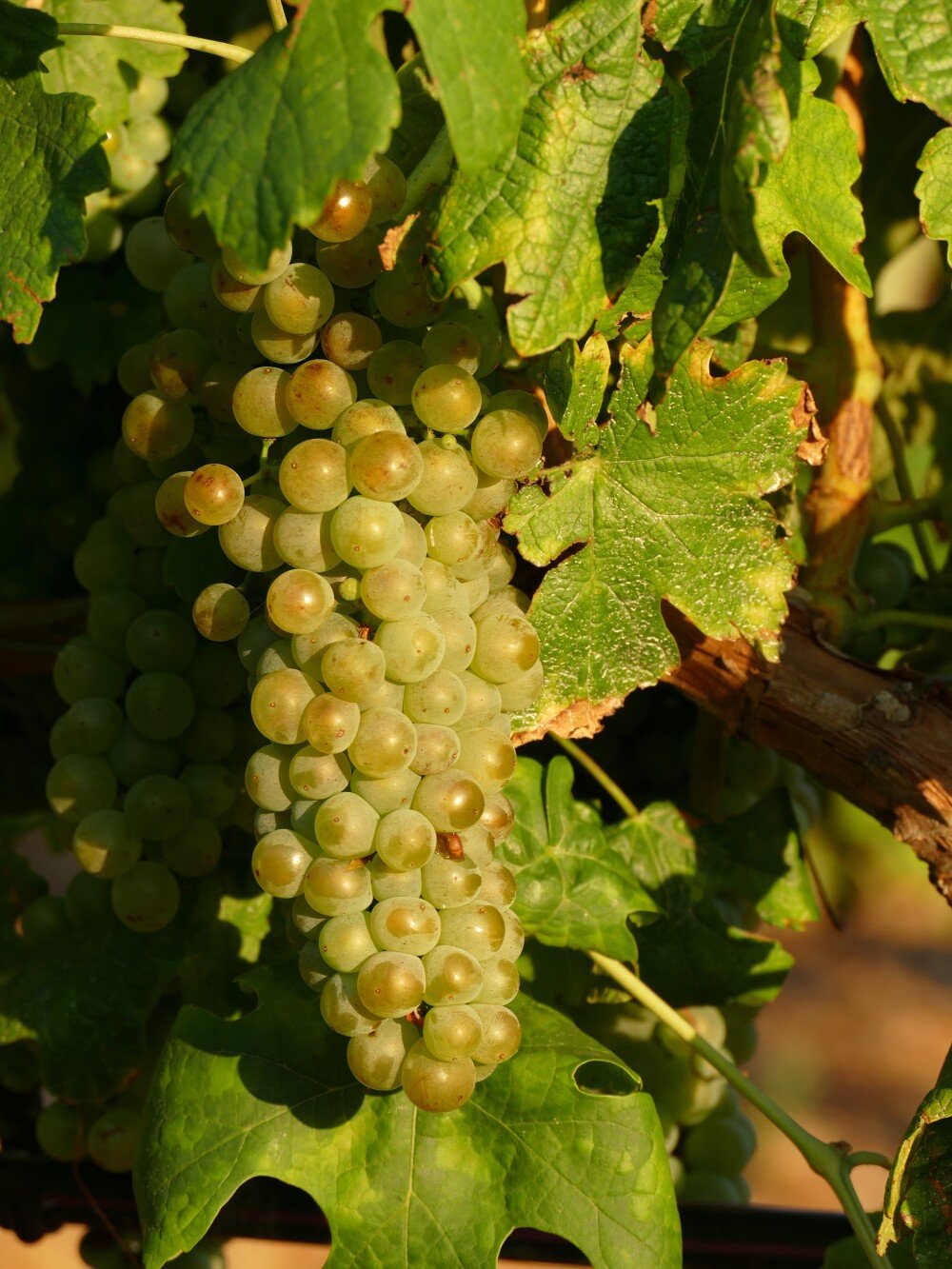
Roussanne
Roussanne originates from and is primarily planted in the northern Rhône Valley. It is traditionally blended with Marsanne, and these are the sole white variety permitted in Crozes-Hermitage, Hermitage, Saint-Péray, and Saint-Joseph wines, and one of the six allowed in the renowned white wines of Châteauneuf-du-Pape.
Roussanne is mostly found in southern France and blended with Grenache Blanc, Marsanne and sometimes Viognier. Blending with Marsanne enhances aromatic intensity, complementing its richer structure.
Taste
Roussanne offers abundant aromas and flavors with pronounced acidity. Its floral, fruity profile, featuring notes of honey and apricot, contributes to its elegant aromatic complexity.
Roussanne is similar to Viognier both featuring rich, oily textures and spiced, apricot flavors.
Other
Roussanne faces cultivation challenges due to oidium susceptibility and compact bunches promoting rot. Roussanne thrives in France's warm, southern regions, benefiting from ample sunlight for full maturity.
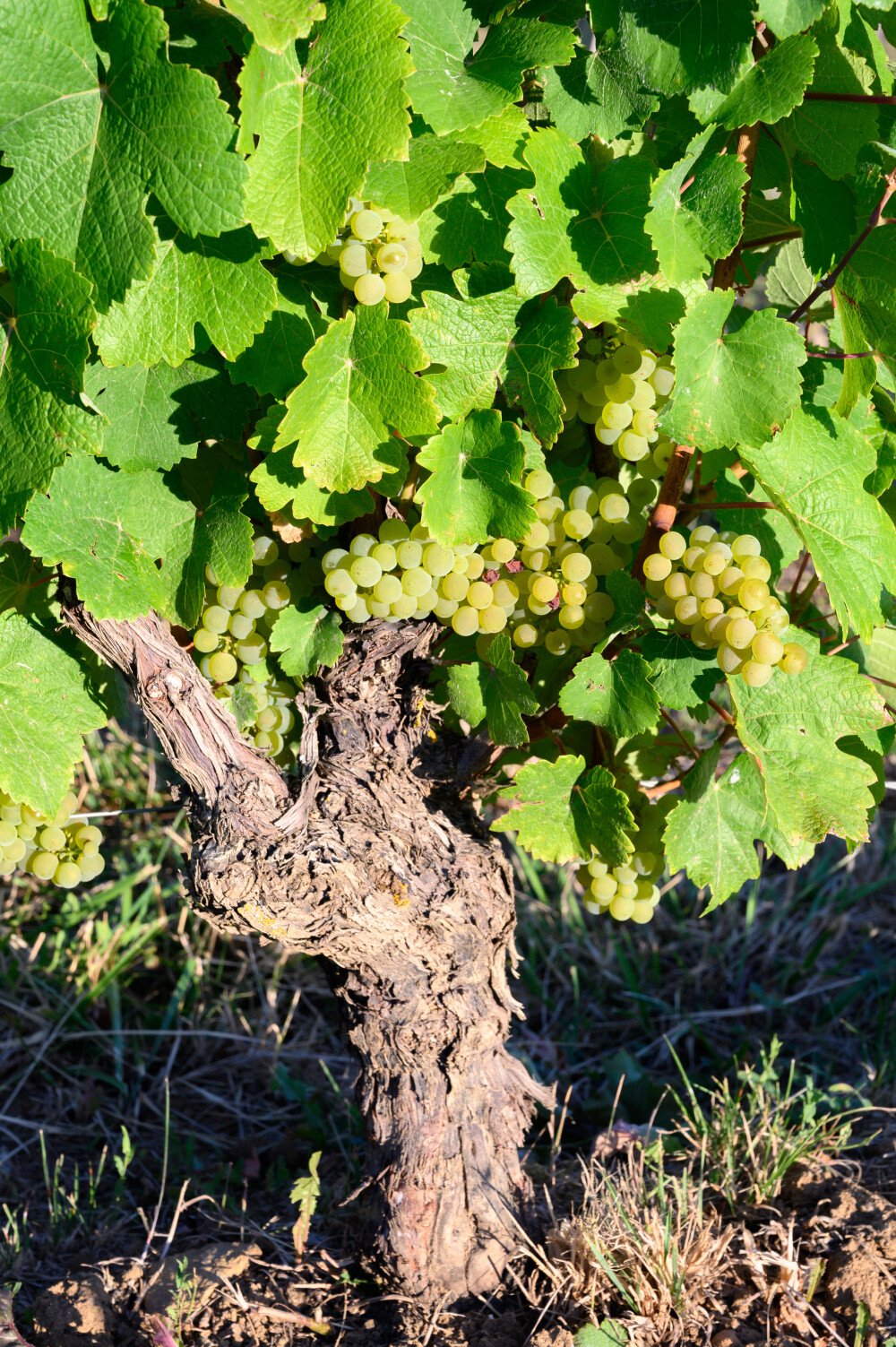
Savagnin
The Savagnin grape is a white variety originating from the wine region of in sub-alpine France, where cold temperatures and distinct clay-like soils prevail.
Its genome is relatively unstable compared to nearby grape varieties, leading to confusion with contemporary white varieties like Traminer, Frakisch, and Paien grown in adjacent regions. The Savagnin grape exhibits notable similarities to other varieties such as Sauvignon Blanc.
Savagnin is a late-ripening grape with robust and notable acidity. With its thick skins the grape is resilient rot and excels in grey marl soils, producing wines with significant aging potential.
Taste
Generally, it has a gently floral and citrus profile. Savagnin blends exhibit aromatic richness and complexity.
Other
In Jura, blending of the Savagnin grape typically involves Cémant du Jura and Macvin du Jura, occasionally incorporating Chardonnay in still wines. Vin Jaune, known as "yellow wine," is produced from the Savagnin grape.
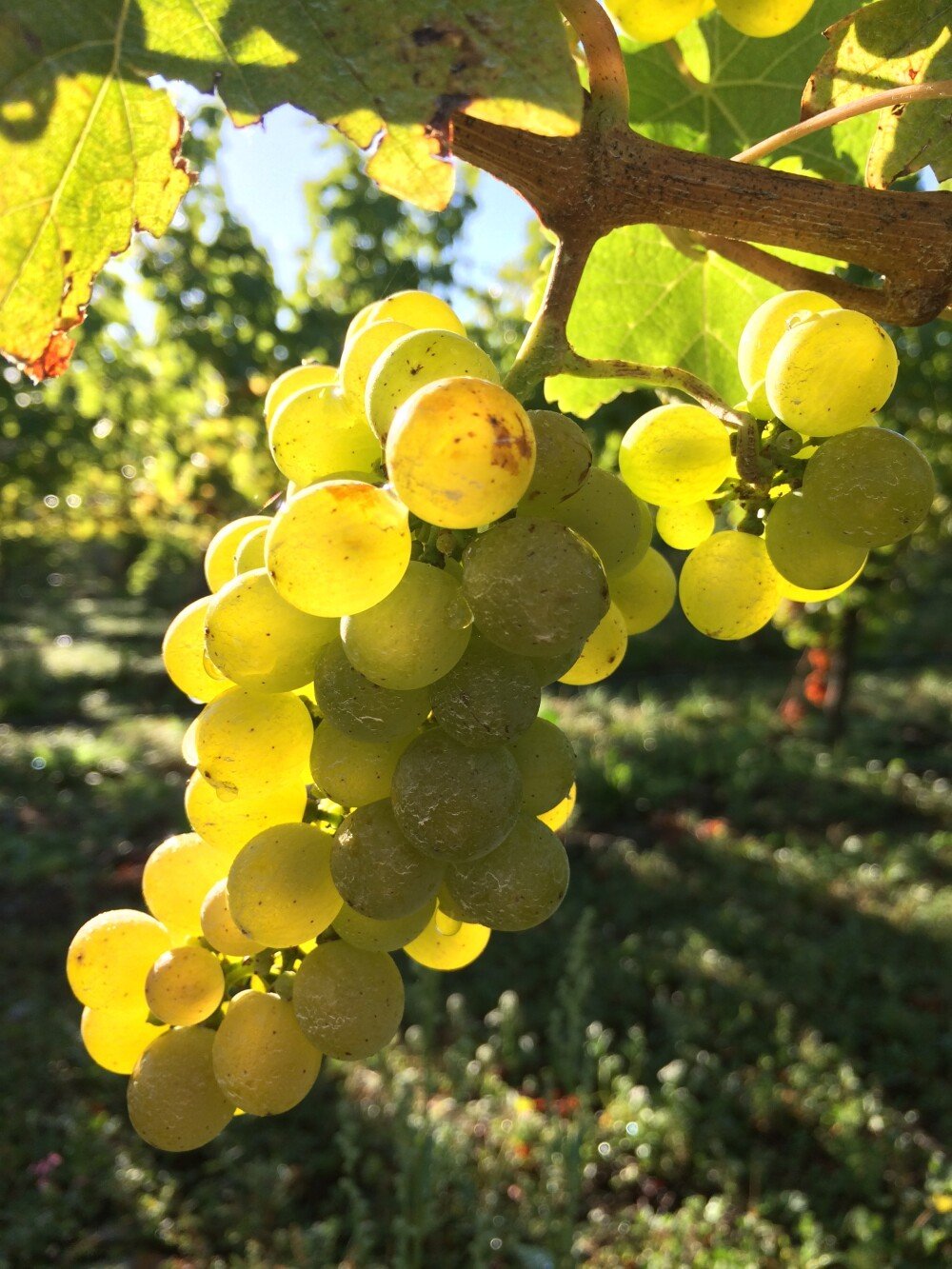
Sauvignon Blanc
This grape is less easy to grow than the chardonnay. Due to the rapid growth, pruning is good, otherwise the grape vines are overshadowed and the grapes are not ripe properly. With too much sun, the grape loses its acidity and thus its freshness.
Taste
Due to the acidity and aromas citrus fruit (grapefruit, lemon, green apple) and vegetable-like elements (asparage), as well as freshly cut grass, sauvignon blanc wines are refreshing. More mature sauvignon blanc sometimes develops a boxwood aroma, which is very characteristic. In warmer sauvignon blanc develops mainly tropical fruit elements.
Other
The sauvignon blanc grape is also used for making sweet wines (including Sauternes).
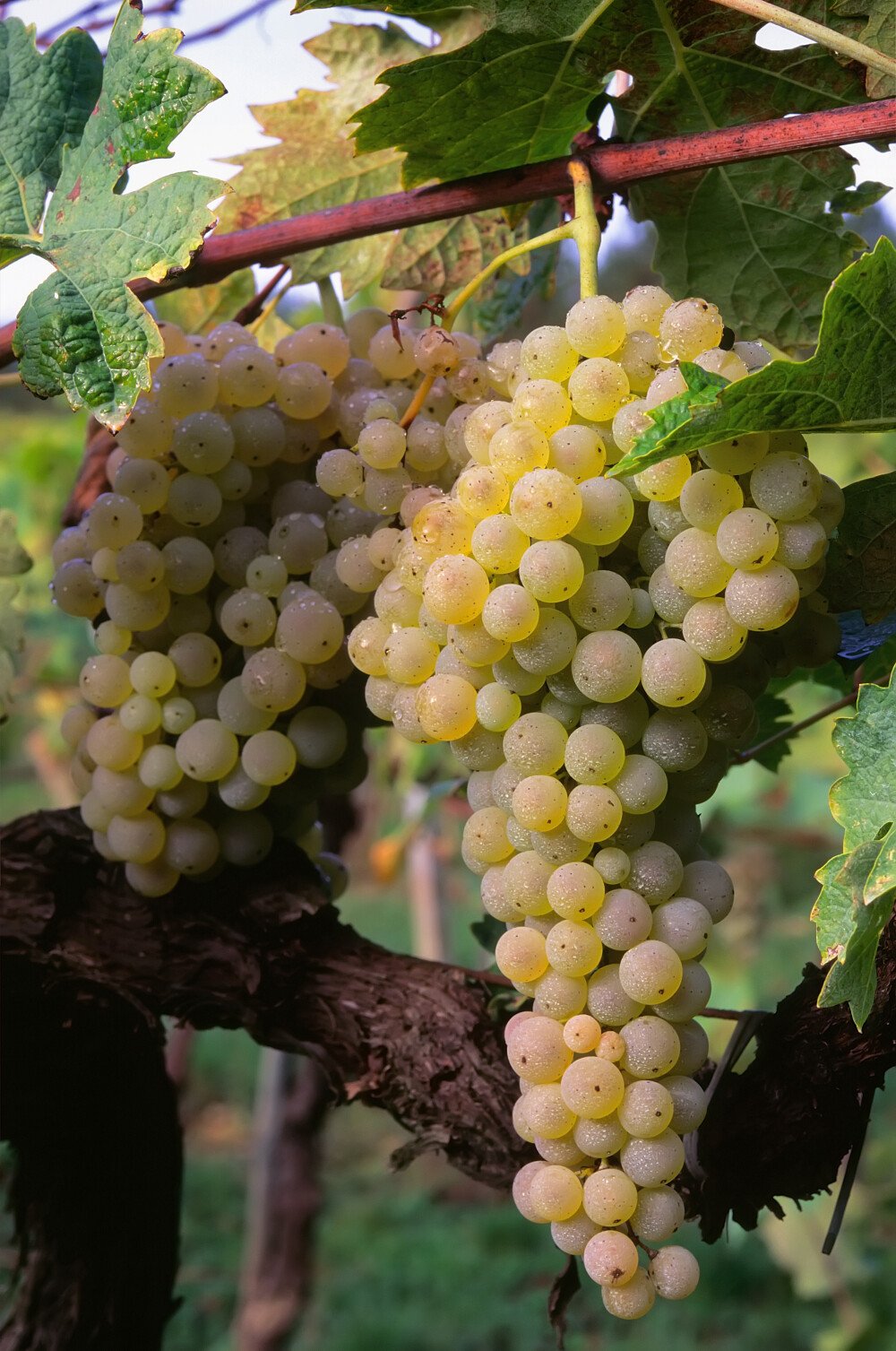
Trebbiano
Trebbiano refers to a collection of white grape varieties prominent in Italy and France, such as Trebbiano Toscano, Romagnolo, and Abruzzese, named after their regions. The broader Trebbiano family, inclusive of variations like Trebbiano d'Abruzzo and Trebbiano di Soave, collectively accounts for nearly one-third of Italy's overall white wine production.
Trebbiano wines resemble lighter Chardonnays and are labelled as table wines. Additionally, Trebbiano is crucial in brandy production, notably in Cognac and Armagnac regions, where the grape is called Ugnu blanc. It also shares a genetic profile with Garganega, prominent in Soave wine. It is recommended to consume promptly, as Trebbiano wines do not exhibit significant aging potential.
Taste
Trebbiano typically yields wines characterized by neutrality with a refreshing quality, and result in a light-bodied wine marked with high acidity. They exhibit subtle citrus aromas with hints of almond on the finish.
Other
Trebbiano grapes, are occasionally fermented with their skins, akin to red wine grapes.
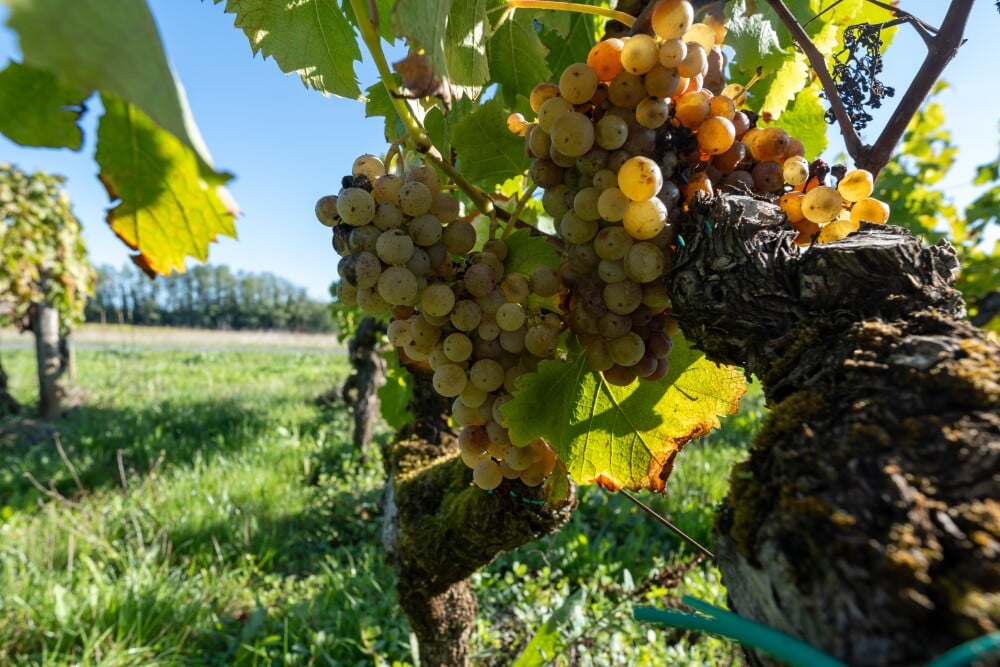
Semillon
Sémillon is cultivated in southwestern France. Sémillon exhibits versatility, ranging to various climates spanning from warm to cool. Therefore, it allows for the production of a spectrum of styles, ranging from Riesling-like crispness to Chardonnay-like richness, and even extends to the crafting of dessert wines. Its also widely planted in cool climates like New Zealand, South and North America, Eastern Europe, and South Africa.
Notably appellations where the grape is grown are in the appellations of Barsac ass wel as Sauternes, like for example at the best Sauternes Chateau d’Yquem.
Taste
Blending with Sauvignon Blanc yields dry, crisp white wines. In Sauternes and Barsac, these blends produce dessert wines characterized by flavors of orange peel, citrus, and honey.
Often, Semillion has a secondary role in wine production when looking outsite of the region of Bordeaux. Unblended Semillon, notably found in Australia, exhibits a dry, well-structured profile with rich fruitiness. Extended maturation enhances additional aromas of toasty spices, musk and vanilla.
Other
Sémillon frequently forms a blend with Sauvignon Blanc globally, commonly referred to as "White Bordeaux Blends’’. However, the aromatic profile of Sémillon is comparatively subdued compared to Sauvignon Blanc.
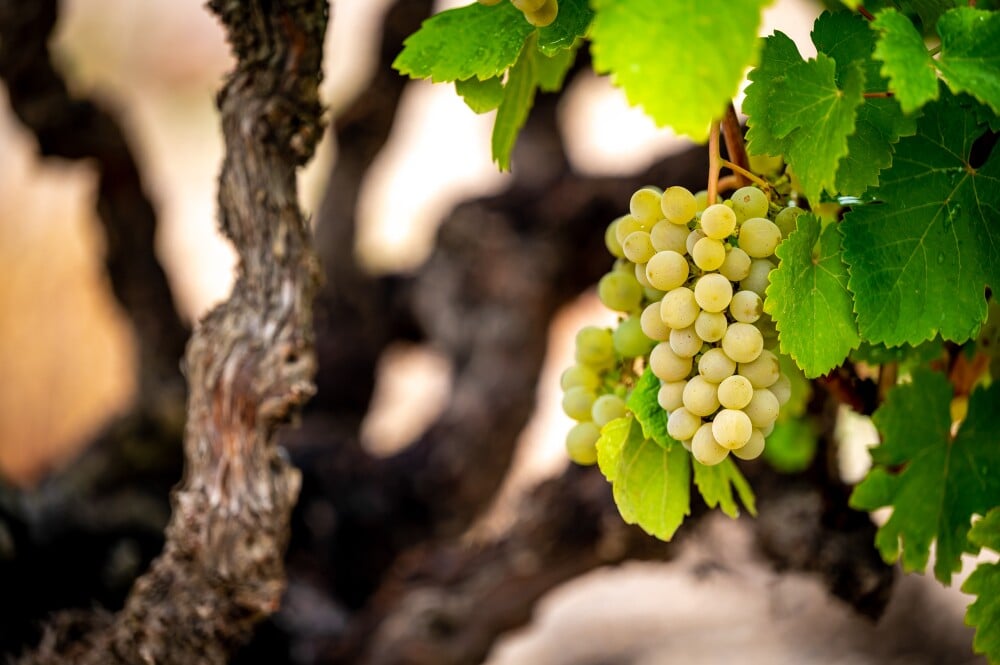
Verdejo
Verdejo, a prominent white wine grape, flourishes in Spain's Rueda region, where it's the most widely grown variety. With medium to high acidity, it's key in the region's sparkling (Rueda Espumoso) and fortified wines. Often likened to Sauvignon Blanc, Verdejo stands out, either solo or blended with Viura or Sauvignon Blanc.
Its best expression comes from Rueda's dry, continental climate, benefiting from temperature shifts and poor soils. While there are experimental plantings in Australia and California, global cultivation of Verdejo remains limited compared to its prevalence in Rueda.
Taste
Verdejo yields nuanced white wines with lime, apple, and can be complemented by grass, and fennel aromas. Its finish offers a subtle bitterness akin to a crunchy texture. With aging, it develops toasted almond notes and lively acidity, improving over years in the bottle.
Unlike many white wines, Verdejo exhibits ongoing improvement through several years of bottle-aging and can develop flavors of toasted almond notes and lively acidity, improving over years in the bottle.
Other
Verdejo, known for its delicate, thin skin, requires meticulous winemaking to avoid oxidation and maintain its aromatic freshness. Esteemed for herbaceous, nutty traits, full-bodied Verdejo wines boast balanced acidity and aging potential. In Rueda, winemakers are increasingly experimenting with barrel fermentation, infusing subtle oak and vanilla notes into Verdejo's signature fresh fruit flavors.
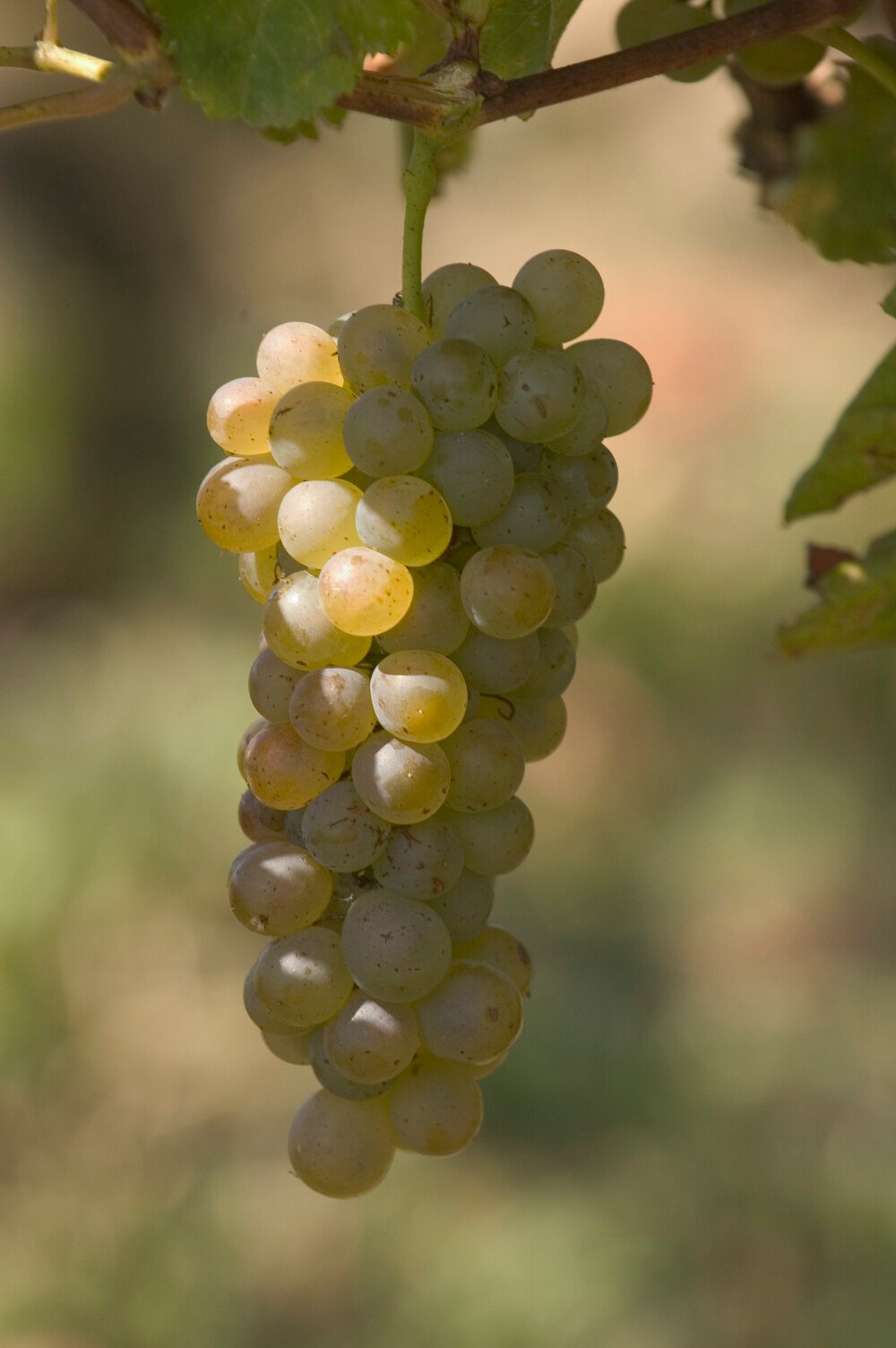
Viognier
This grape is mainly found in the northern Rhône region. The viognier is not an easy-to-grow grape. The proceeds per hectare is low and the grapes are susceptible to rotting. The grape is not suitable for long maturation. The viognier grape is also used in blends of red wines, in order to red wine to give extra suppleness.
Taste
The wines are full and round, there is a lot of concentration. The wine can also develop a lot of alcohol and very own aromas of pear, peach, mango, apricot and jasmine/honeysuckle.
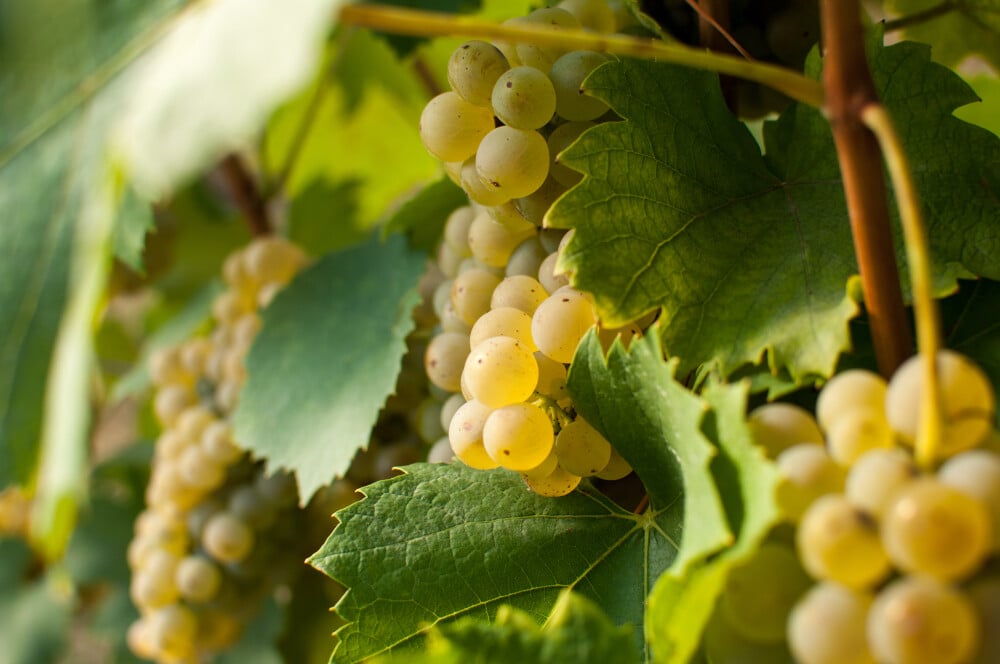
Welschriesling
Welschriesling, a versatile white-wine grape from central and eastern Europe, excels in producing various quality wines. Its peak is seen in southeast Austria's Neusiedlersee region, renowned for richly sweet Trockenbeerenauslese wines.
Thriving in dry, warm climates with magnesium-rich soils, it matures late, yielding high-acid, delicately aromatic wines. While typically light and neutral, it thrives in warm, humid vineyards near Lake Neusiedl, benefiting from noble rot botrytis. Its medium-sized grapes boast densely packed berries, thin skin, high juiciness, and a yellowish-green hue.
Taste
Dry Welschriesling wines often display a refreshing character with prominent green apple and citrus aromas. Conversely, Beerenauslese and Trockenbeerenauslese varieties feature exotic bouquets and delicate honey notes, accompanied by a notable acidity level.
Other
Often blended with Chardonnay for depth, its origin sparks debate. Despite its name, it's unrelated to German Riesling, with "Welsch" implying a non-Germanic origin.
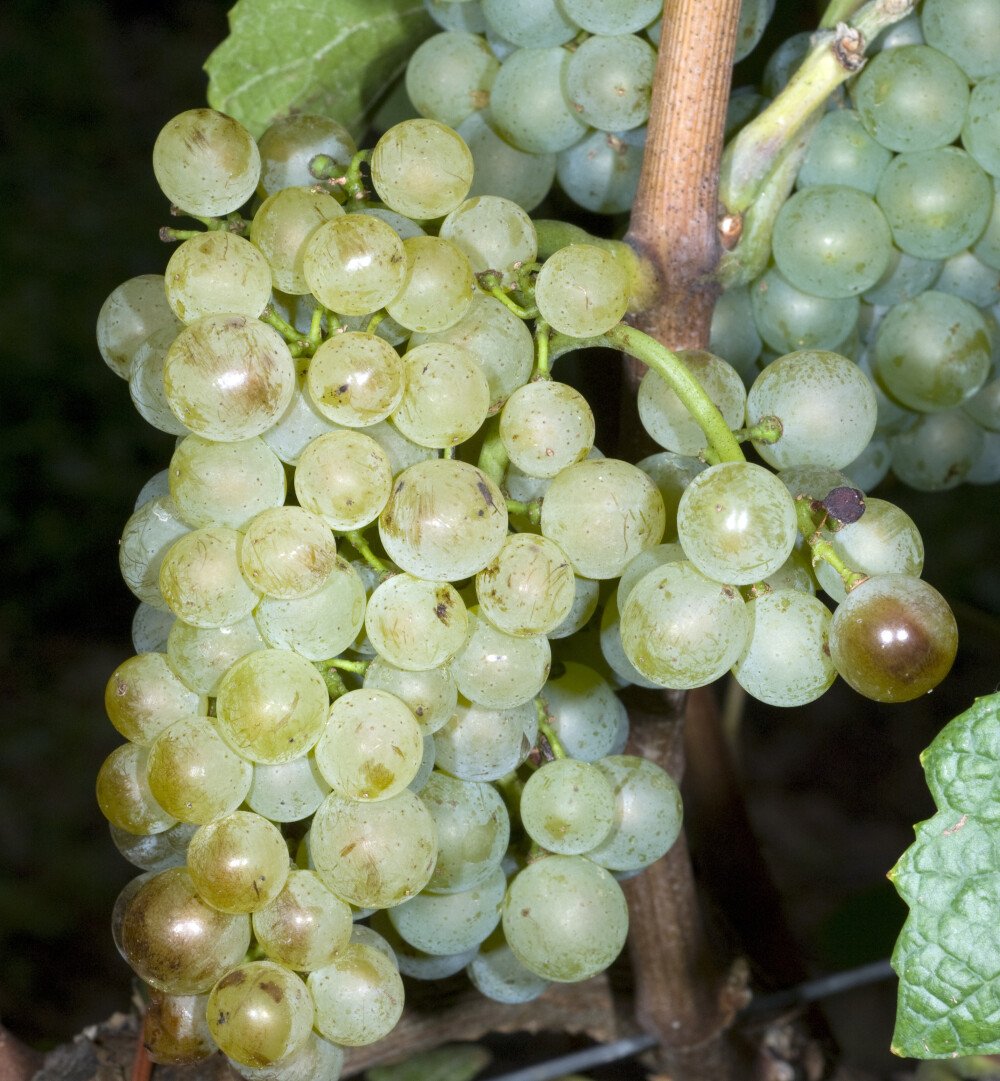
Weissburgunder
Weissburgunder, German for Pinot Blanc, originates from a mutation of Grauburgunder (Pinot Gris) and is descended from Spätburgunder (Pinot Noir). Despite its origins, it aligns more closely with Pinot Blanc in characteristics rather than Pinot Gris.
In Germany, Weissburgunder is cultivated across all 13 wine regions, with a predominant presence in southerly areas. This varietal is typically defined by its dry nature, light profile, fresh acidity, and a body ranging from light to medium.
Taste
Common flavour notes include apple, pear, peach, and subtle floral hints. Younger wines have a blossomy expression and lively acidity, whereas they are aged, they evolve with flavors of bread and nuts.
Other
Weissburgunder is lighter and drier than the French Pinot Blanc. The grape exhibits versatility comparable to Riesling, producing a diverse range of wine styles, from full-bodied to light and crisp, including sparkling and dessert wines. The grape accommodates various winemaking techniques, allowing for aging in both oak and stainless steel, contributing to its multifaceted appeal.
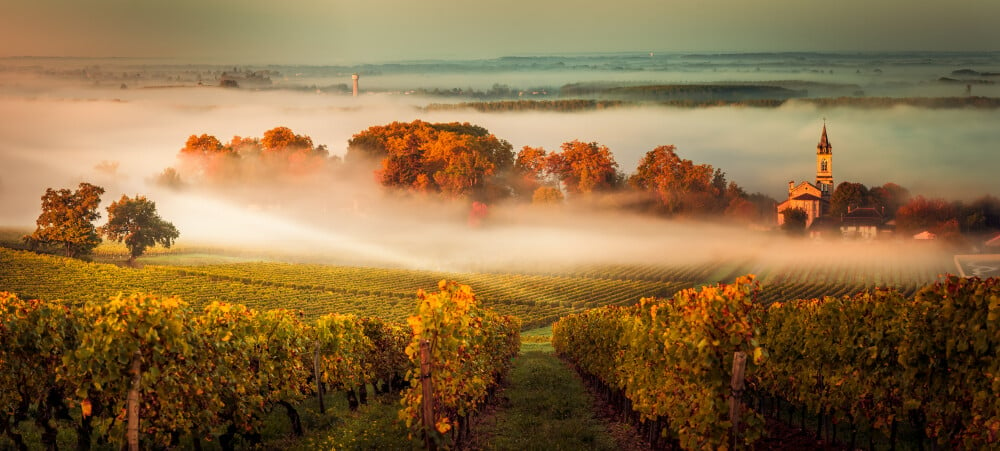
Bordeaux Blend
In Bordeaux all great wines are blends of grapes. In some very rare cases a wine is a cepage: some vintages of Petrus are 100% Merlot. The typical Bordeaux grapes are Cabernet Sauvignon, Merlot, Cabernet Franc, Petit Verdot and Malbec. Blends are made from these grapes, sometimes even Carmenere is included.
Left bank blends are dominated by Cabernet sauvignon, right bank blends are dominated by Merlot.
White wines from Bordeaux are also blends in most cases, made from Sauvignon Blanc and Semillon and occasionally from Muscadelle and Sauvignon Gris.
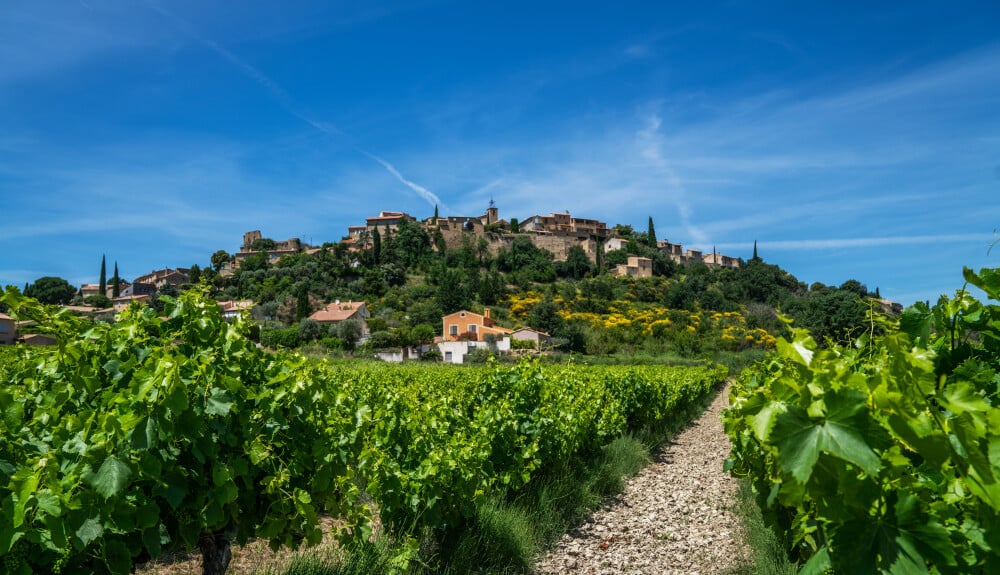
Rhone Blend
Typical blue Rhone grapes are Syrah, Grenache, Mourverdre and Cinsault. Typical white Rhone grapes are Viognier, Marsanne and Roussanne. A lot of Rhone wines are blends, some red wines even contain white grapes. In Chateauneuf du Pape wines may consists of 18 different grape varieties.
Other Rhone grape varieties are Counoise, Muscardin, Picpoul, Terret, Muscat, Clairette, Vaccarese, Bourboulenc.
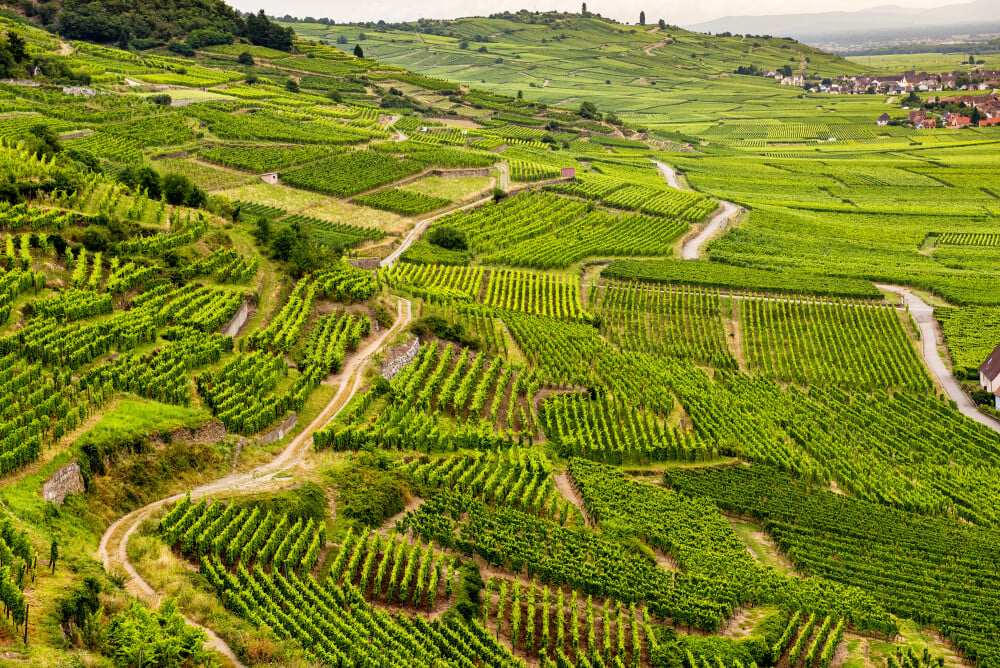
Alsace Blend
A lot of wines from Alsace are single grape wines. But some of the most distinguished wines from the Alsace are blends of well known grapes like the pinot family (pinot noir, pinot blanc, pinot gris), muscat, riesling, gewurztraminer, auxerrois, sylvaner.
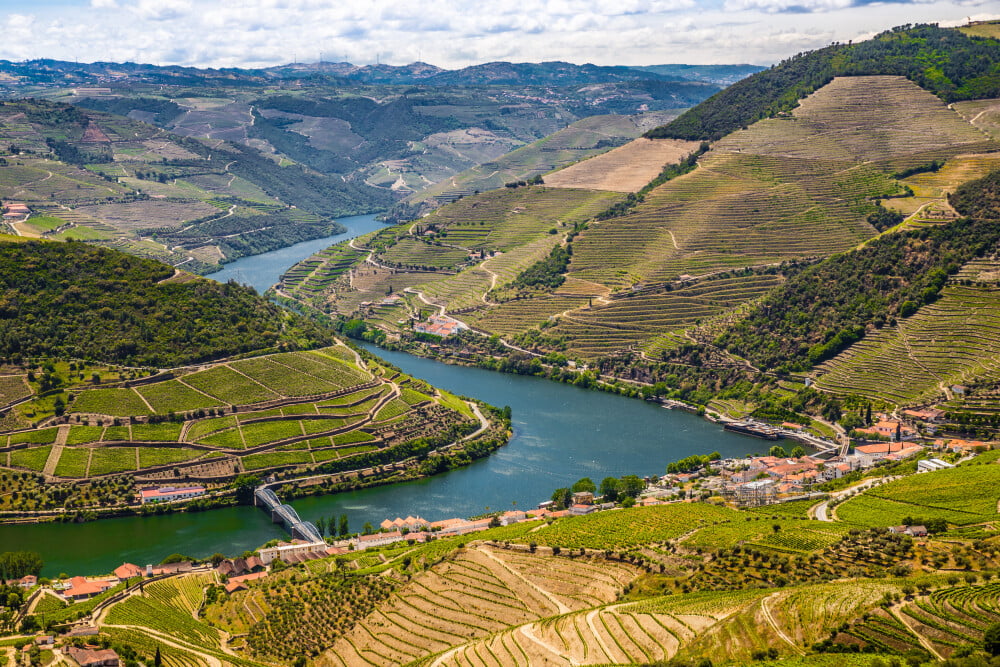
Port Blend
Port wine consists of a blend of several grape varieties. All grapes are grown in the vineyards of the Douro Valley.
Typical grape varieties are: Tinta Roriz, Touriga Franca, Touriga Nacional, Tinta Cao, Tinta Barroca, Malvasia, Moscatel, Gouveio, Viosinho.
